-
Plant Name & Description
Botantical Name
-

Pacific Sunset Maple Acer truncatum x platanoides 'Warrenred'
The glossy green leaves of this maple shine through the heat of the summer before showing off with a dazzling burst of color in the fall. A hybrid of the Norway and Shantung maples, this tough and compact shade tree is resistant to most pests and diseases, including Japanese beetles, and can handle a wide range of conditions.
-
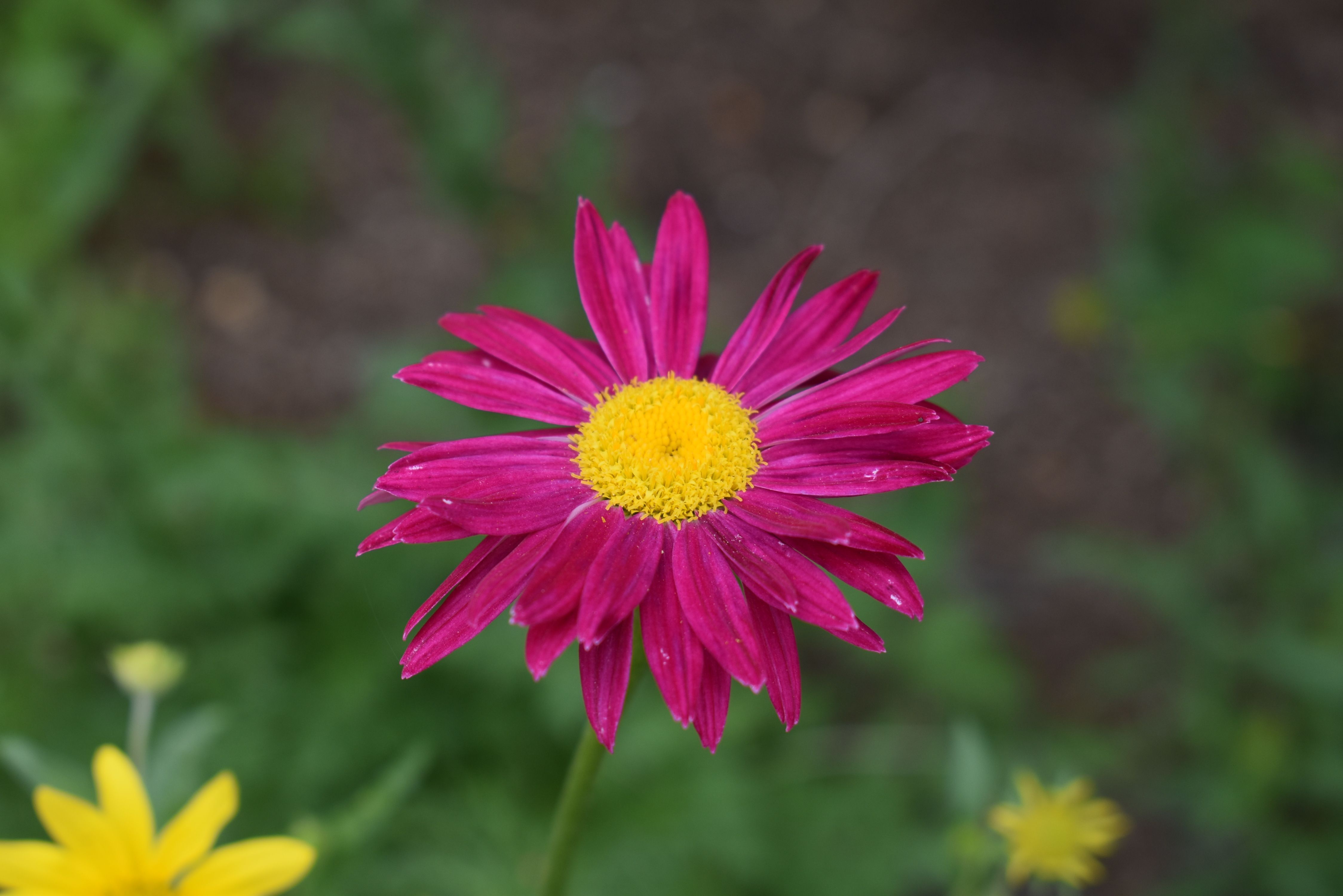
Painted Daisy Tanacetum coccineum
Upright growing herbaceous perennial. Lacy green leaves grow in thick clumps with red to dark-pink flowers growing on tall stems. Blooms profusely in late-spring and will rebloom in the fall if dead flowers are removed. Flowers perform well as cut flowers and will work in bouquets. Prefers organic soils and plenty of water.
-
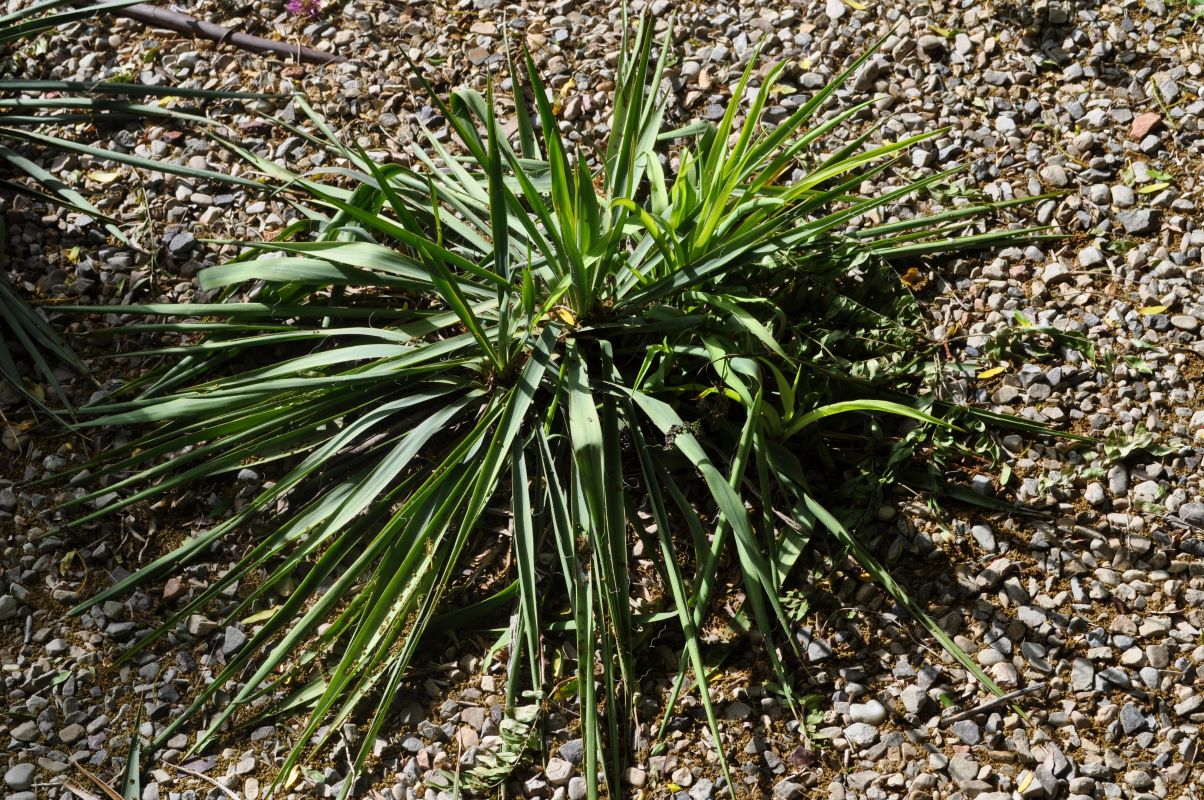
Pale Leaf Yucca Yucca pallida
This yucca’s rosette form is stemless. It has bluish-green leaves that are smooth and flexible. The leaves do come to a sharp point, but the flexibility of the rest of the leaf makes it a little safer than other varieties. The flowers are large, cream colored, and bell-shaped with a slight pale green center. It blooms best in full sun, but the foliage itself will grow in part shade.
-
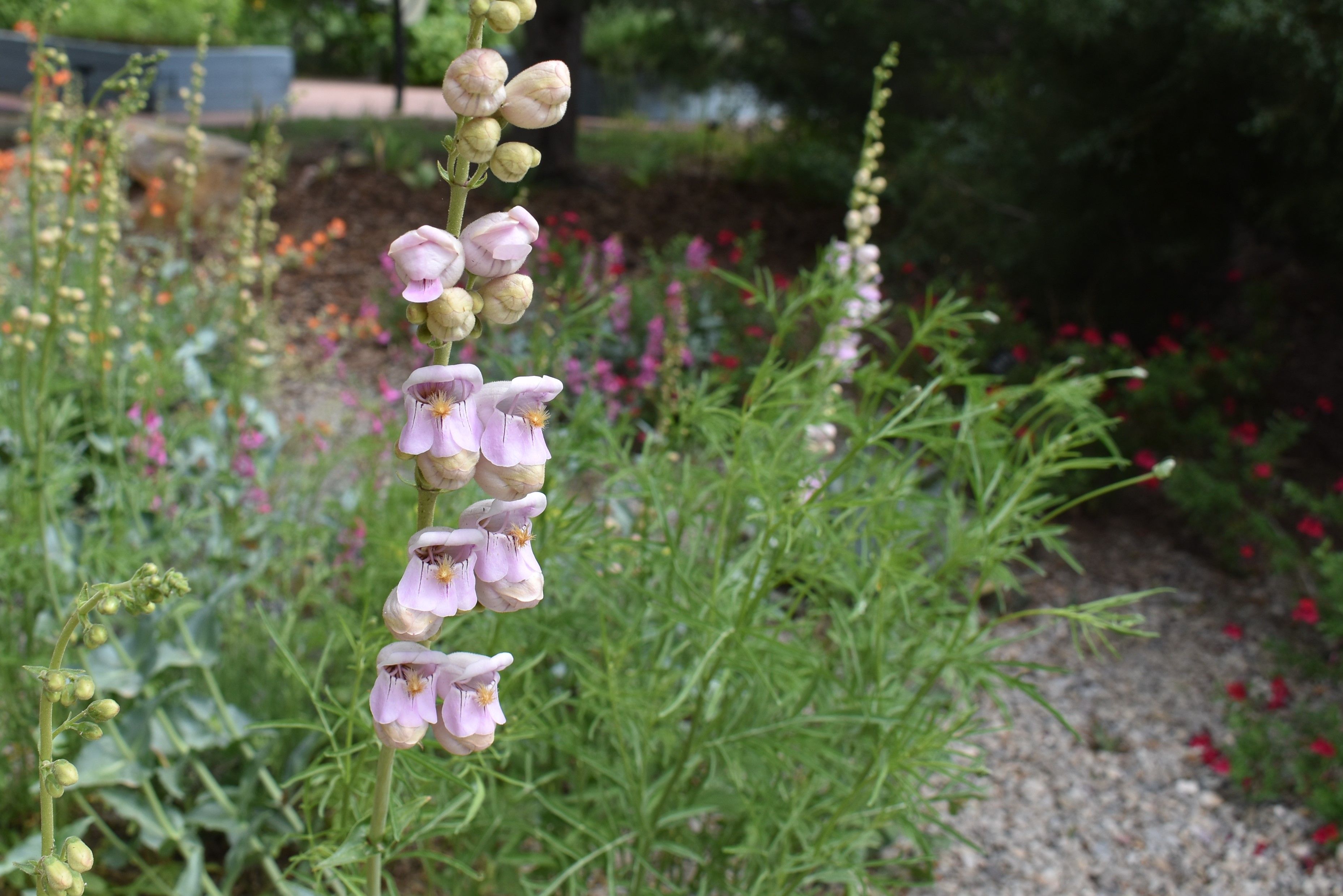
Palmer's Penstemon Penstemon palmeri
Upright herbaceous perennial native to the southwestern United States, with large light-pink flowers that bloom in clusters on tall spikes in early-summer. Waxy blue-green leaves grow on tall upright light-green stems sometimes tinged red. Grow in sandy or gravelly well-drained soils. Will not tolerate excess moisture and may suffer if smothered with mulch. Has a life-span of 3-4 years; after that time allow new seedlings to grow and take its place.
-
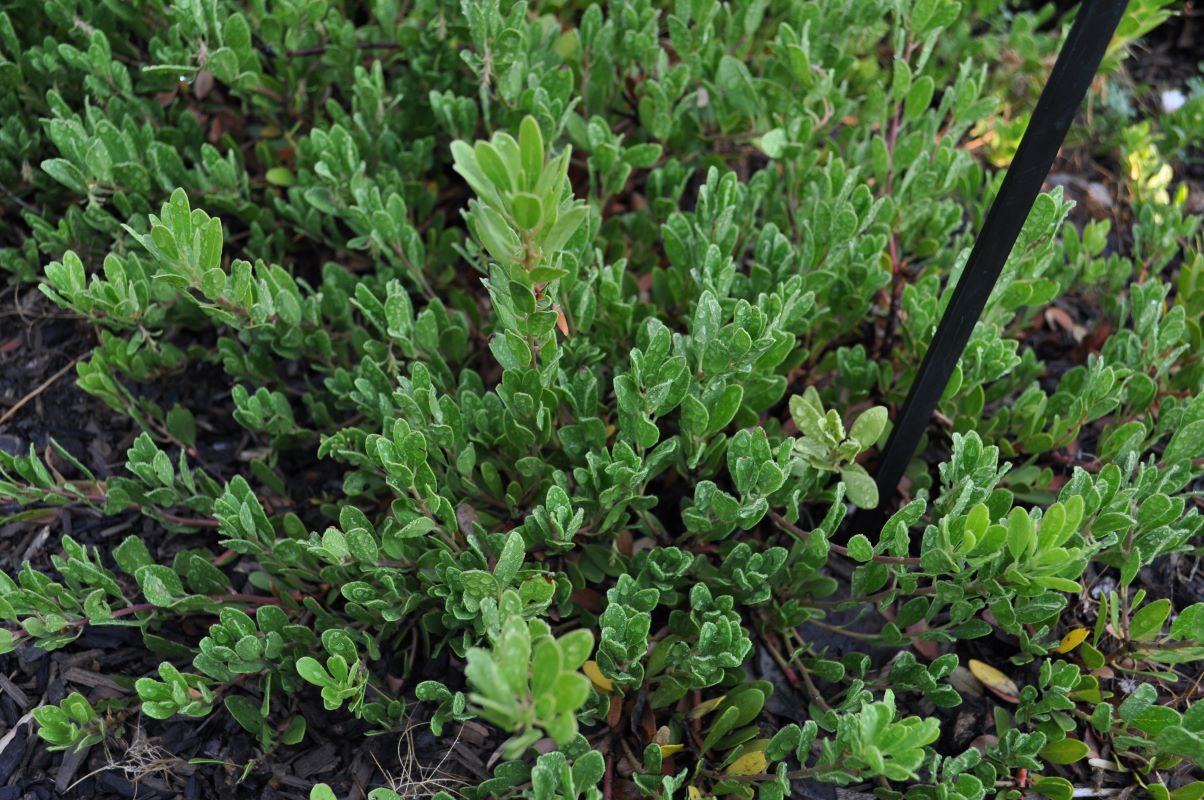
Panchito Manzanita Arctostaphylos x coloradoensis
A tough evergreen shrub, this naturally occuring hybrid was discovered in western Colorado. Its shiny, attractive green leaves are somewhat rounded and make a lovely carpet of foliage. White-pink flowers bloom in the spring, giving way to small red fruit. It prefers light soils, so be careful not to overwater in heavier soils.
-
Paperbark Maple Acer griseum
Small slow-growing deciduous tree with rounded form. Attractive papery cinnamon red bark exfoliates even on the smaller branches. Green trifoliate leaves with gray green undersides may scorch if the tree experiences extended periods of drought. Insignificant green flowers in spring lead to winged seed pods. Plant as a specimen tree. Due to difficulty with propagation it may be expensive to purchase.
-
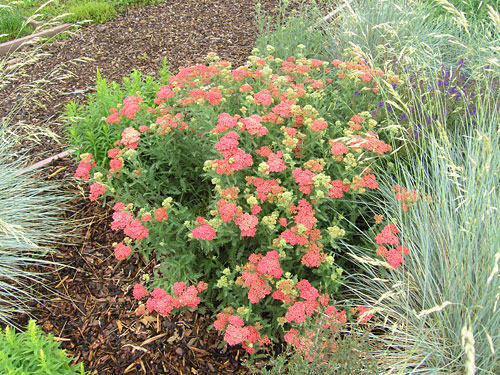
Paprika Yarrow Achillea millefolium 'Paprika'
Long-flowering, spreading, mat-forming perennial. Dusty red flowers can start blooming in late-spring and continue blooming throughout the summer. Fern-like foliage is slighty aromatic. Spreads easily by roots and by seeds. Grows well in many soil types but avoid especially heavy soils.
-
Parry's Agave Agave parryi
Succulent perennial native to south western United States and South America. Produces gray-green leaves in a basal rosette. Leaves vary in shape but are usually close to 15" long and 6" wide. Century Plants are monocarpic meaning that they will flower once in their life. This species may take 25-50 years to flower but when it does will produce a 15' tall inflorescence with with yellow to orange flowers. After flowering the plant will die. Can be propogated by offshoots, called "pups." Very drought tolerant.
-
Partridge Feather Tanacetum densum subsp. amani
Mound-forming semi-evergreen perennial with soft silvery feather-like foliage on downy white stems. Numerous yellow daisy-like flowers bloom in early-summer. Very tolerant of heat and drought. Requires well-drained soils. Great choice for planting in rock gardens and other sunny positions.
-

Pasque Flower Pulsatilla vulgaris
The violet-purple, bell-shaped flowers and finely-textured foliage of this perennial are covered in silky hairs. The flowers bloom on 6" stalks in early spring and pair well with other spring bloomers like bulbs. The leaves emerge in a rosette from a somewhat woody rootstock.
-
Pastor's Pride Lavender Lavandula angustifolia 'Pastor's Pride'
This twice-blooming English lavender has shown excellent cold tolerance. The purple-blue blossoms are large for lavender and bloom on spikes through the summer. The flowers can be deadheaded and dried and used in potpourri or herbal recipes. Deadheading will also promote a late-summer rebloom. It thrives in poor soils and can be quite drought tolerant.
-
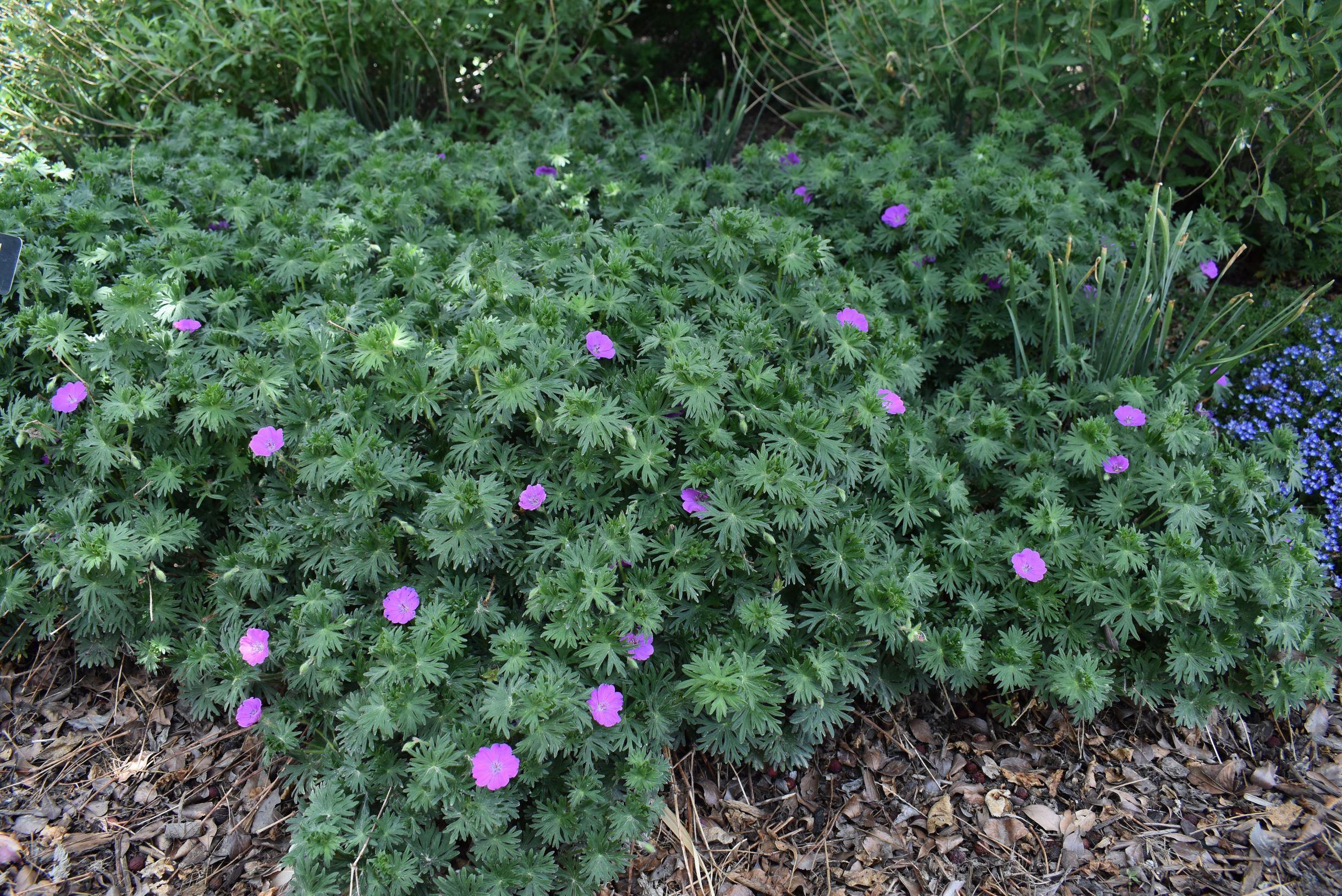
Patricia Cranesbill Geranium 'Patricia'
Mounding bushy perennial. Spring brings 5-petaled magenta flowers with black star-shaped centers. Large toothed leaves are mid to dark green. Cut back after bloom to promote a possible summer rebloom. Plants prefer moist and fertile soils but will tolerate drought and poor soils.
-
Pawnee Buttes Western Sand Cherry Prunus besseyi 'Pawnee Buttes'
Deciduous shrub with a groundcover growth habit. Branches spread out gracefully with slender green leaves that have a slight silver sheen to them. Pure-white flowers bloom in spring followed by dark red cherries that are preferred by birds, but edible to humans. Tolerant of poor soils and drought.
-
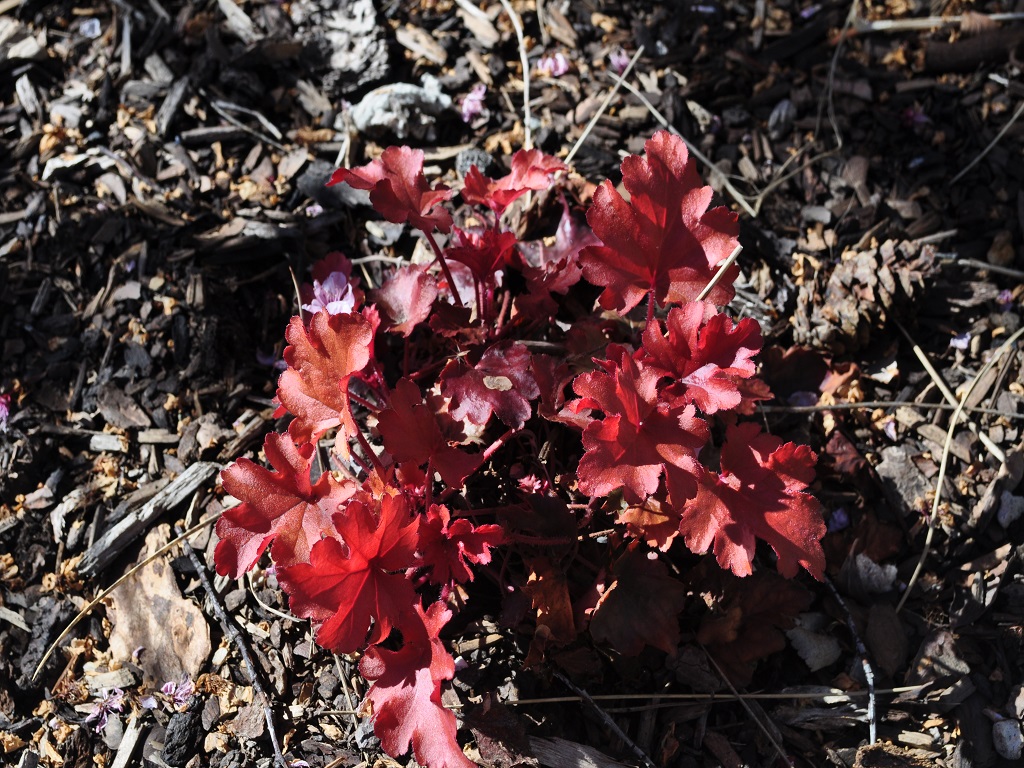
Peach Flambe Coral Bells Heuchera 'Peach Flambe'
This clump forming perennial creates interest spring to fall. Flaming red foliage has peach tones and turns to a deep cool purple when the temperature drops in the fall. The large heart-shaped leaves grow best with shade, but can take sun if they are given more water. Flower stalks rise in the summer with tiny white bell-like flowers.
-
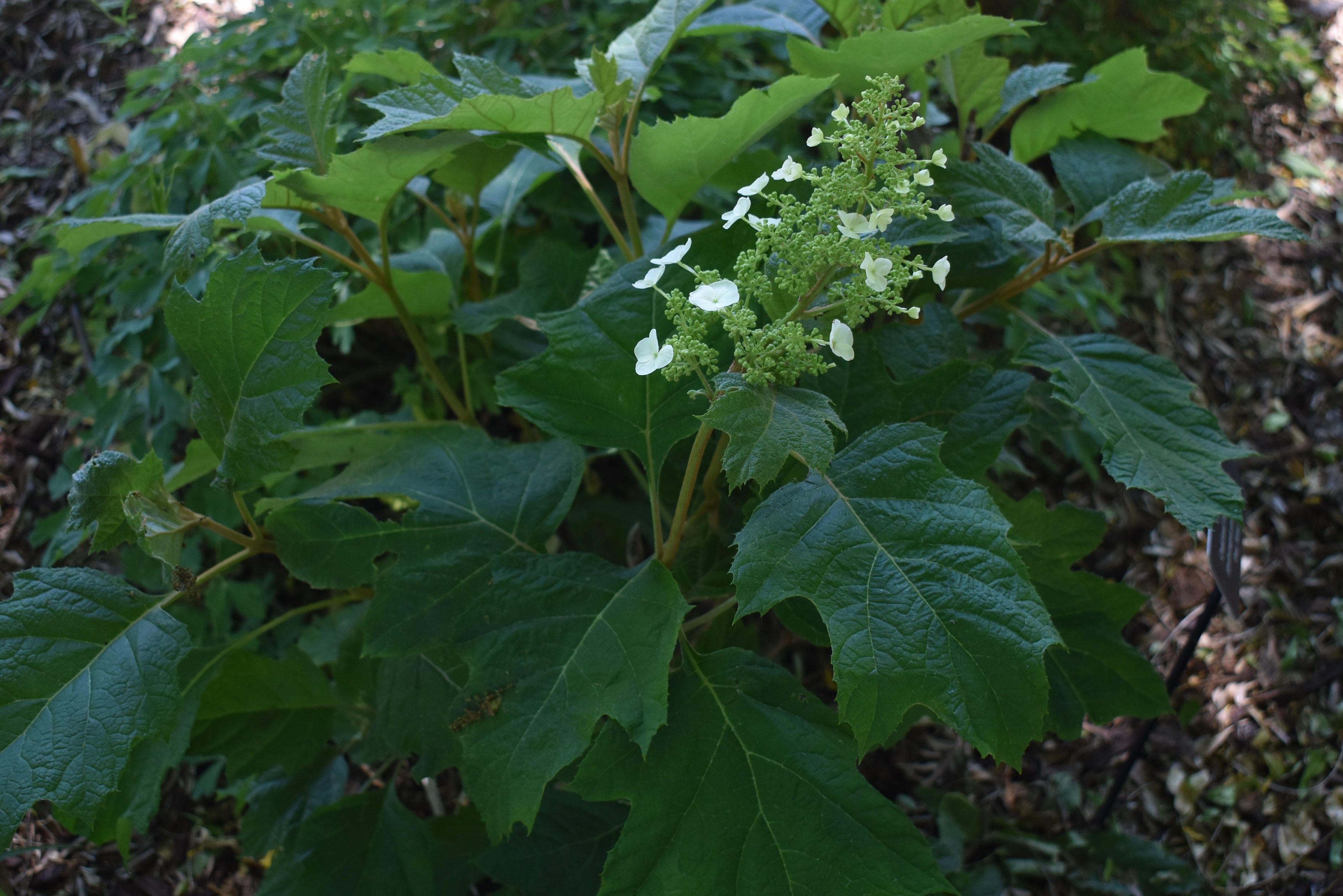
Pee Wee Oakleaf Hydrangea Hydrangea quercifolia 'Pee Wee'
As suggested by the name, this is a dwarf cultivar noted for its smaller stature, leaves and flowers. It blossoms in early-summer with panicles of white flowers that fade to pink and then brown as summer progresses. The leaves are deeply lobed, resembling oak leaves. Autumn brings red and orange hues to its foliage. It grows best in organic soils with moderate moisture.
-
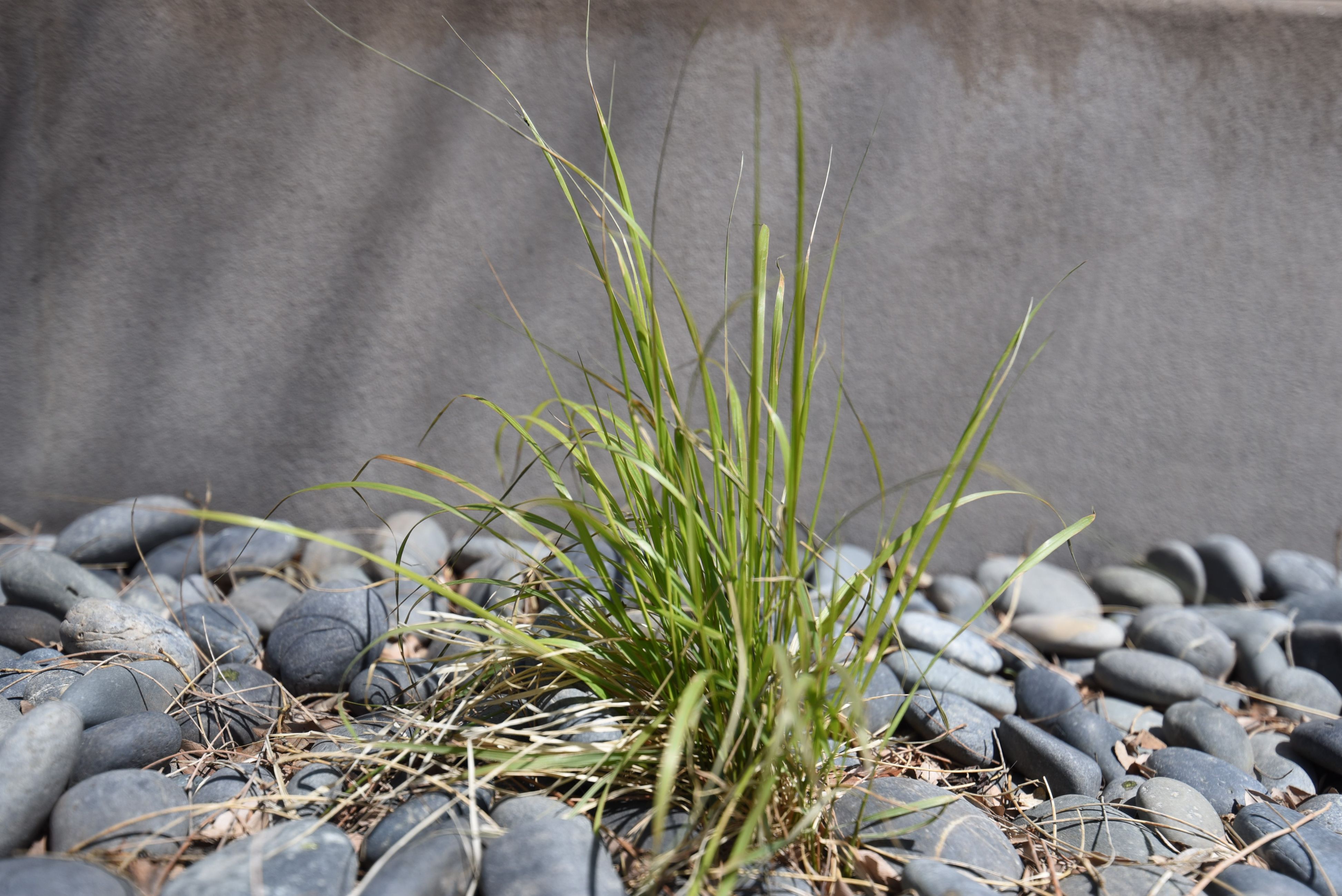
Pennsylvania Sedge Carex pensylvanica
A low-growing, grass-like perennial that features wispy, finely-textured mounds of arching mid-green foliage. This sedge can be found growing naturally in the thickets and dry woodlands of Eastern and Central North America. For landscapes, this is perfect for shaded areas needing a groundcover or lawn substitute. Large groupings spread quickly by underground rhizomes.
-
Peony Flowered Rose of Sharon Hibiscus syriacus 'Paeoniflorus'
Vigorous, multi-stemmed, upright, deciduous flowering shrub. Numerous showy, violet-pink, double flowers are borne throughout the summer. Attractive 3-lobed, coarsely toothed leaves grow on erect stems. Tolerant of heat, drought, and poor soils. Prefers fertile soils with moderate amounts of water.
-

Peppermint Spice Coral Bells Heuchera 'Peppermint Spice'
Frosty green foliage with silver and plum veins can add the perfect amount of color to those shaded areas within the landscape. The leaves create the perfect backdrop for the delicate, rosy-pink blossoms that sit high above the foliage in late spring to early summer. As the weather cools, the leaves take on warmer shades of red and orange.
-
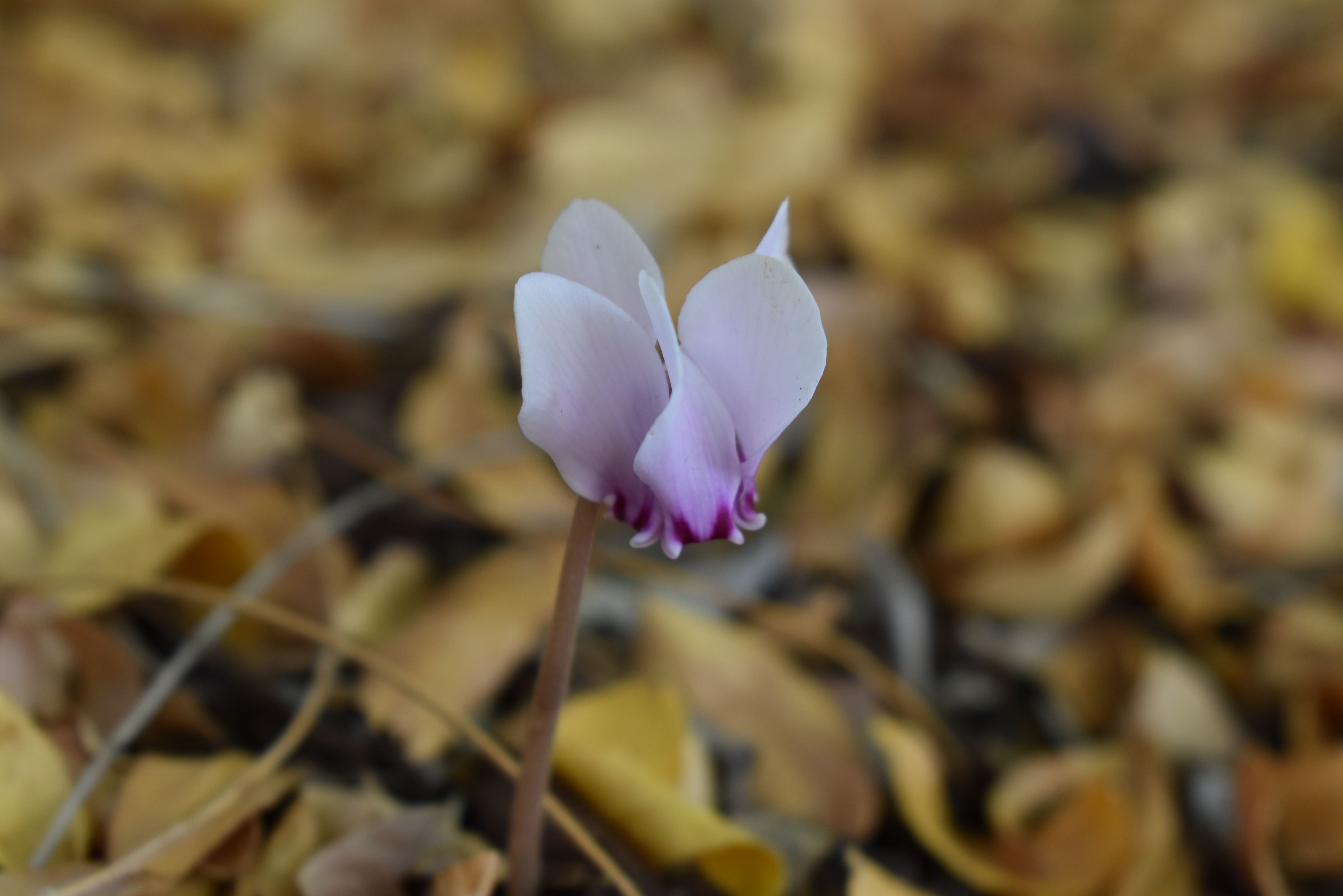
Persian Violet Cyclamen hederifolium
Fall-blooming perennial with large, mottled, ivy-like leaves that emerge after the flowers bloom and last throughout the winter. Pink flowers with red eyes and reflexed petals are borne one per stalk and bloom in late-summer to fall. Does not require a lot of water to thrive. Prefers partial shade.
-
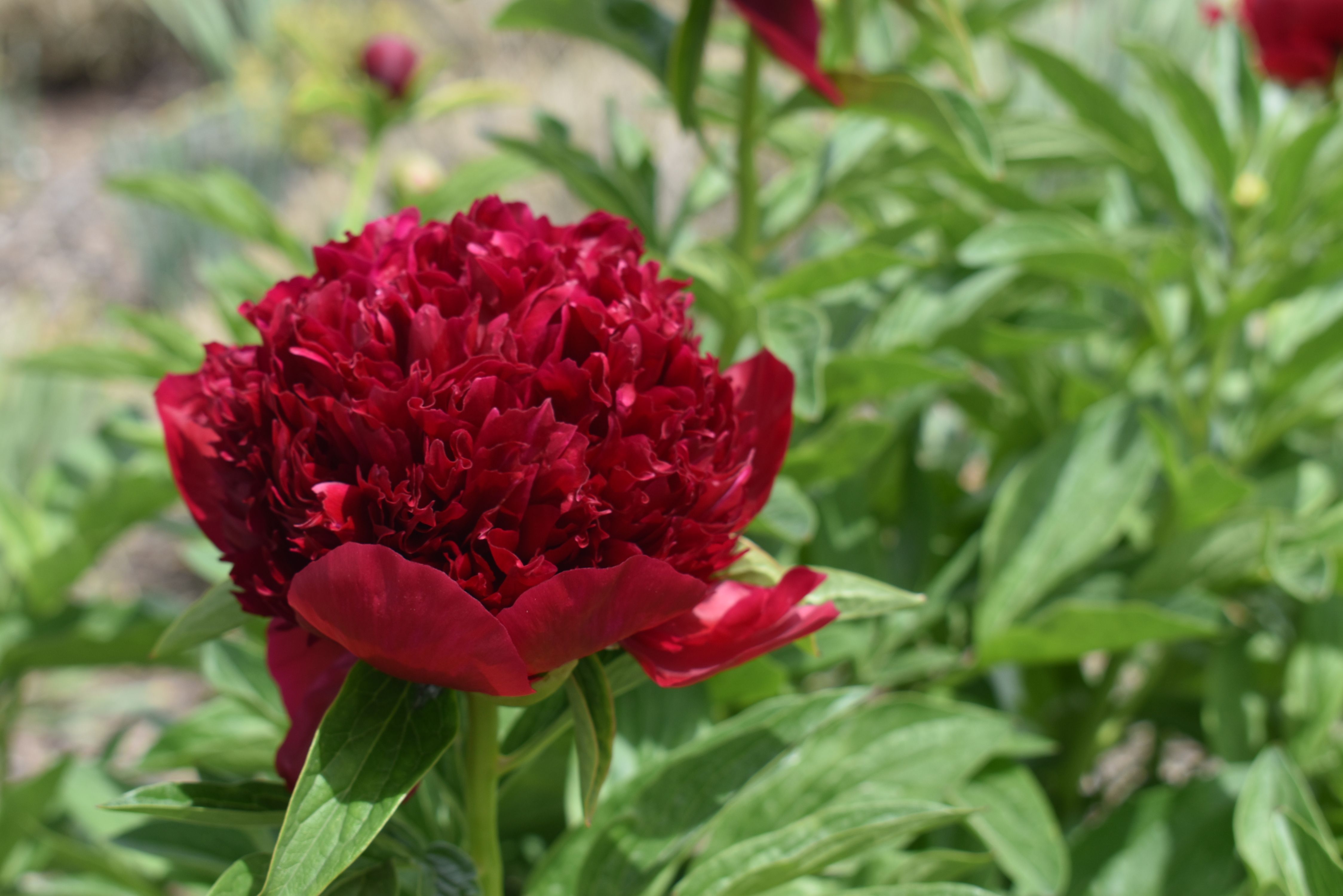
Peter Brand Peony Paeonia lactiflora 'Peter Brand'
Clump-forming, flowering shrubby perennial. Abundant large fragrant deep red double flowers are 5-7 inches across and bloom in late-spring. Deeply lobed lush green foliage provides additional attraction when plants not in bloom. Plant in fertile well-drained soil. Tolerates some drought once established.
-
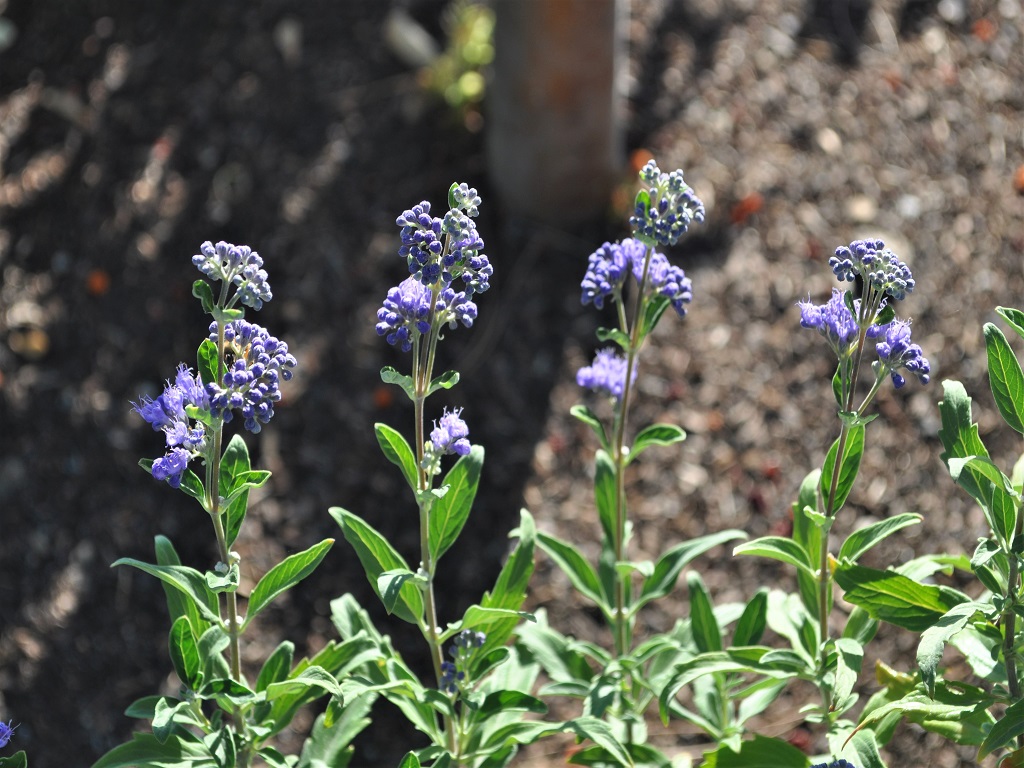
Petit Bleu Bluebeard Caryopteris x clandonensis 'MiniBleu'
It is a easily grown, low mounded deciduous shrub with dark blue flowers, glossy mid to dark green aromatic foliage. Flower blooms in late summer. This plant can handle little drought but crown may rot in poorly drained soil. Flowers are very attractive to butterflies, bees and other beneficial insects. Looks great planted in mass, as a border perennial or as a low hedge.
-
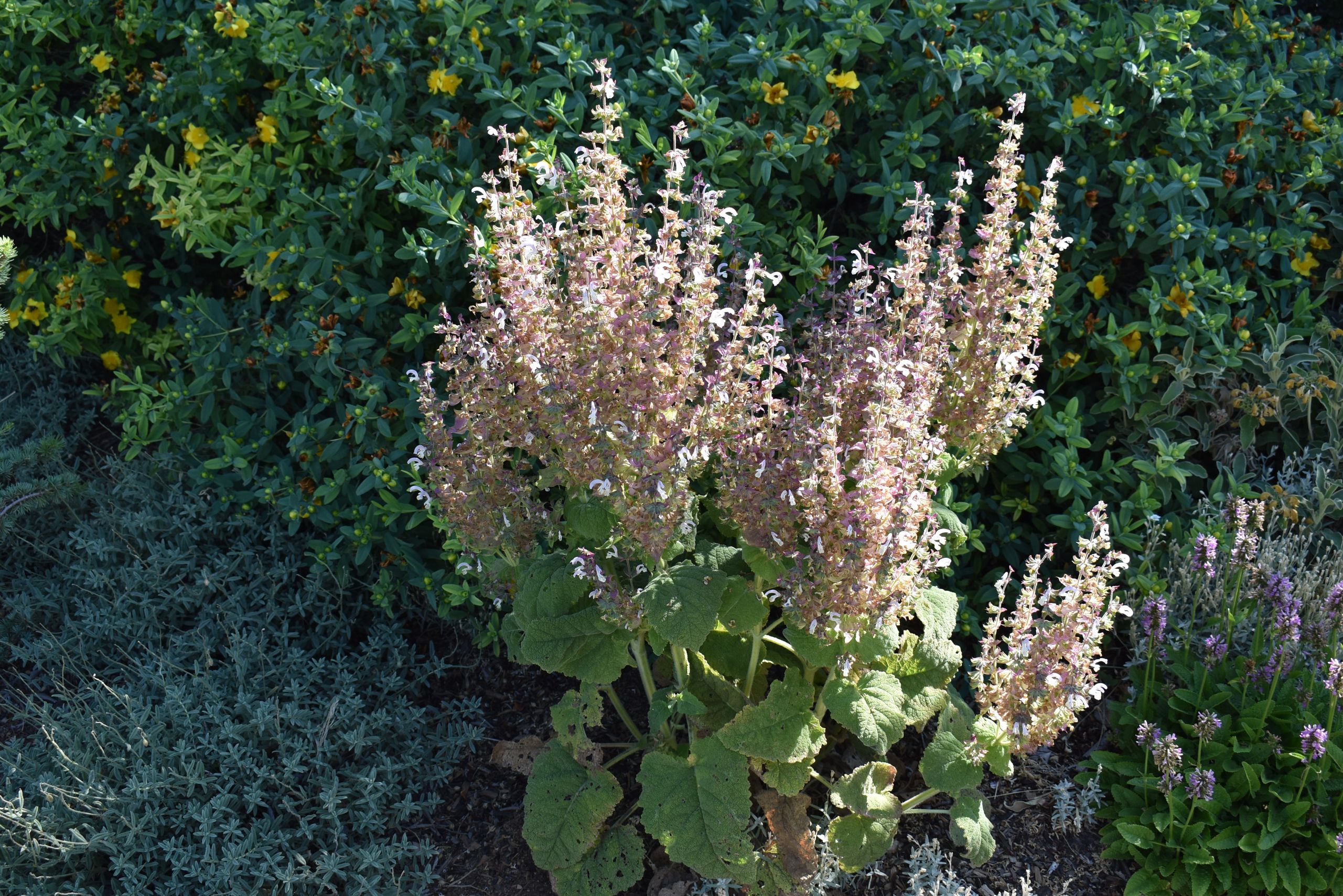
Piemont Clary Sage Salvia sclarea 'Piemont'
This plant is a biennial, meaning it typically only grows for two years, but may re-seed. Tall candelabras of lavender-purple bracts and baby blue flowers bloom from spring until late summer. Deadhead for re-bloom. Fuzzy heart-shaped green foliage grows below the blooms.
-
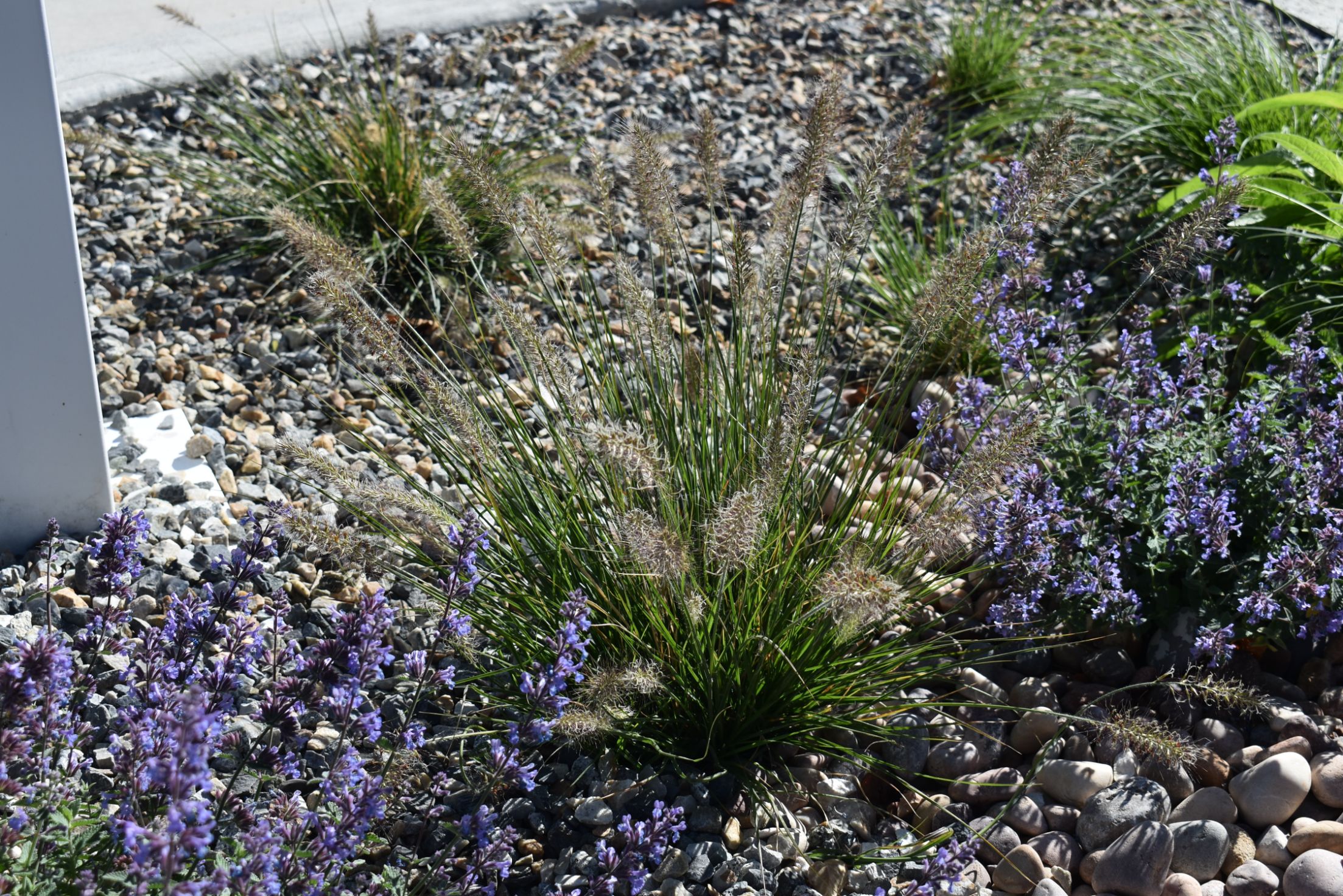
Piglet Dwarf Fountain Grass Pennisetum alopecuroides 'Piglet'
This compact fountain grass forms dense clumps of finely textured foliage topped with fluffy tan blooms resembling bottle brushes. It is between ‘Little Bunny’ and ‘Hameln’ in terms of size, reaching 1.5’ tall including the flowers. Drought tolerant once established and may occasionally re-seed.
-
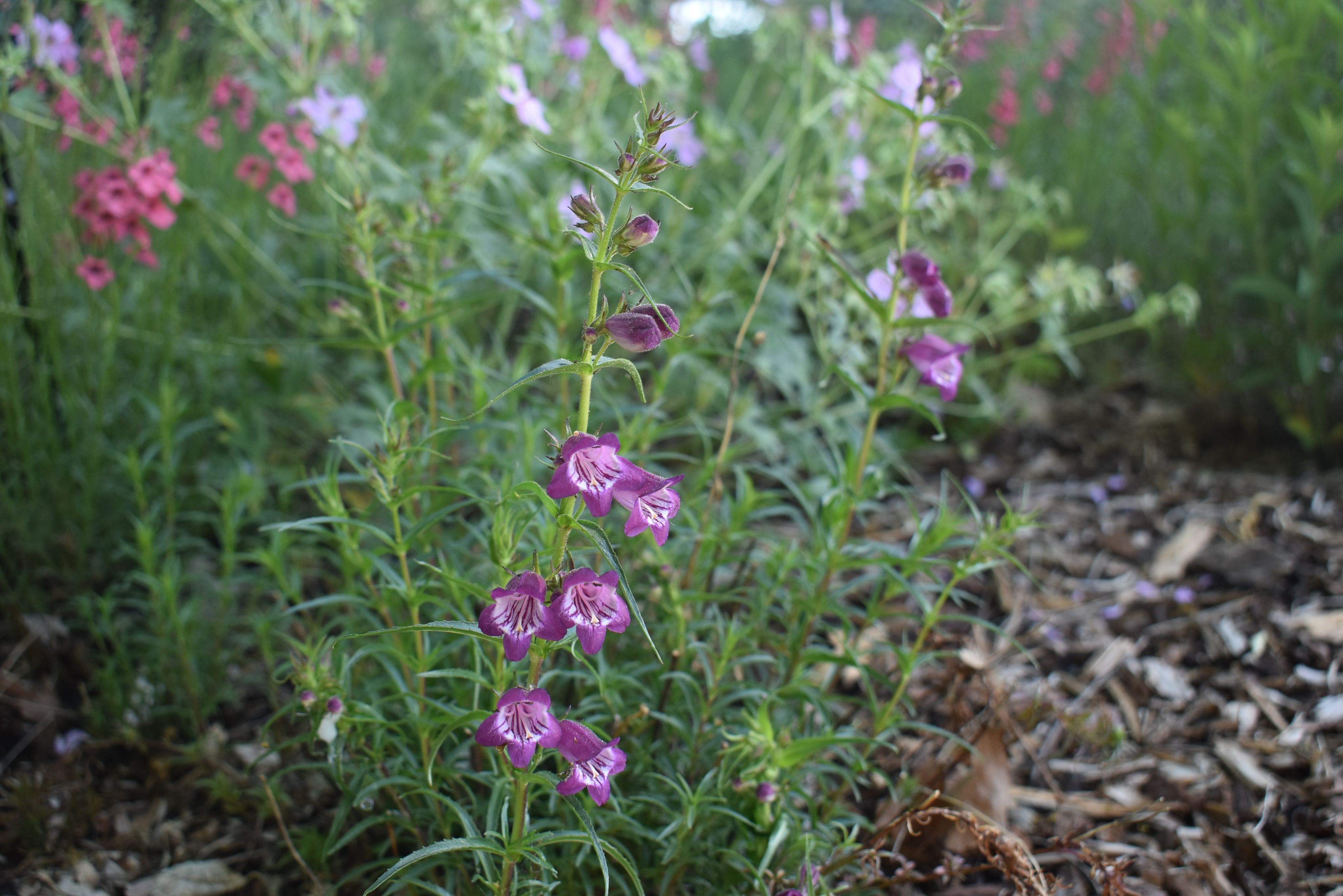
Pike's Peak Purple Penstemon Penstemon x mexicali 'Pike's Peak Purple'
A beautiful hybrid penstemon with constantly blooming small, violet-purple flowers throughout the summer. Narrow, lance-shaped, bright-green foliage is semi-evergreen. Prefers full sun and moist, well-drained soil. Attracts hummingbirds and butterflies and is deer resistant.
-

Pinball Wizard Onion Allium 'Pinball Wizard'
This ornamental onion is shorter than it's close relative 'Globemaster' but still boasts the large spherical flower clusters. It's purple blooms attract bees and butterflies through late spring and early summer.
-
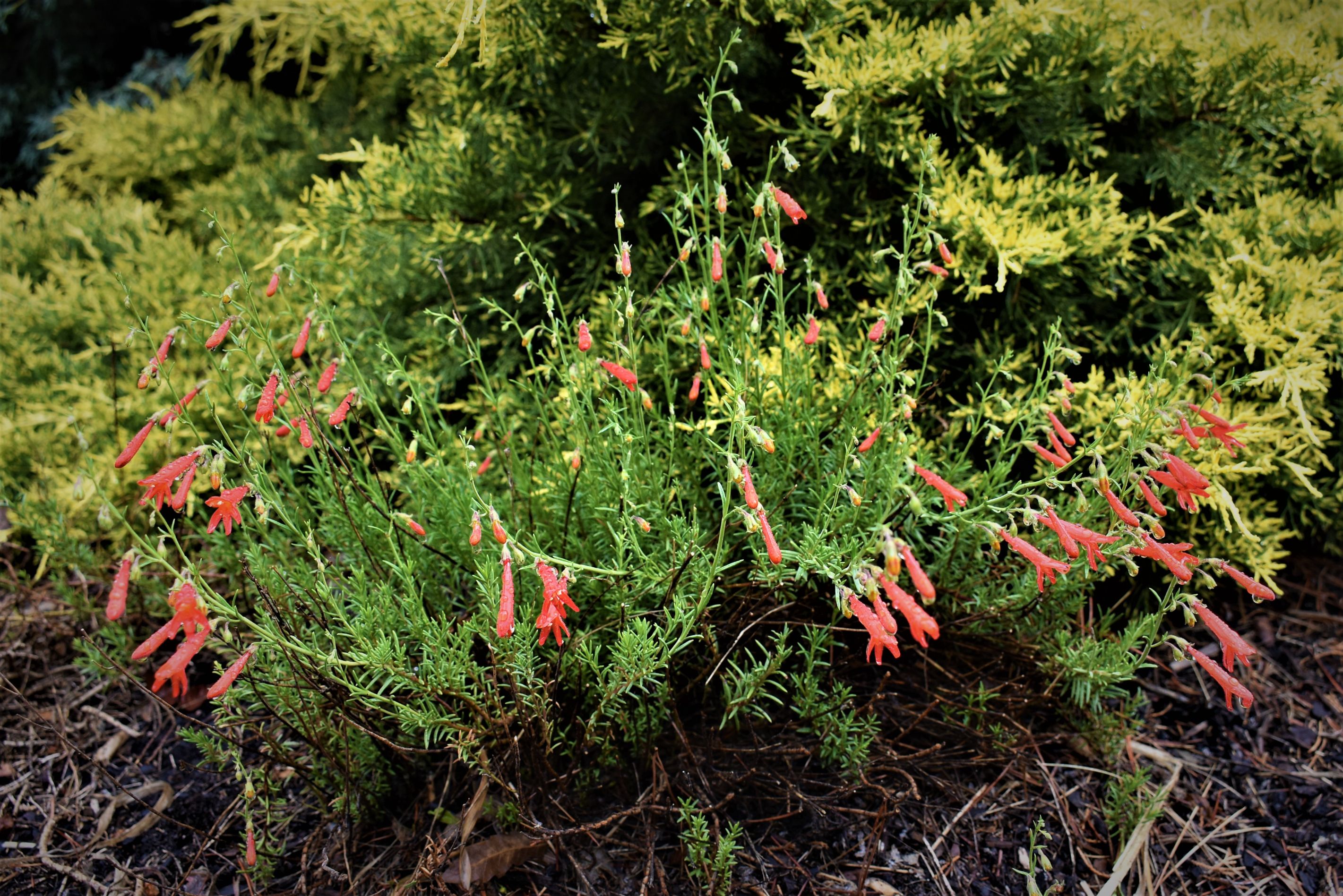
Pineleaf Penstemon Penstemon pinifolius
Spreading evergreen perennial native to southern New Mexico and Arizona. Starting in late-spring, profuse tubular orange flowers bloom for nearly two months starting. Flowers are very attractive to hummingbirds. Bright-green foliage is small and narrow resembling needles. Needs well-drained soils. Grows in both traditional and xeric locations.
-

Pink Bachelor Button Centaurea dealbata
Clump forming perennial with light green foliage, gray underneath. Has bright pink thistle-like blooms throughout summer. Related to the knapweeds but not as aggressive. However, will reseed readily.
-
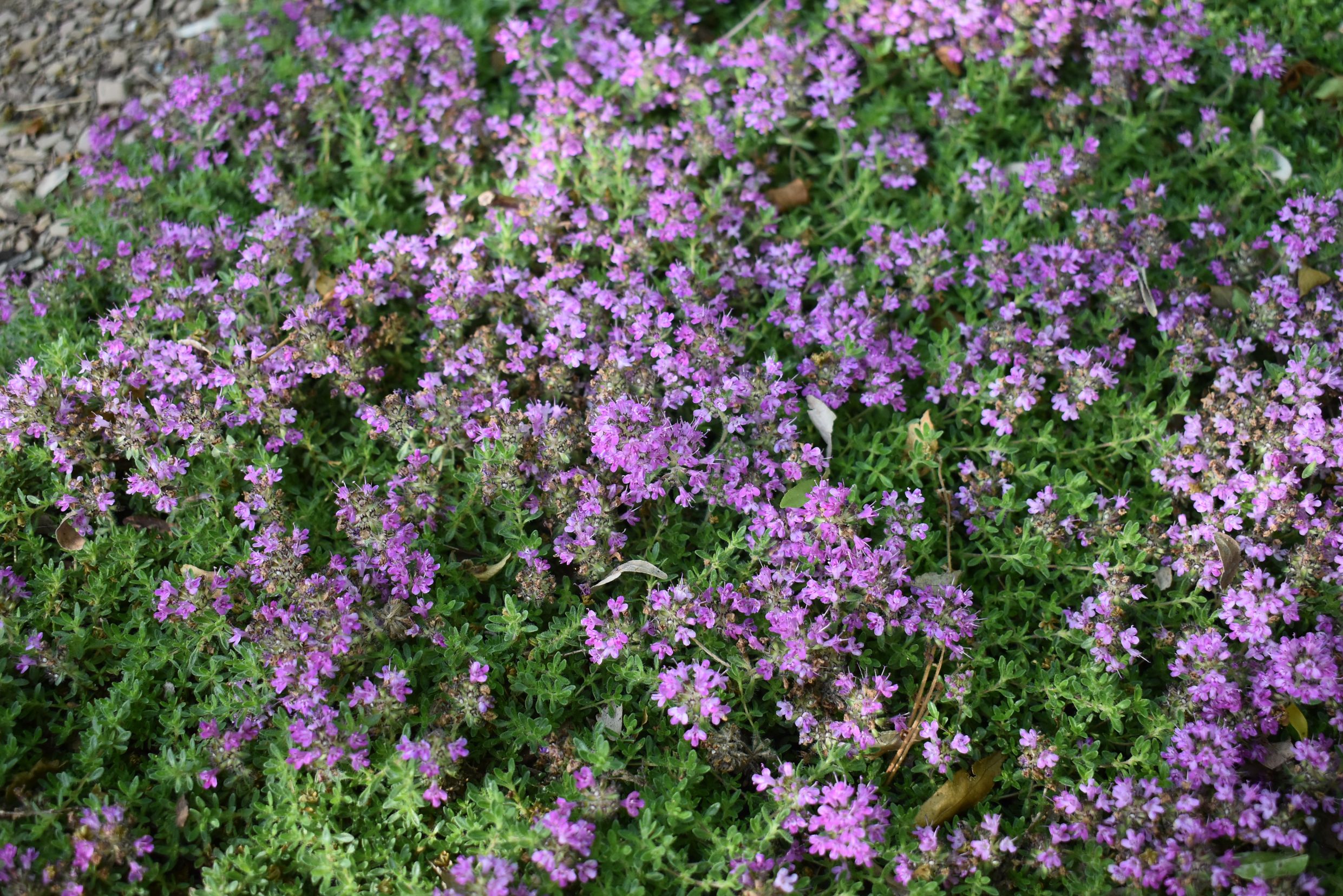
Pink Chintz Thyme Thymus serpyllum 'Pink Chintz'
This attractive ground cover forms mats of tiny olive-green leaves that are covered by clusters of salmon pink flowers during the summer. This species is not commonly used for culinary purposes due to unreliable strength of aroma. It grow best in full sun and can survive with little water once established.
-
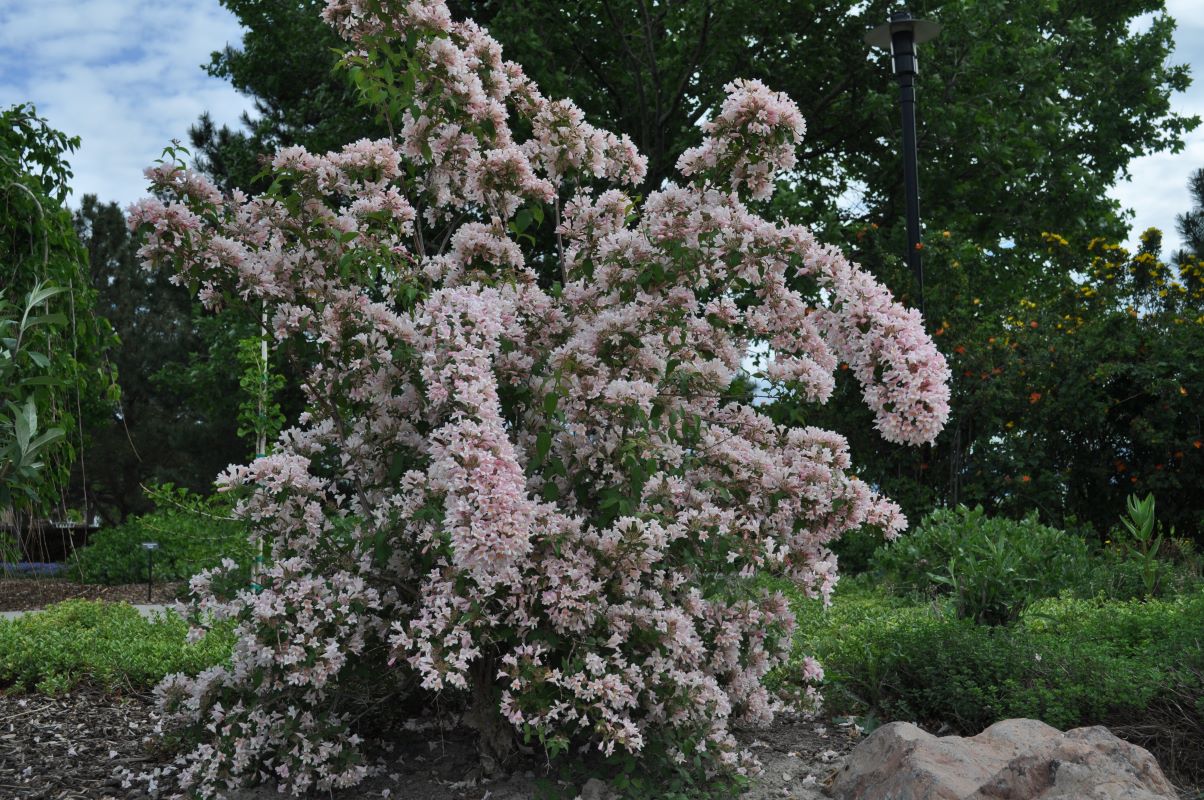
Pink Cloud Beautybush Kolkwitzia amabilis 'Pink Cloud'
The beauty bush is best grown for its striking trumpet shaped flowers that bloom in spring in pink clouds. The shrub grows in a vase shape with arching branches. The leaves are dark green and ovate in shape. It will spread by suckers, but not uncontrollably.
-
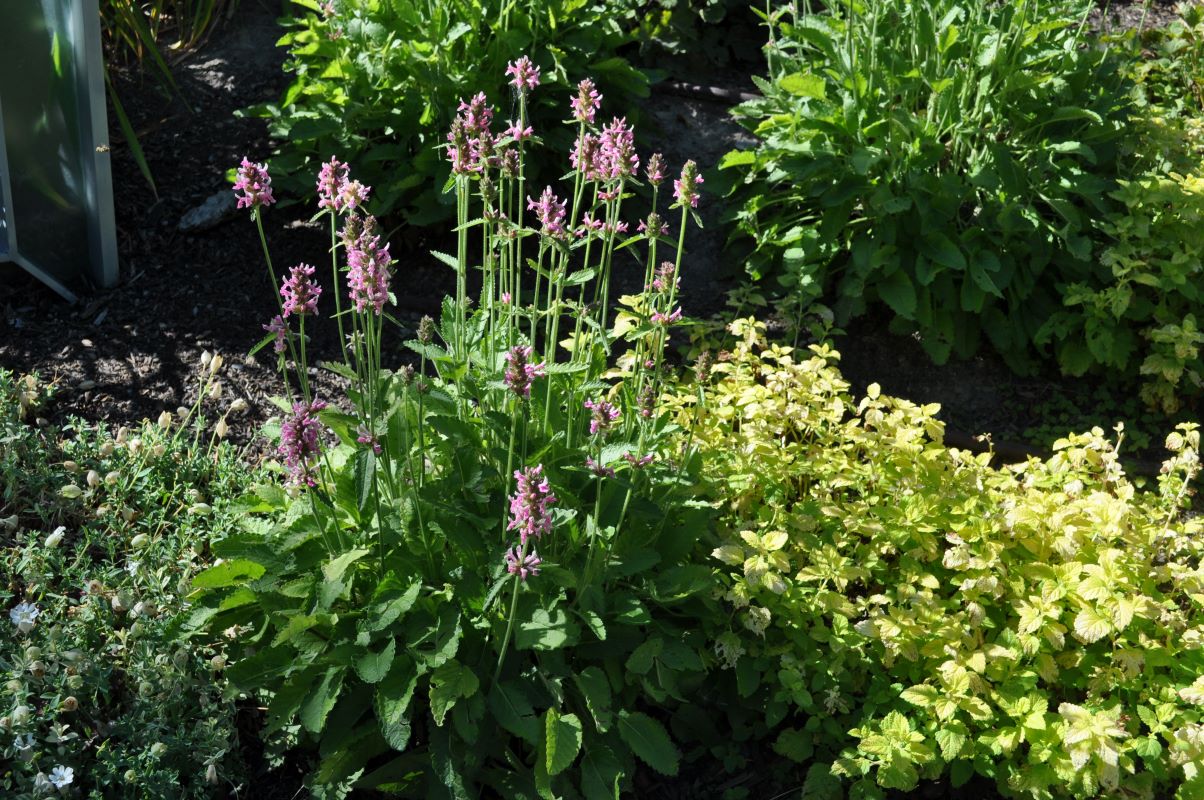
Pink Cotton Candy Betony Stachys officinalis 'Pink Cotton Candy'
Spreading herbaceous perennial. Large, green, hairy leaves with prominent veins and serrated edges. The flowers of this cultivar are small, rosy, two-lipped blooms that are grouped in spiked clusters. When flowering this plant has a closer resemblance to salvia then to the gray hairy Stachys genus it belongs. Drought tolerant once established.
-
Pink Dawn Chitalpa x Chitalpa tashkentensis 'Pink Dawn'
Small flowering deciduous cross between Chilopsis linearis and Catalpa bignonoides created in Uzbekistan in 1964. Green lance shaped leaves are slightly larger than the Chilopsis but much more narrow than the Catalpa. Beautiful orchid-like flowers are pink with flared petals and purple nectar guides along the throat. Tolerant of many soil types and of drought. Usually listed as hardy to zone 5, but may have some die back and difficulty in becoming established in anything lower than zone 6.
-
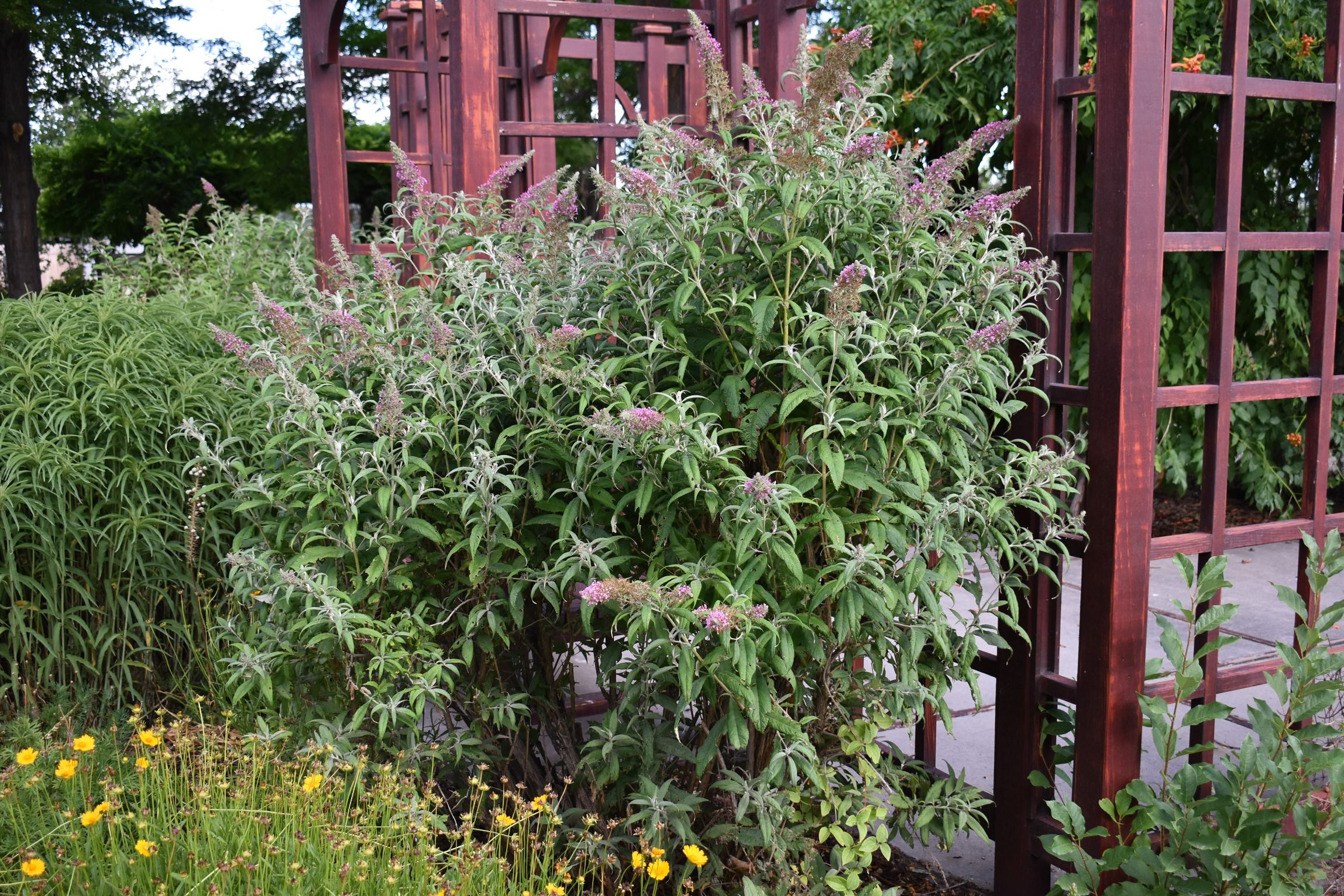
Pink Delight Butterfly Bush Buddleja davidii 'Pink Delight'
Beautiful medium to large flowering shrub. Can be pruned back to desired height each year, even to the ground if desired. Once established, this plant is tolerant of many conditions. Attracts butterflies and bees. This variety sports dense, 18" long clusters of bright pink, fragrant flowers with orange eyes.
-
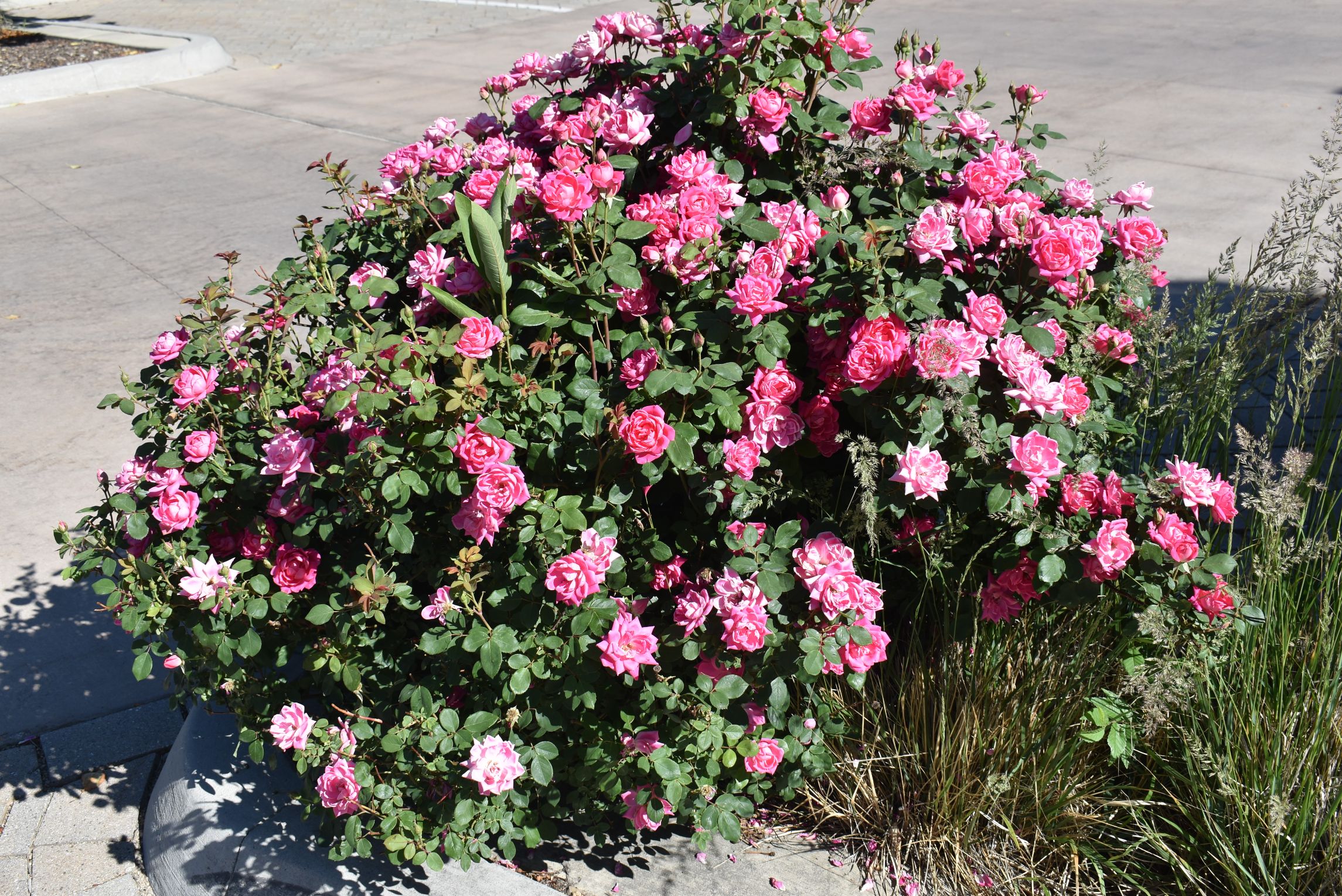
Pink Double Knock Out Rose Rosa 'Radtkopink'
Double, pink flowers bloom on this hardy shrub rose from late spring until frost in the fall. The roses are self-cleaning and don't need to be deadheaded. This rose needs full sun, but can handle hot locations easily. Some pruning may be needed to maintain a uniform shape.
-

Pink Grapefruit Yarrow Achillea millefolium 'Pink Grapefruit'
This hardy perennial forms large mounds of fern-like foliage that bloom with lavender pink florets throughout the summer. This variety stays relatively compact in its form. It tolerates many soil types but prefers to dry out between waterings.
-
Pink Lightning Ajuga Ajuga reptans 'Pink Lightning'
The mint green leaves, edged in creamy white, have a rough, crinkly texture. In mid spring baby pink to mauve blossoms come in abundance over the foliage. A beautiful, colorful, and hardy groundcover perfect for areas needing low-growing, dense coverage.
-
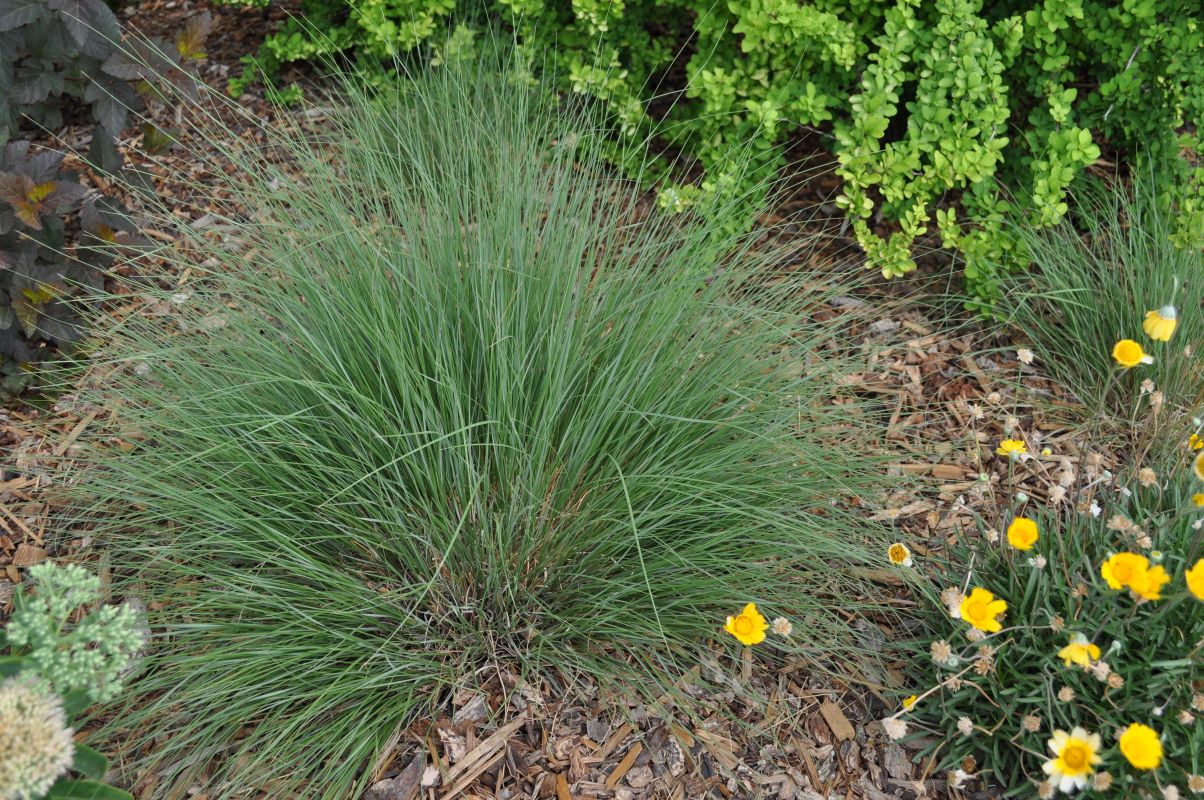
Pink Muhlygrass Muhlenbergia capillaris
This clump-forming ornamental grass is native to the mid-western United States. Long, green, thread-like leaves emerge in late-May to early-June and grow up to three feet high. The best feature of this grass is its seed heads that emerge in airy pink clusters in fall. It prefers well-drained soils and should be cut down each year in the spring to remove the dead leaves.
-
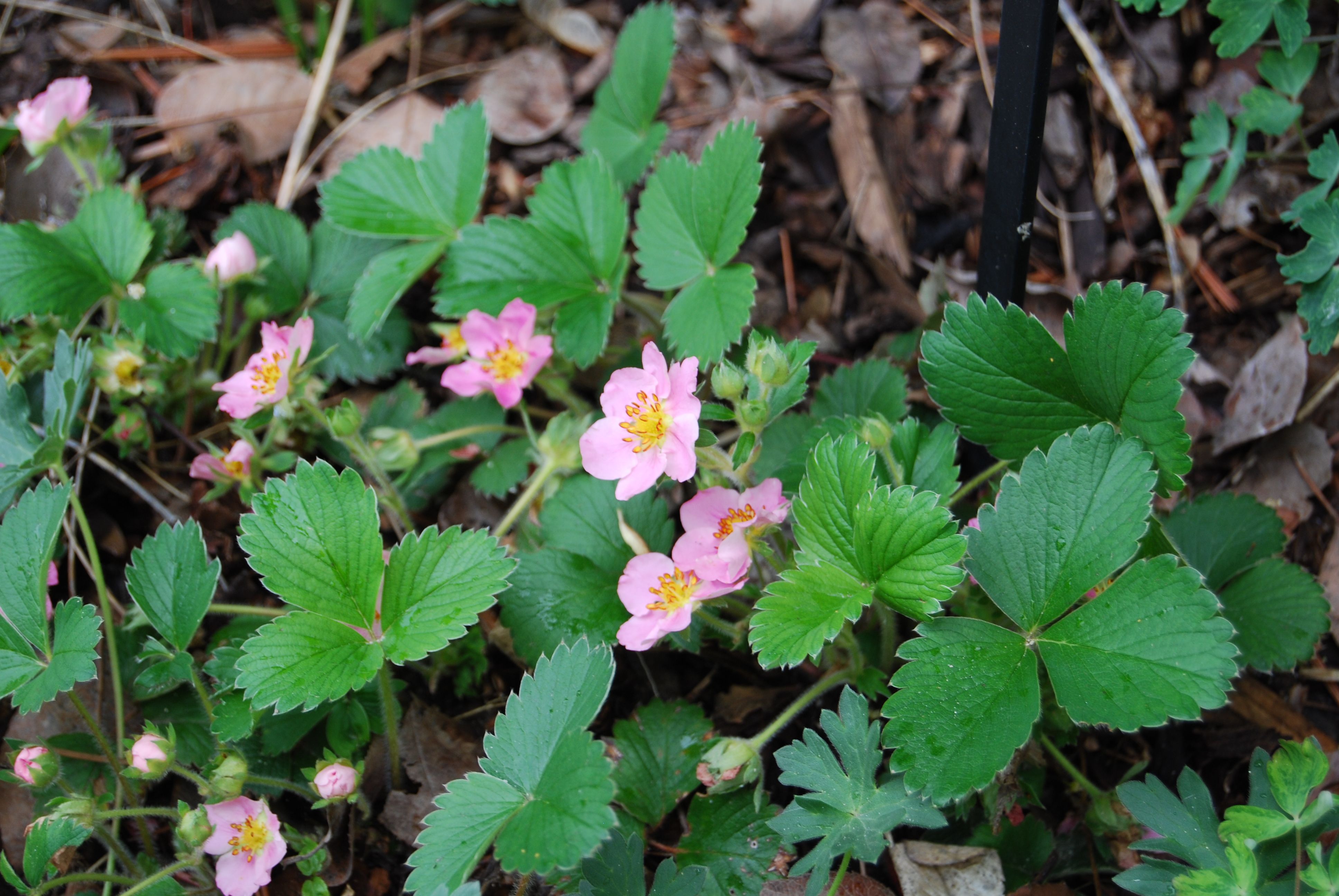
Pink Panda Strawberry Fragaria x ananassa 'Frel'
Hybrid spreading perennial grown primarily for ornamental purposes. Five-petaled light pink flowers with yellow centers bloom throughout the summer. Flowers sometimes lead to small edible berries. Dark-green leaves are trifoliate and toothed along the edges. Grows best in fertile soils with moderate amounts of water. Tolerant of a wide range of conditions.
-
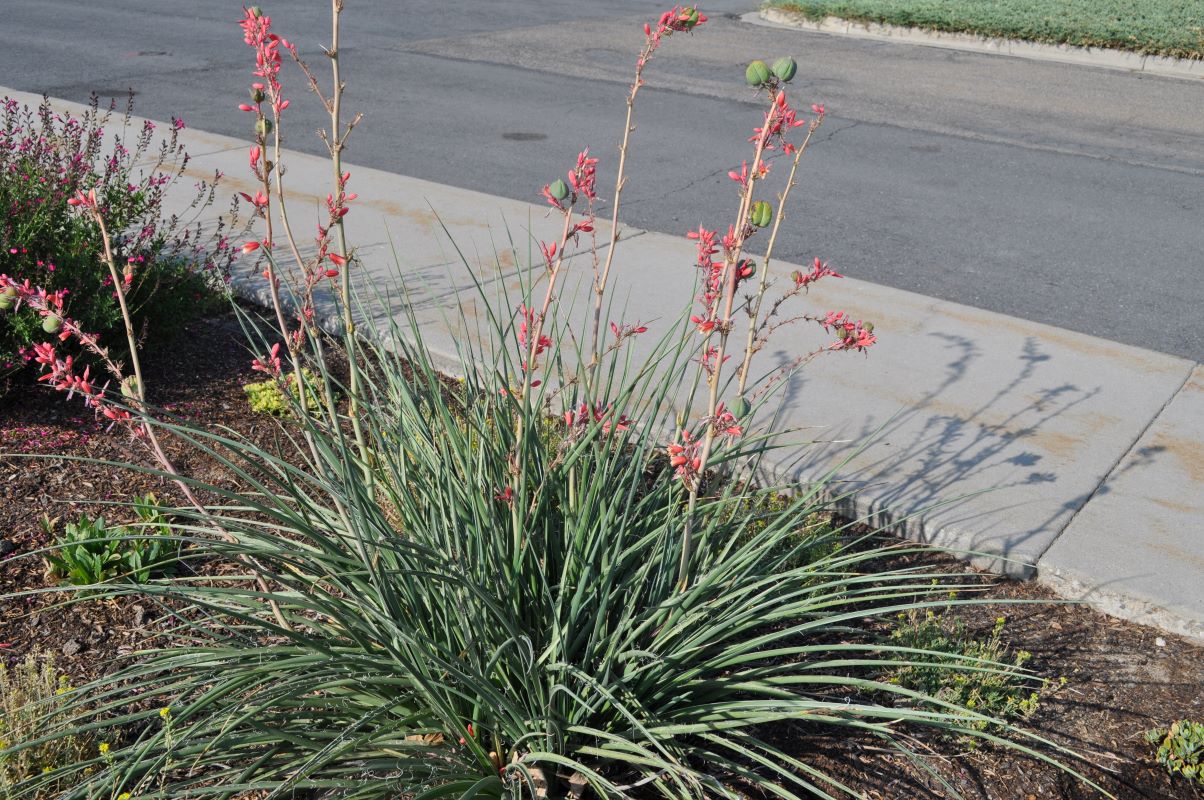
Pink Parade Yucca Hesperaloe 'Pink Parade'
This is a succulent perennial that can withstand drought, and extreme heat. This plant thrives in tough hot environments. It has upright spikey leaves that appear blue to gray-green and produce tall spikes of very long lasting pinkish to coral flowers that attract hummingbirds.
-
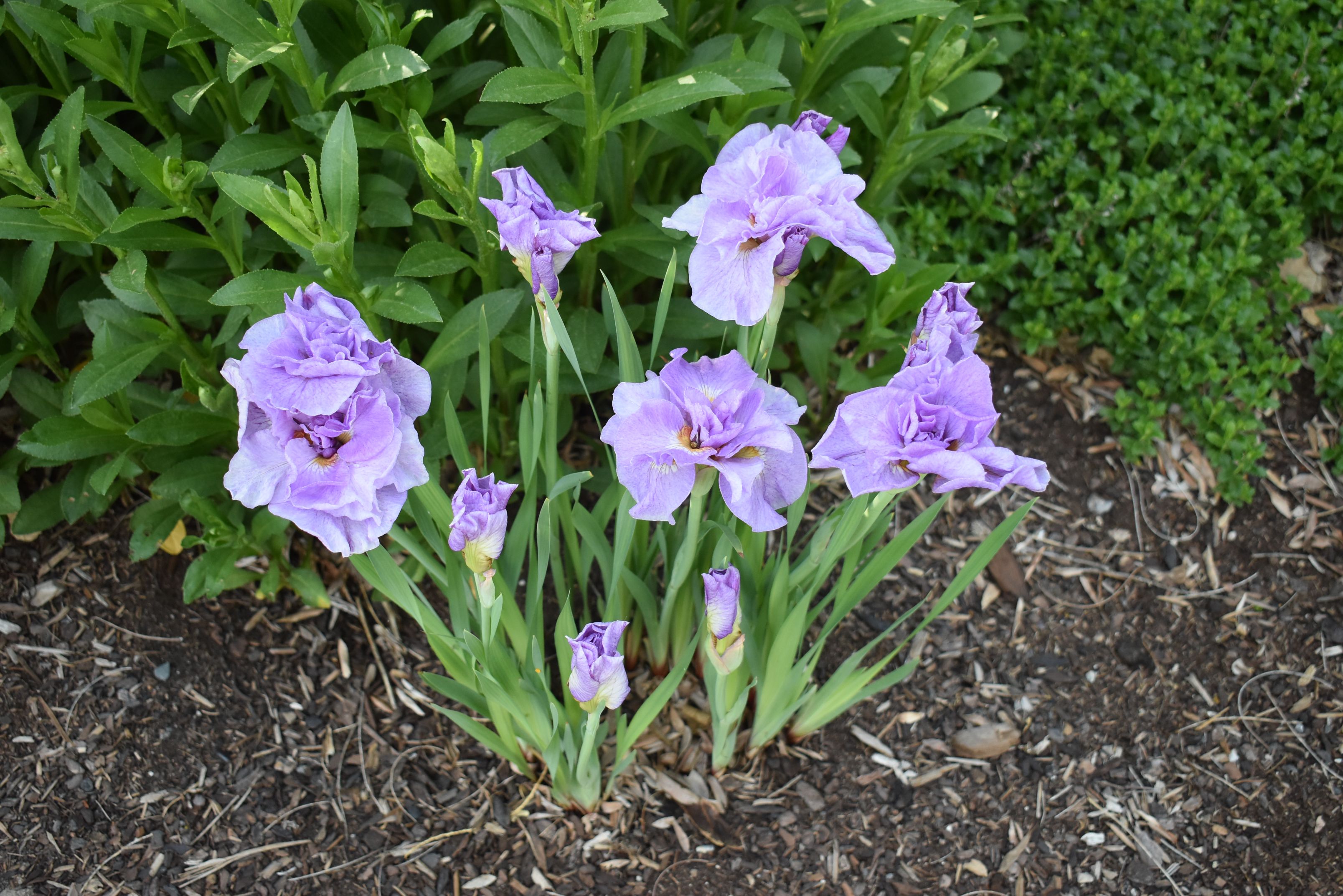
Pink Parfait Siberian Iris Iris sibirica 'Pink Parfait'
This Iris resembles a rose with the double blossoms of lavender-pink with subtle white-yellow centers. The narrow, upright leaves can add texture and contrast to a planting bed. Pink Parfait is easy to grow and does well in full sun.
-

Pink Pop Hummingbird Mint Agastache 'Pink Pop'
Compact erect herbaceous perennial. Tubular pink flowers appear on spikes beginning in summer and lasting into the fall. Ovate, silvery-green leaves are very aromatic. Attractive to bees and butterflies. Less reliably hardy than other members of the genus. Requires moderate amounts of water in well-drained soils.
-
Pink Pussytoes Antennaria dioica 'Rosea'
Semi-evergreen, mat forming perennial with grey-green, spoon-shaped leaves, that are densely white and hairy beneath. Bears small rose-pink flowerheads on stems 3/4" long in late spring to early summer that resemble little pink kitten toes. Flowerheads are followed by fluffy seedheads. Great for rock gardens. Prefers full sun.
-
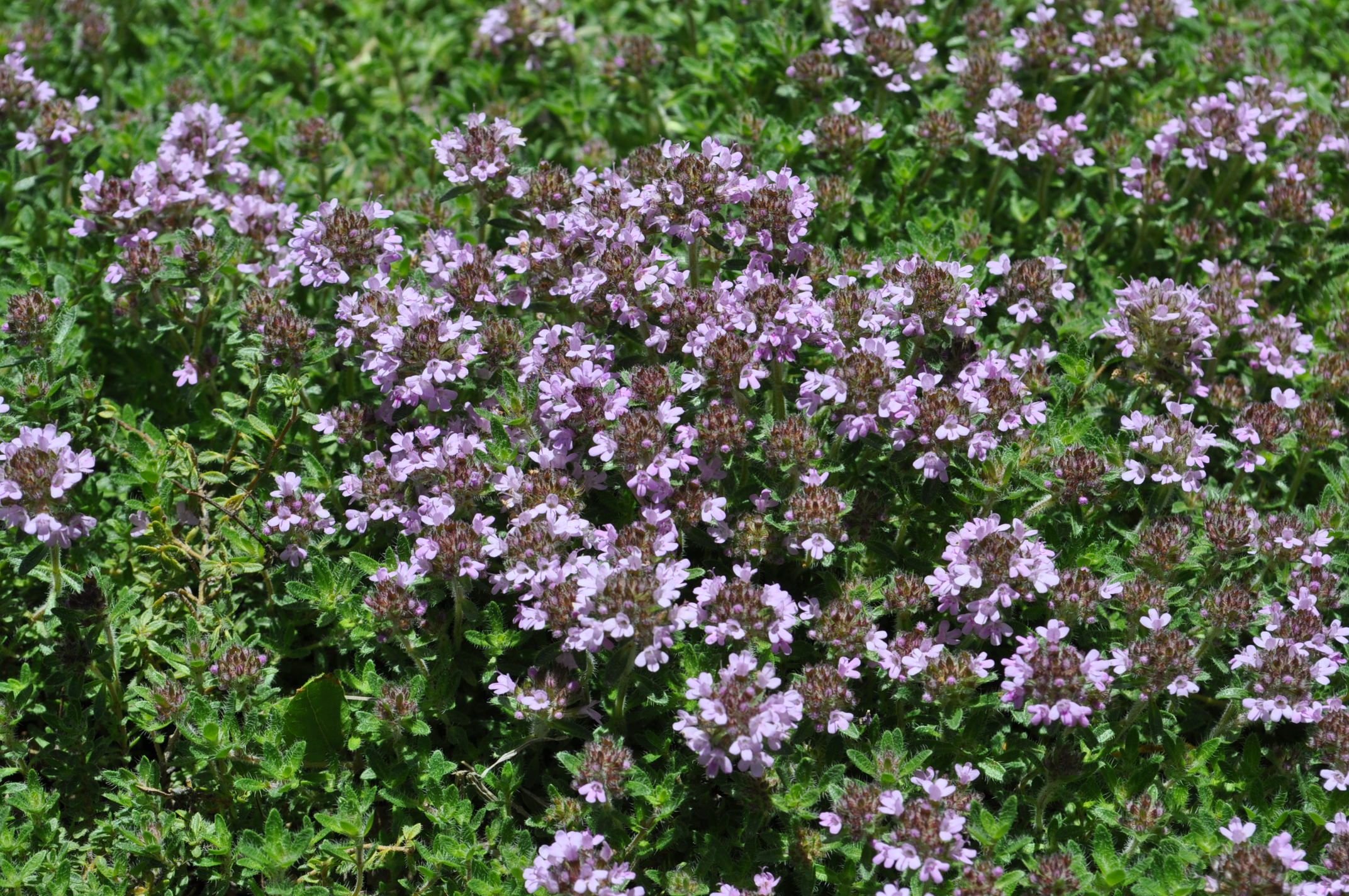
Pink Ripple Thyme Thymus 'Pink Ripple'
Low-growing evergreen perennial with lemon-scented foliage. Small oval leaves are a comely mid to light-green. Clusters of tiny salmon pink flowers bloom in late-spring. Works well as a groundcover or along pathways and rock walls.
-
Pink Yellowwood Cladrastis kentukea 'Perkins Pink'
Medium-sized deciduous tree with a broad, rounded crown. ‘Perkins Pink’ is an unusual, pink-flowered cultivar. In spring, wisteria-like clusters of delicate pink blossoms cover the tree. The compound leaves emerge yellowish green before turning mid green in summer and yellow in fall. Wood contains a yellow dye, hence the name.
-
Pinokkio Foxtail Lily Eremurus x isabellinus 'Pinokkio'
This tall perennial grows long leafless stalks in May to June topped with a bright foxtail of orange-yellow flowers. It's leaves grow basally and begin to fade as the flowers hit their peak. It grows best without too much water.
-
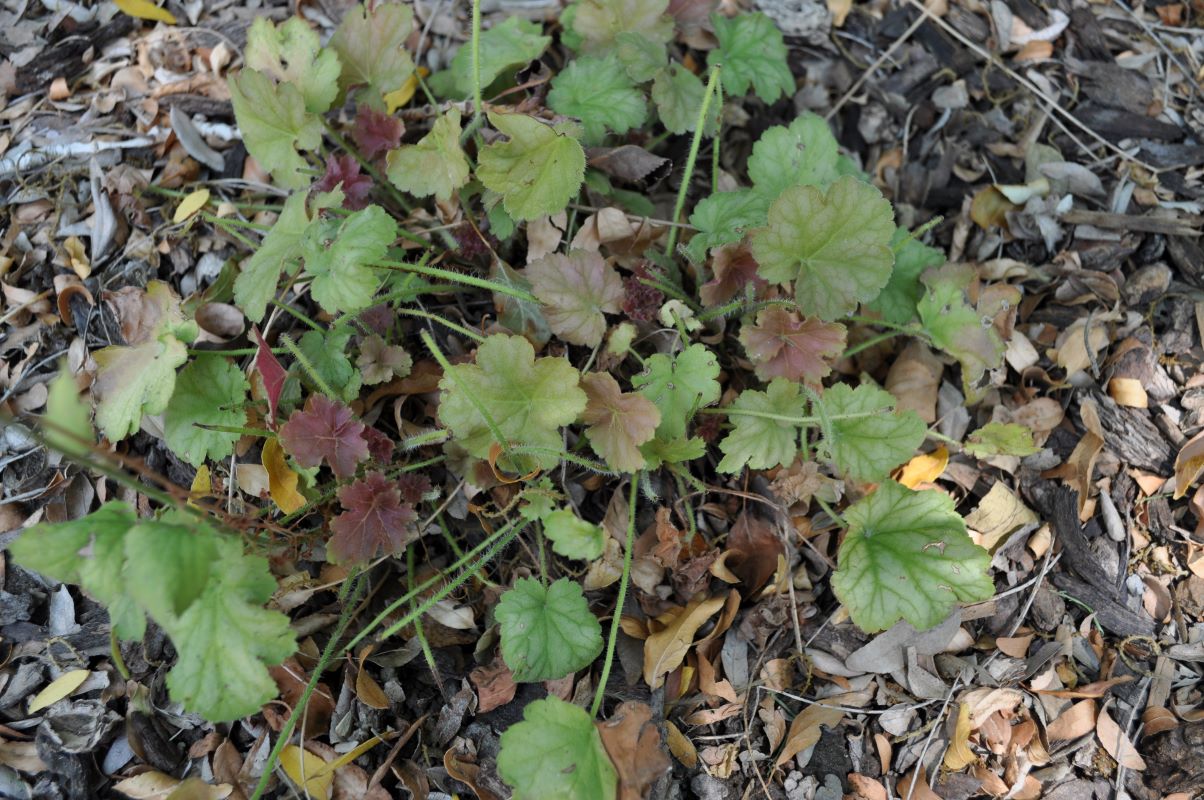
Pinot Gris Coral Bells Heuchera 'Pinot Gris'
This perennial forms clumps of lobed leaves that are muted green and have burgundy udersides. Small white flowers bloom in late-spring to early-summer on tall, airy stems. It prefers organic soils with moderate amounts of moisture. Too much drought and heat can cause the foliage to decline through the summer.
-
Pinyon Pine Pinus edulis
Picturesque evergreen tree with a rounded form. Gray-green to yellow-green needles come in bundles of incurved leaves 1-2" long. Rounded brownish cones are 1-3" and are a source of edible seeds. The seeds were a major food source for Native Americans. Very tolerant of drought and poor soils.
-
Pissard's Cherry Plum Prunus cerasifera 'Pissardii'
Small, flowering deciduous tree. Abundant leaves have serrated edges and emerge dark purple turning to purple green in the summer. Spring brings profuse light pink flowers fading to white. May produce small edible fruit in early summer. Its dense branching structure requires some maintenance to avoid future problems. Requires moderate amounts of water and grows in many soil types.
-
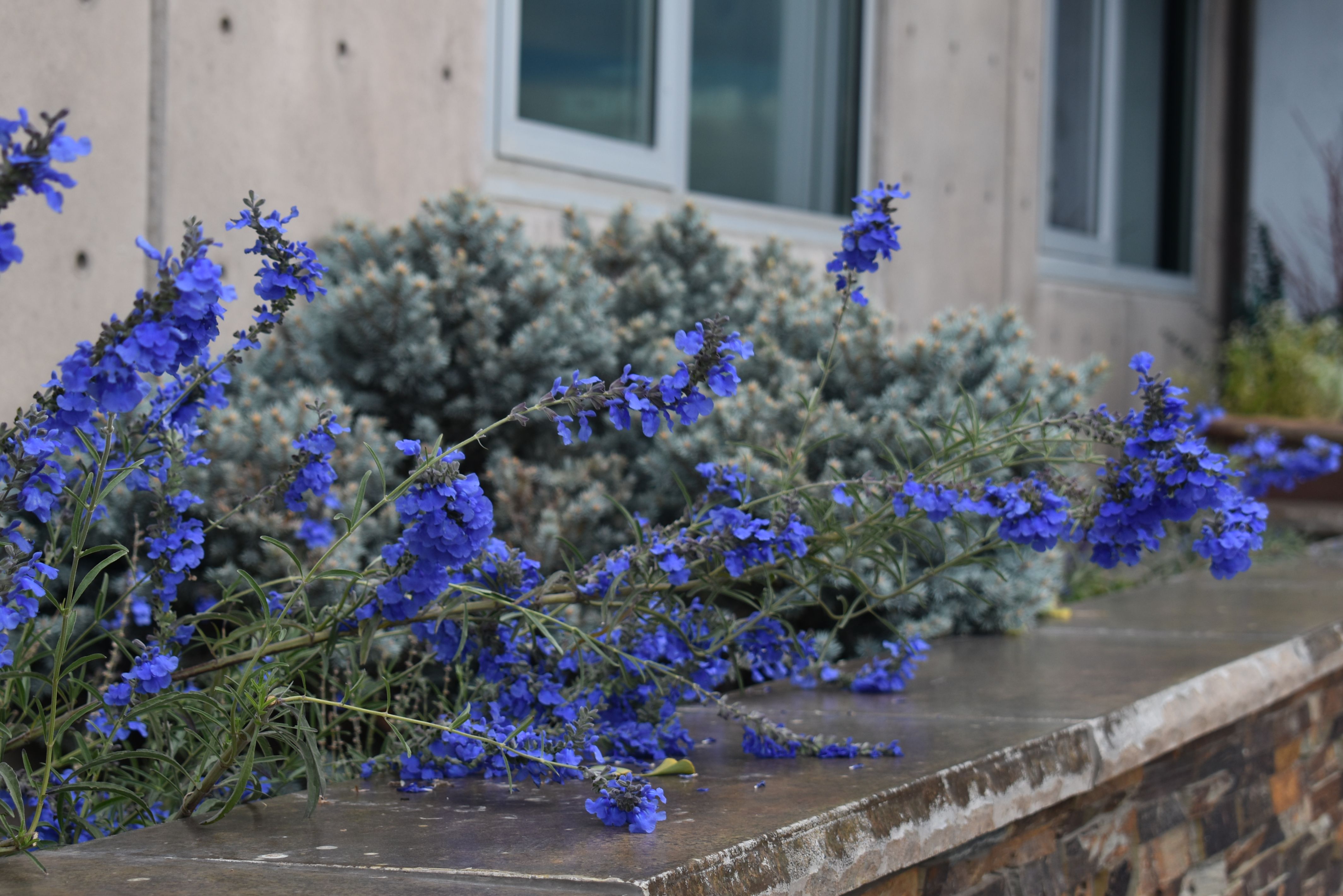
Pitcher Sage Salvia azurea var. grandiflora
One of the few plants with true blue flowers, this xeric perennial blooms in late summer and fall when other plants are starting to decline, with tall spikes of large, deep blue blossoms. Narrow, lance-shaped leaves grow on upright stems up to 5' tall. Attracts bees and butterflies. Plant in well-drained soils. Tolerant of heat and drought.
-
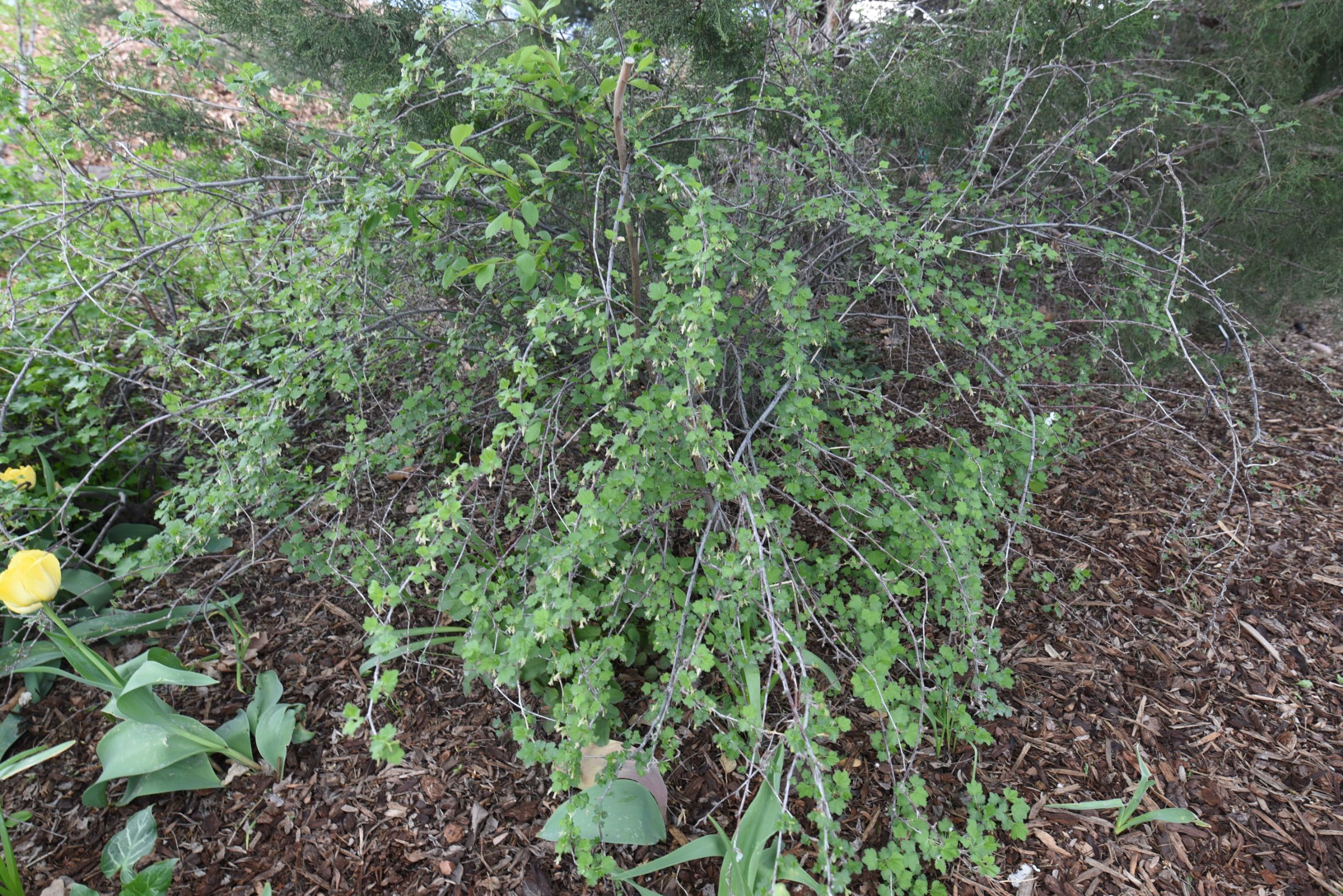
Pixwell Gooseberry Ribes hirtellum 'Pixwell'
Deciduous shrub grown primarily for its berries. Spring brings inconspicuous green-red flowers followed by large green to pink berries. This gooseberry is thornless and berries are easy to pick, hence the name. Great for pies and cooking but may be too tart for eating fresh. Grow in fertile soils with moderate amounts of water for greatest berry yield. Prune out 1/3-1/5 of the oldest canes each year to induce greater yields.
-
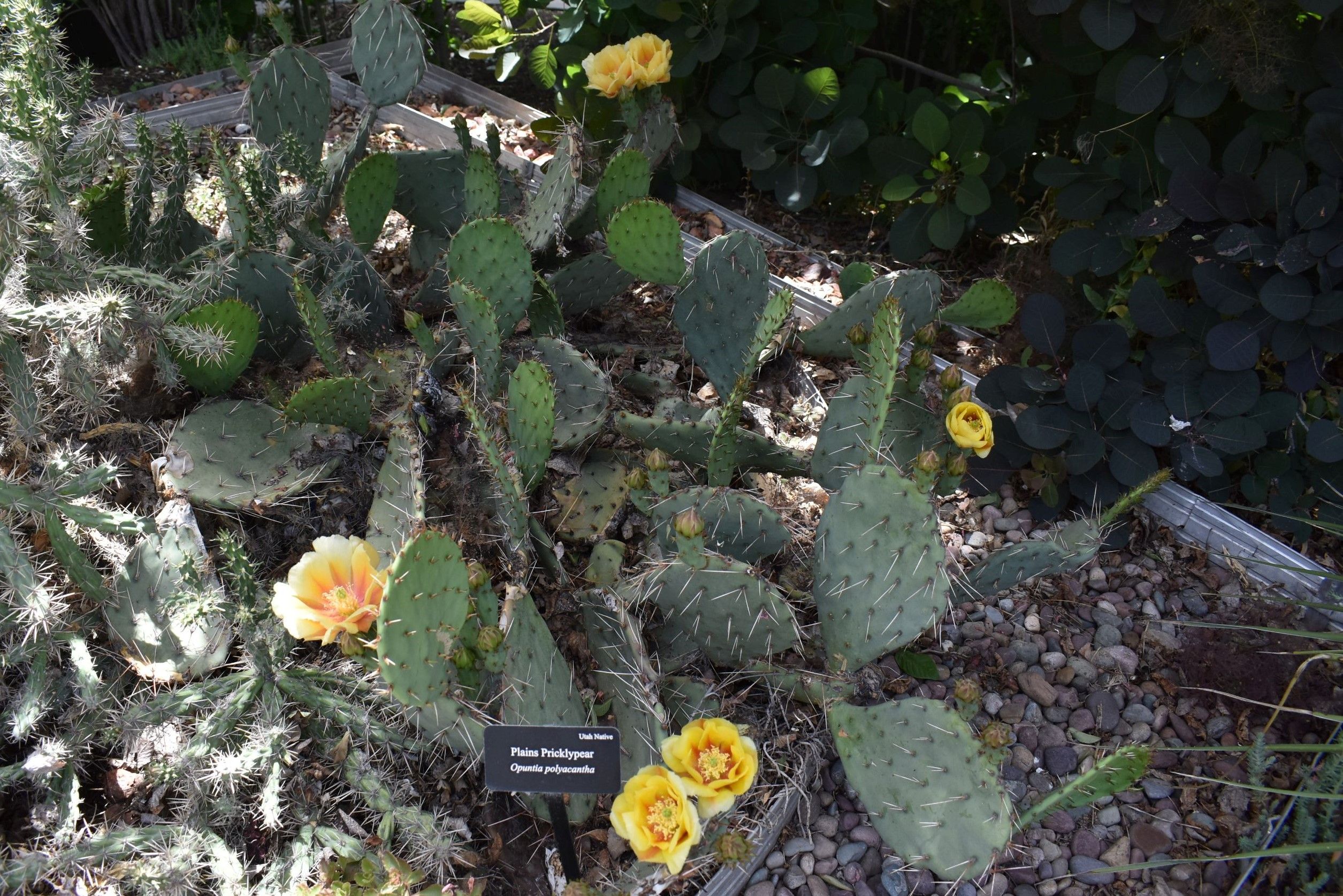
Plains Pricklypear Opuntia polyacantha
Cold hardy, perennial cactus. Forms rounded clumps with large fleshy stems and numerous spines. Produces large yellow flowers in May to June, followed by dark red fruit. Do not overwater.
-
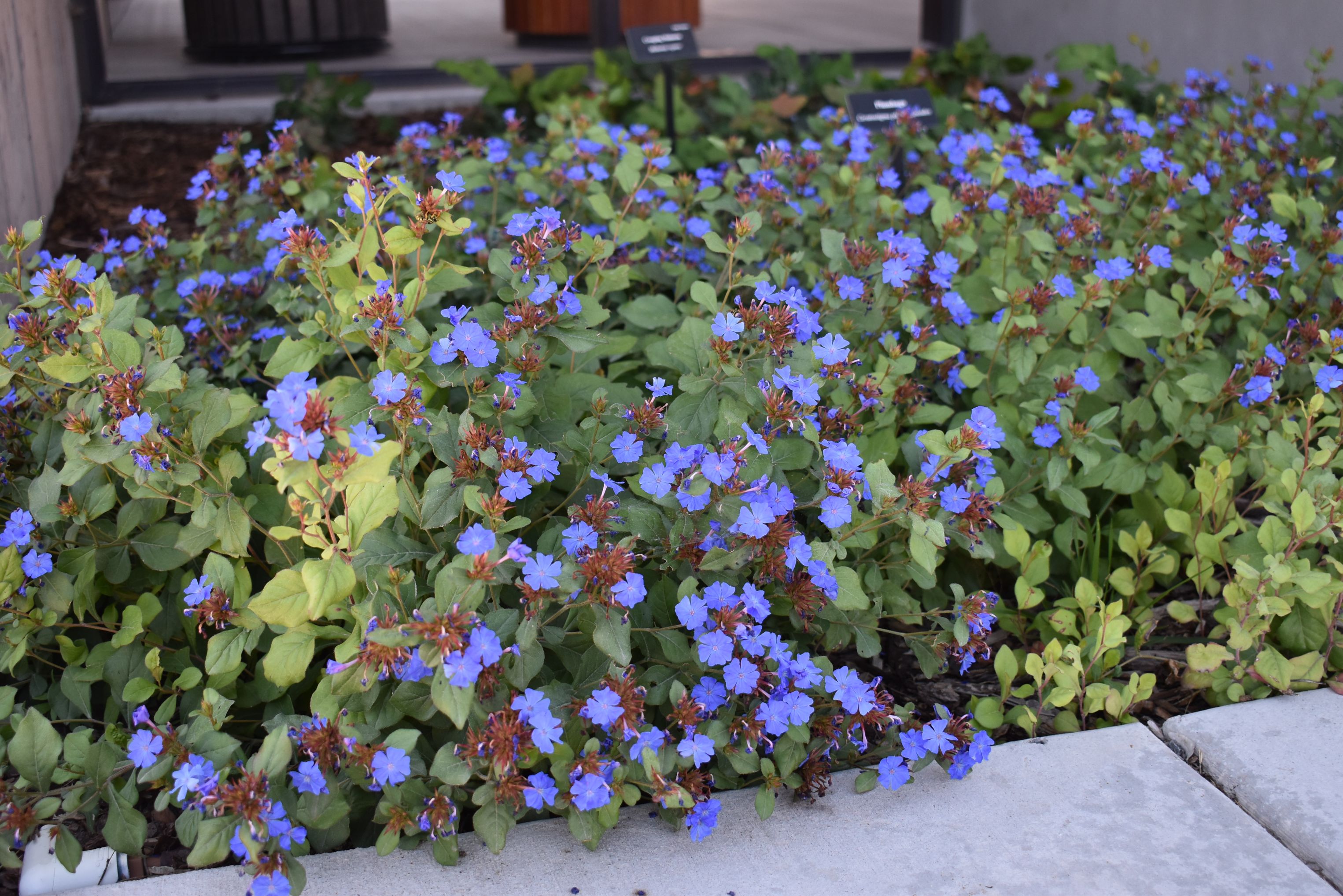
Plumbago Ceratostigma plumbaginoides
This spreading, low-growing perennial is incredibly useful as a vigorous ground cover. Shiny, medium-green leaves turn bronze-red in autumn. 5-petaled, sky blue flowers appear in loose clusters from late July to late September, attracting a variety of pollinators. Grows well in sun or shade. Might be best used in a contained area, as it can grow aggressively and overtake less vigorous plants in some situations.
-
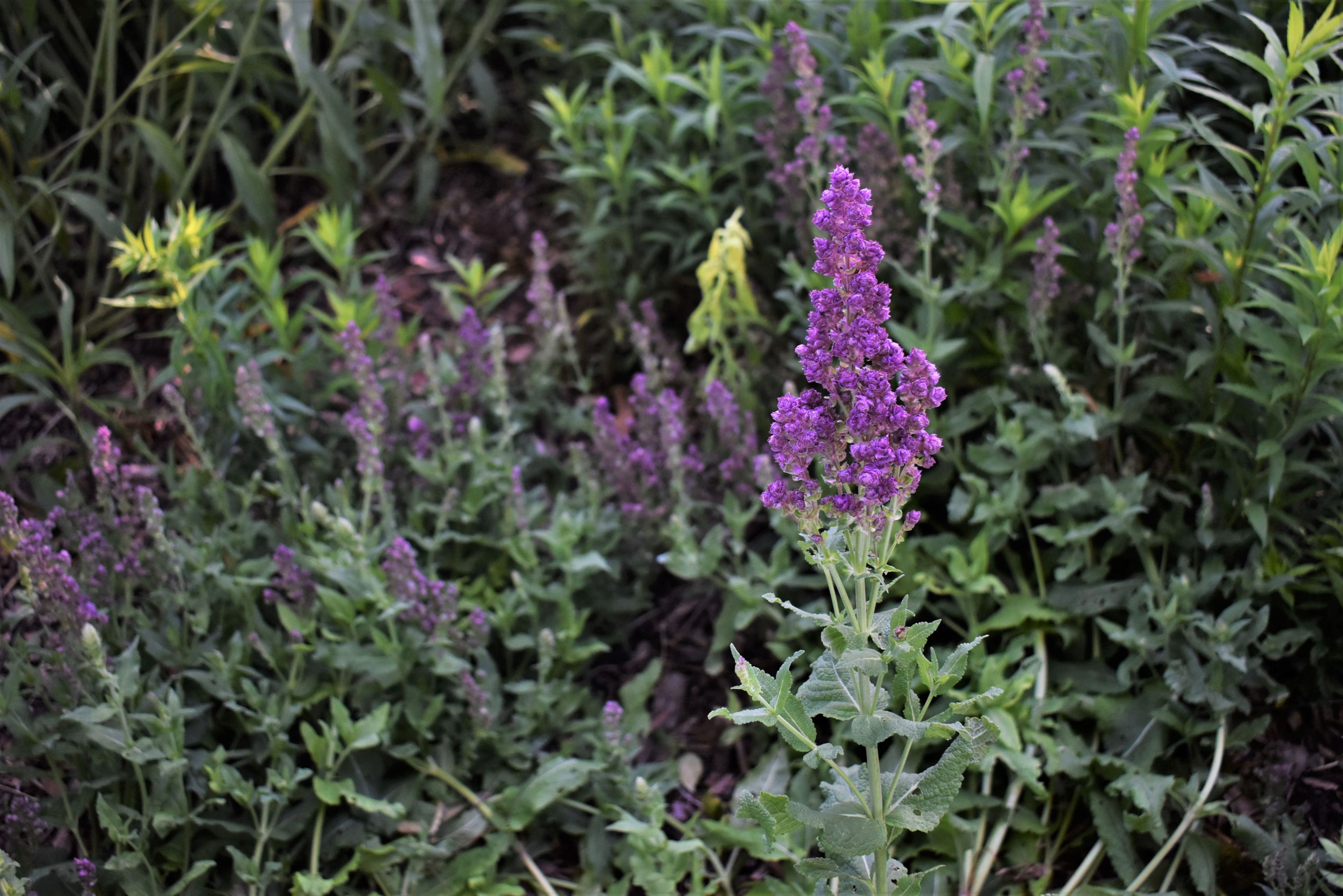
Plumosa Sage Salvia nemorosa 'Pusztaflamme'
Clump-forming perennial usually sold under the cultivar name of 'Plumosa.' Bears beautiful dense clusters of double, rosy-pink or purple flowers in summer. Flower structure is unusual for salvias. Lance-shaped green leaves. Attracts bees and butterflies. Plant in well-drained soils in full sun. Tolerates drought.
-
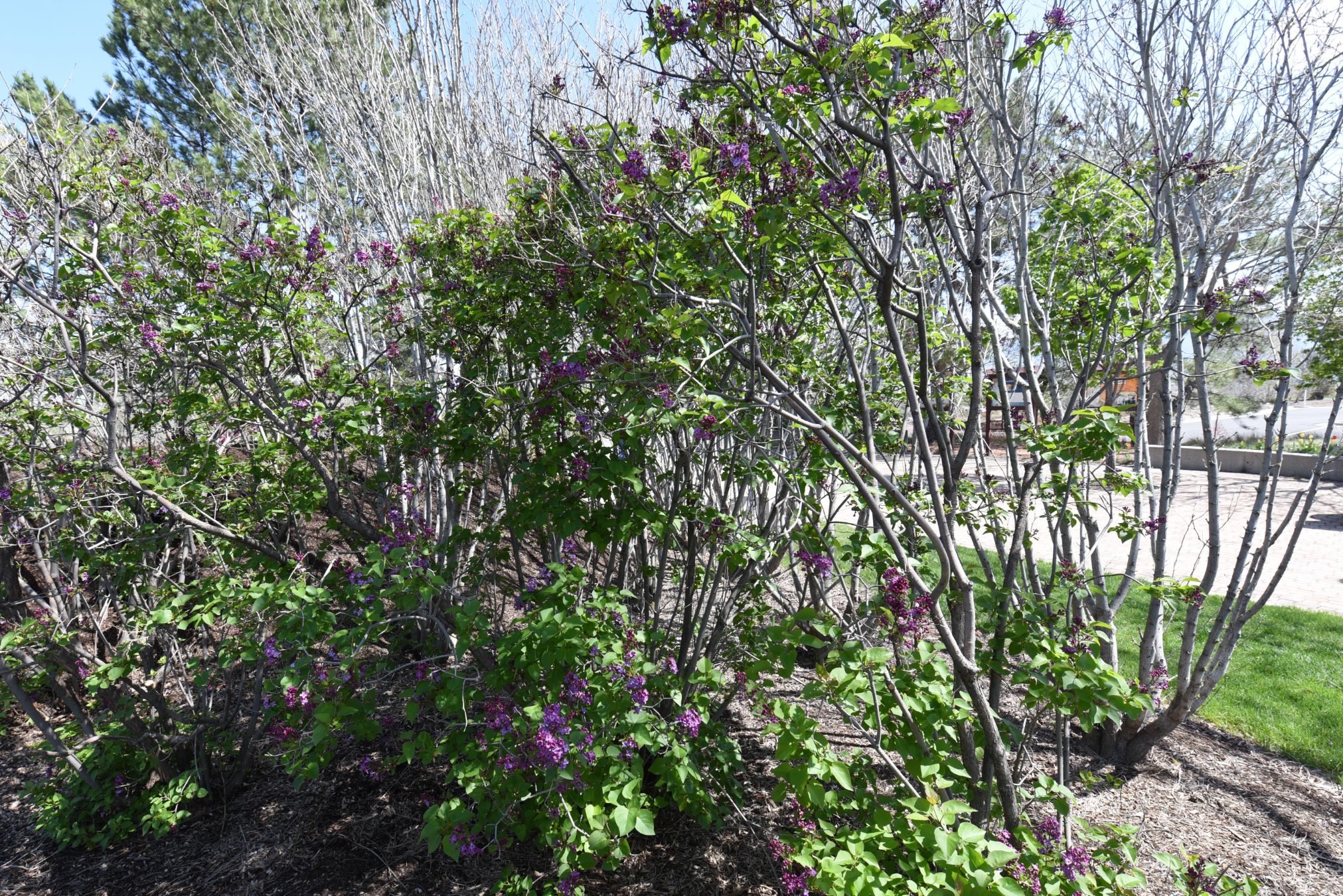
Pocahontas Lilac Syringa x hyacinthiflora 'Pocahontas'
Large deciduous flowering shrubs. Profuse purple-maroon fragrant flowers are borne on terminal panicles. Lance shaped dark green leaves provide a beautiful back drop to the flowers. This variety blooms 2 weeks earlier than other lilac species. Once established, it can withstand much drought but prefers moderate amounts of water. Tolerates many soil types and conditions.
-

Polarstar Hollyhock Alcea rosea 'Polarstar'
Low mounds of large leathery leaves shoot up tall, sturdy stalks of white blossoms in the summer months. These flowers have a similar texture and transparency as crepe paper and make good cut flowers. The soft white petals lead down to a chartreuse to light green eye. Due to their tall size during blooming season they are ideal for small back borders and screens, as well as pollinator gardens and planting beds that are in need of height.
-
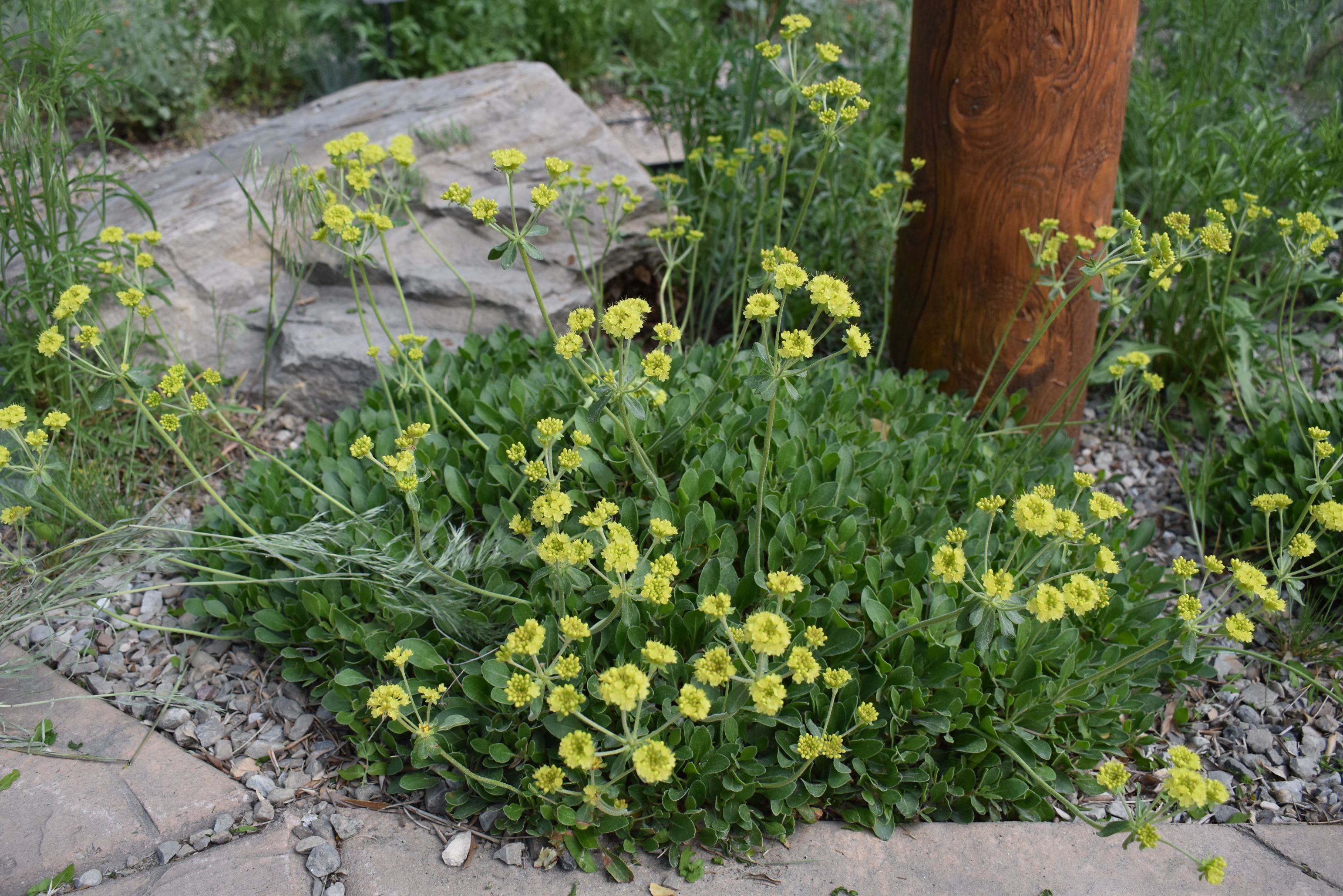
Poncha Pass Red Buckwheat Eriogonum umbellatum 'Poncha Pass Red'
A low-growing sub-shrub, this small wildflower is native to Colorado from selections cultivated exclusively by High Country Gardens. Bright yellow flower clusters appear in mid-spring and turn dark red as they mature in the late-summer. It is tolerant of poor soils and requires very little water.
-
Ponderosa Pine Pinus ponderosa
This tall evergreen is native to North America and parts of Utah. Some specimens of this large tree can reach as high as 100 feet. Care should be taken in choosing a location for this tree to provide it with plenty of space. Its long green needles grow in clusters of three, occasionally two. The needles twist as they grow out from the cluster. It produces plenty of cones at an average of four inches each. Cinnamon red bark exfoliates in plates.
-
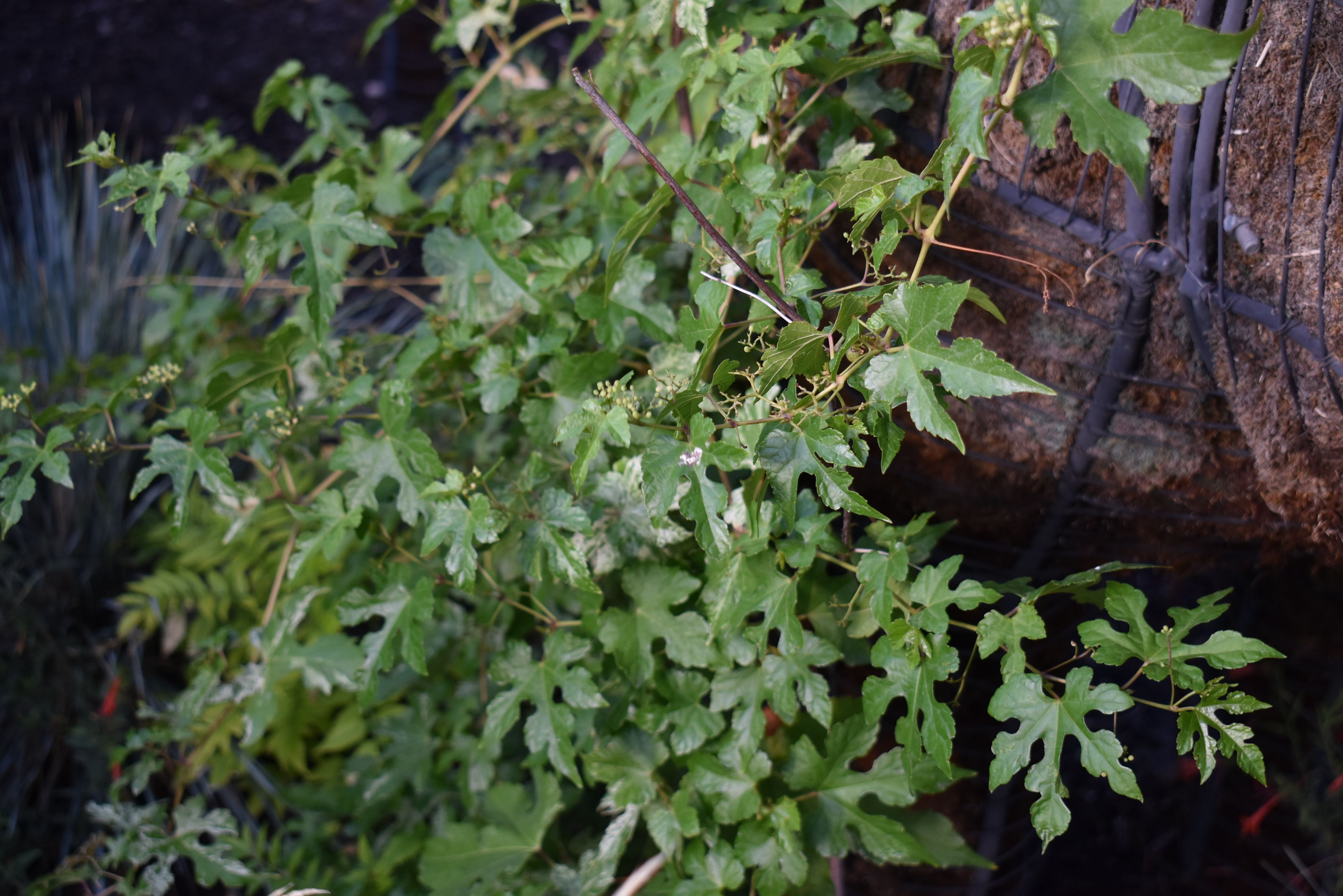
Porcelain-berry Ampelopsis brevipedunculata
This woody, climbing vine offers unique interest in the landscape. Clusters of fruit in an array of colors ranging from pink, to purple, to amethyst come on in the fall and stand out against the attractive mid to dark green foliage. It is grown mainly for the colorful berries. It is known to be invasive in the Eastern U.S., but shows no evidence of spreading in dry climates.
-
Porcupine Grass Miscanthus sinensis 'Strictus'
Large ornamental grass with narrow, stiff, upward pointing foliage. Narrow bright green blades have bright creamy yellow colored variegation in horizontal bands. Often mistaken for Zebra grass, which has similar vegetation, but the zebra grass is taller with drooping blades. Provides great fall and winter interest.
-

Portuguese Squill Scilla peruviana
This bulbous perennial grows as a rosette of long, strappy leaves that often stay green through the fall, winter and spring before going dormant during the dry summer months. Flower stalks emerge in late spring or early summer topped with an eye-catching cone of star-shaped purple-blue blossoms and continue to bloom for 3 weeks or more. The bloom time bridges the gap between spring bulbs like tulips and summer flowering perennials, bringing much appreciated color.
-
Powis Castle Wormwood Artemisia 'Powis Castle'
Bushy herbaceous perennial with woody stems. Grown primarily for its finely dissected, silver-green, aromatic foliage. Flowering is rare. Can spread by roots if not contained. Makes an excellent backdrop for any perennial bed. Grow in well-drained soils as it prone to root rot.
-

PowWow White Coneflower Echinacea purpurea 'PAS702918'
Pure white flowers with downward arching petals and golden brown centers bloom on sturdy stems. Medium green lance-shaped leaves grow in clusters under the flowers.
-
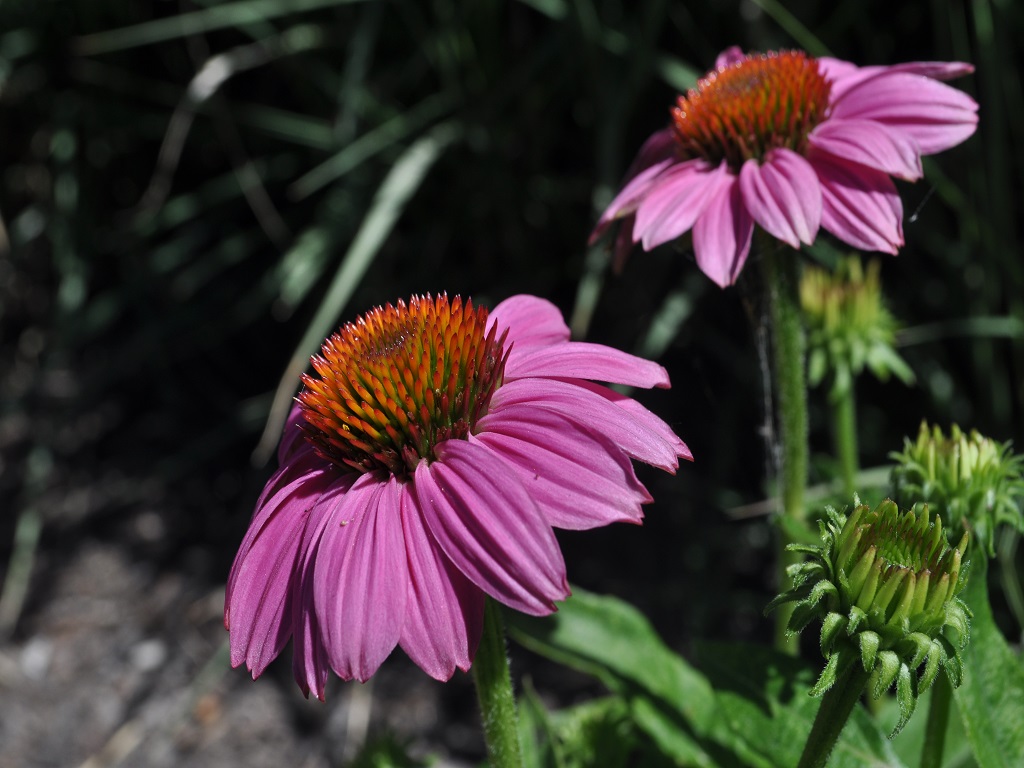
PowWow Wild Berry Coneflower Echinacea purpurea 'PAS702917'
Herbaceous perennial. Rose-purple flowers with downward arching petals and golden brown centers bloom on sturdy stems. Medium green lance-shaped leaves grow in clusters under the flowers.
-

Prairie Blues Little Bluestem Schizachyrium scoparium 'Prairie Blues'
This selection of little bluestem has gray-blue foliage with a strong upright habit. Late summer brings brown seed heads that turn silver as they mature. Winter and fall turns the foliage brilliant shades of rosy orange. It provides habitat for birds and butterflies.
-
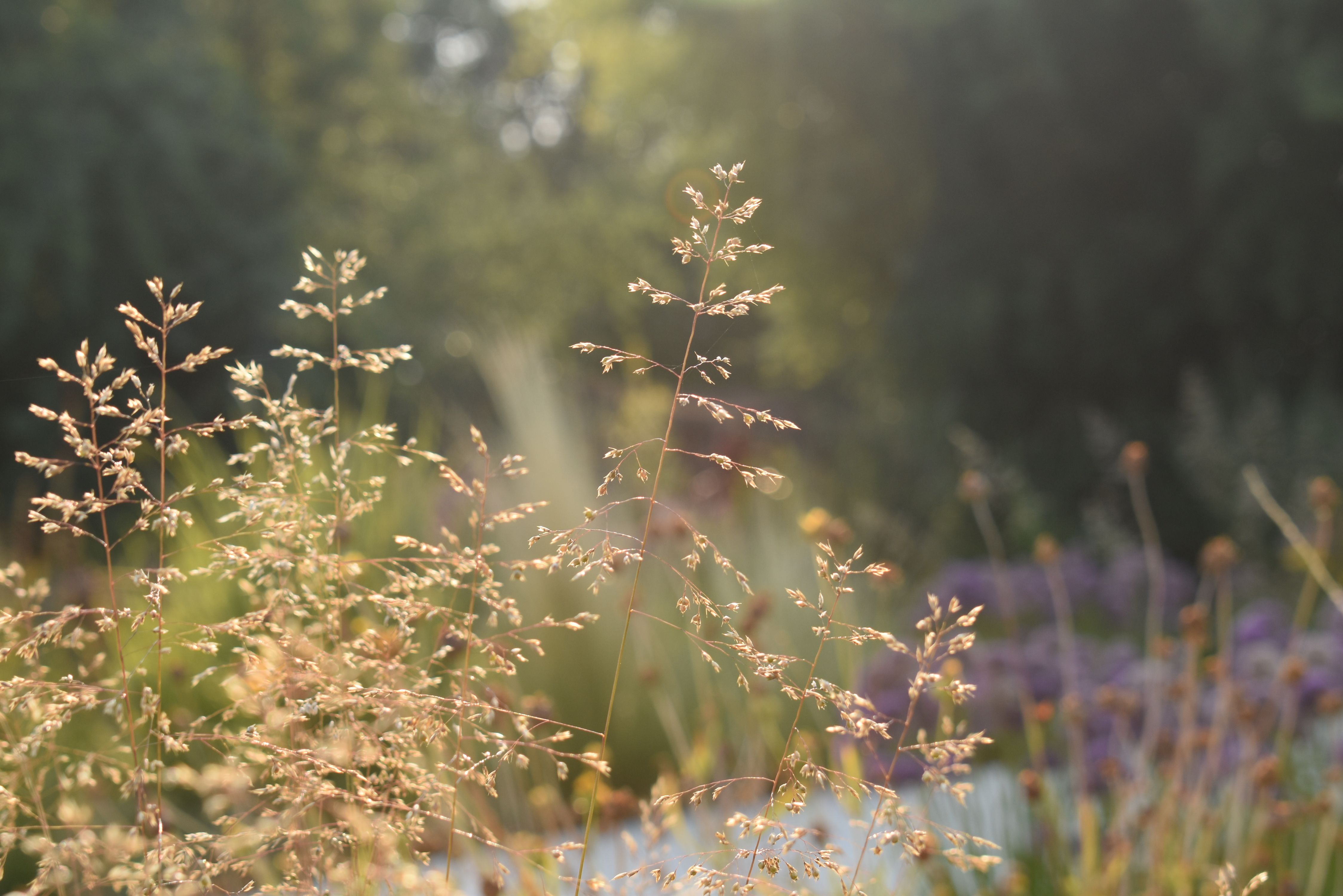
Prairie Dropseed Sporobolus heterolepis
This clump forming, warm season, ornamental grass gets its name, Prairie Dropseed, from being found naturally in prairies, glades and other large open areas as well as from dropping small, rounded mature seed heads in the fall. The medium-green foliage is fine, wispy, and hair-like. Summertime brings open and airy flowering panicles that rise above the clumps of foliage on slim stems. The fragrant blossoms come in shades of pink and brown. During fall the long, slender leaves change to a golden yellow with touches of orange and finally fade to a light bronze by wintertime.
-
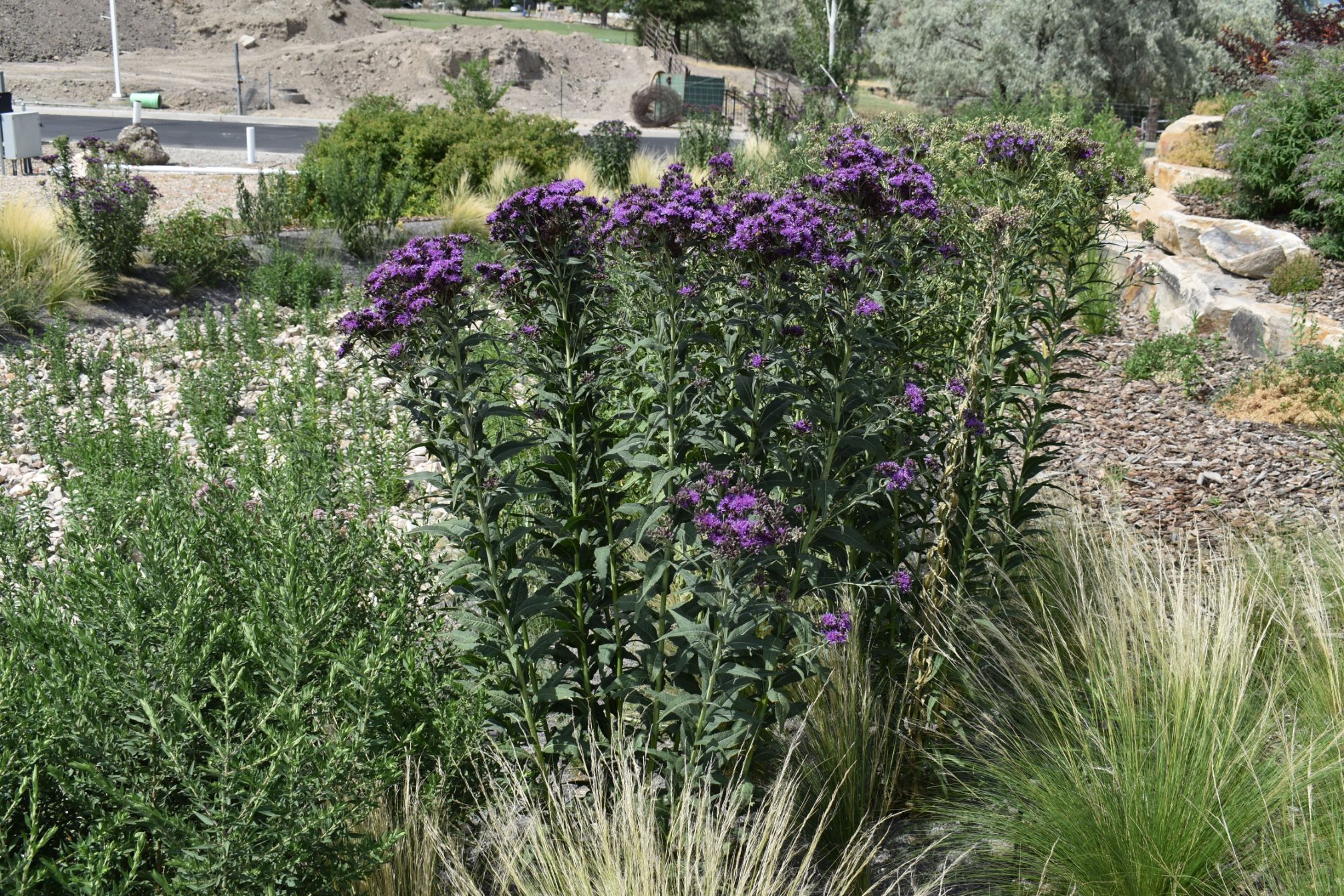
Prairie Ironweed Vernonia fasciculata
A tall perennial that displays grand clusters of purple blossoms that sit atop attractive, roughly edged green foliage. These prominent flowers will catch your eye, and that of the American Painted Lady butterfly, in the late summer and early fall. Ironweed does well in moister soils.
-
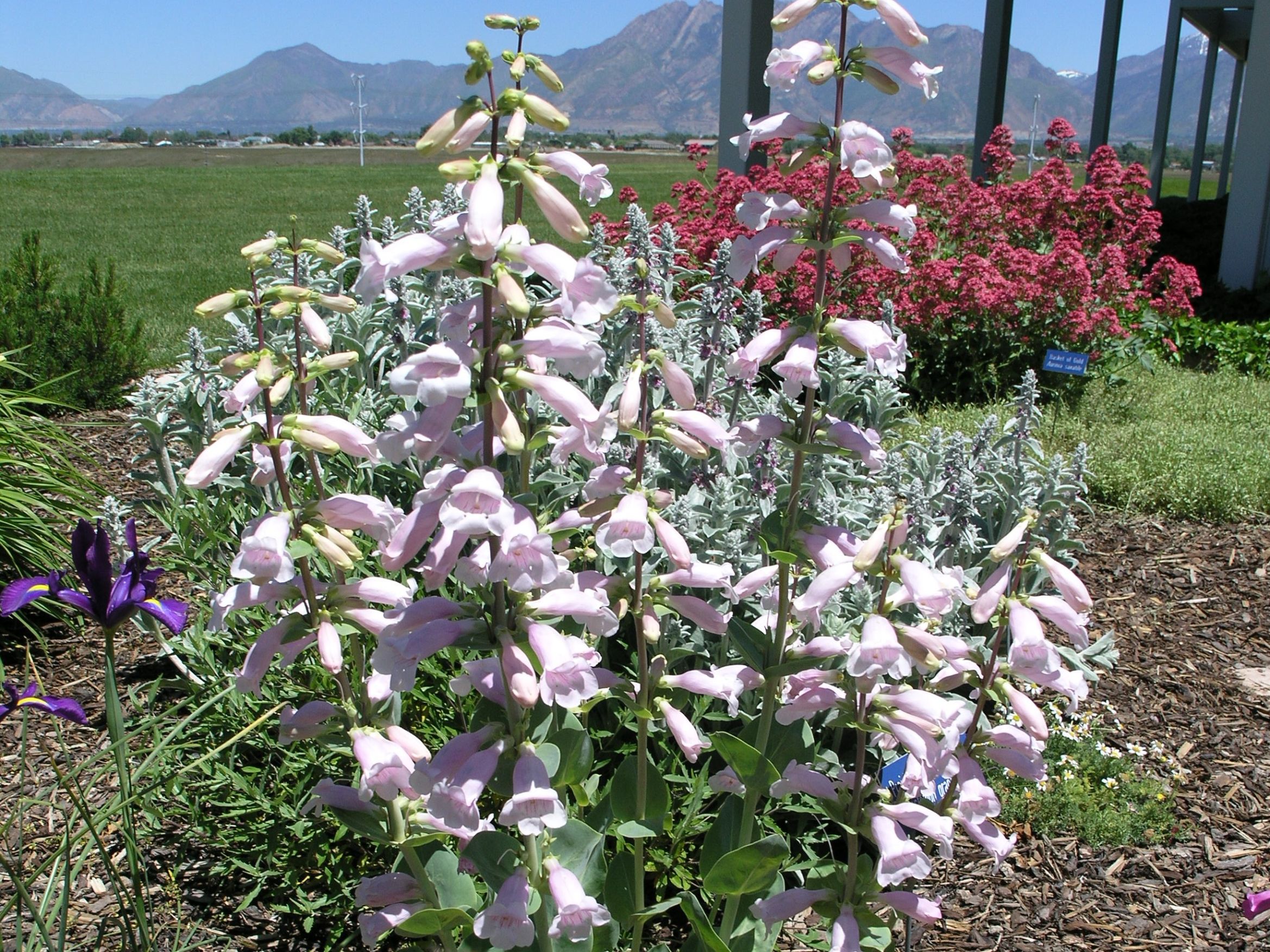
Prairie Jewel Penstemon Penstemon grandiflorus 'Prairie Jewel'
'Prairie Jewel' was the Plant Select winner for 2000, featuring large spring flowers that vary in color from pink to lavender or purple. It is an upright perennial with thick waxy gray-green leaves that clasp the stem. May have a short bloom-time followed by dieback of the foliage. May also be short lived. Plant in well-drained soil. Tolerates drought.
-
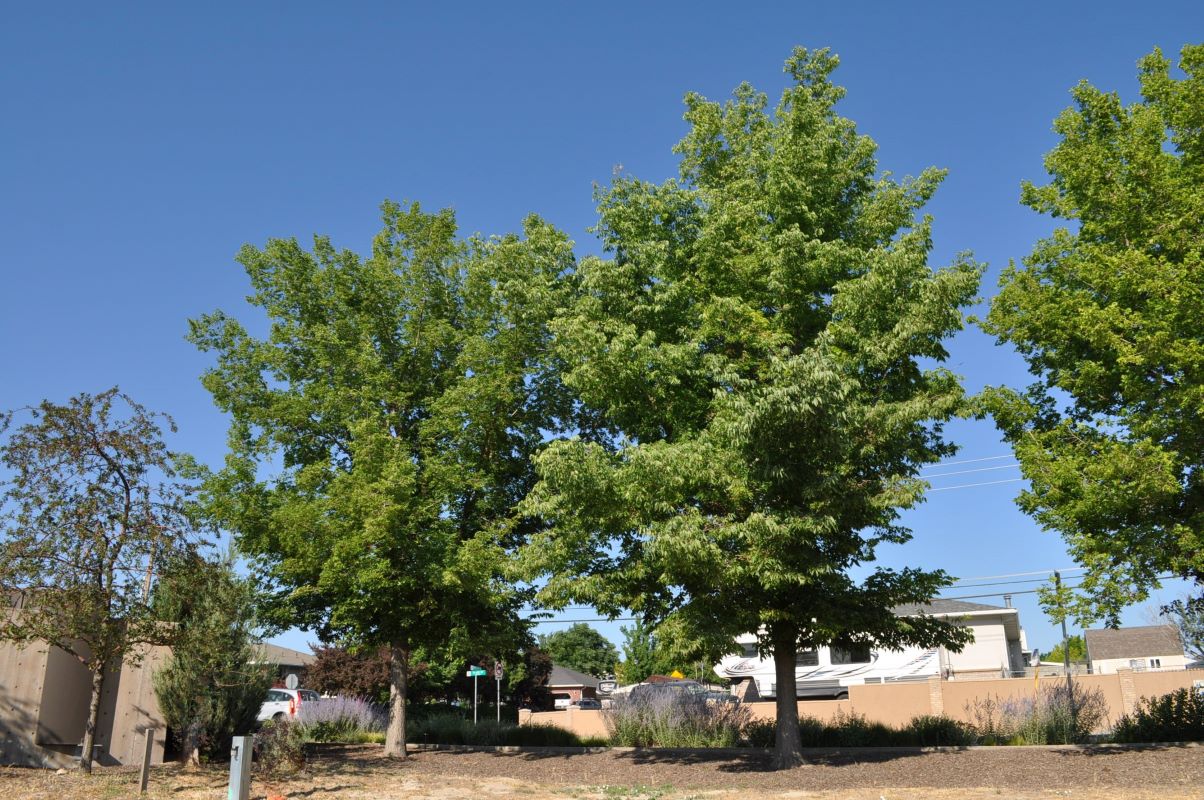
Prairie Pride Hackberry Celtis occidentalis 'Prairie Pride'
A tough, medium to large deciduous shade tree forming a broad oval shape. This variety has better trunk and branching structure than the species. The distinctive bark is ridged and sometimes corky, and the small sweet fruits are favored by wildlife. The asymmetrical, spearhead-shaped leaves are rough textured and turn yellow in fall. Tolerates an incredibly wide range of soil and environmental conditions, including strong winds, pollution, flooding, and drought, making it a great tree for park strips and other difficult sites. Although generally disease resistant, it is susceptible to galls which disfigure the leaves but cause no harm. Native to the eastern and central US.
-
Prairie Sky Switch Grass Panicum virgatum 'Prairie Sky'
Dense growing ornamental grass. Long slender leaf blades form a sky-blue column. Wispy tan seed heads bloom in the late-summer to fall and last through winter. Best left throughout the winter and cut back to 4-6 inches in the spring. Tolerant of a wide range of soils. The species is native from Utah to the east coast.
-
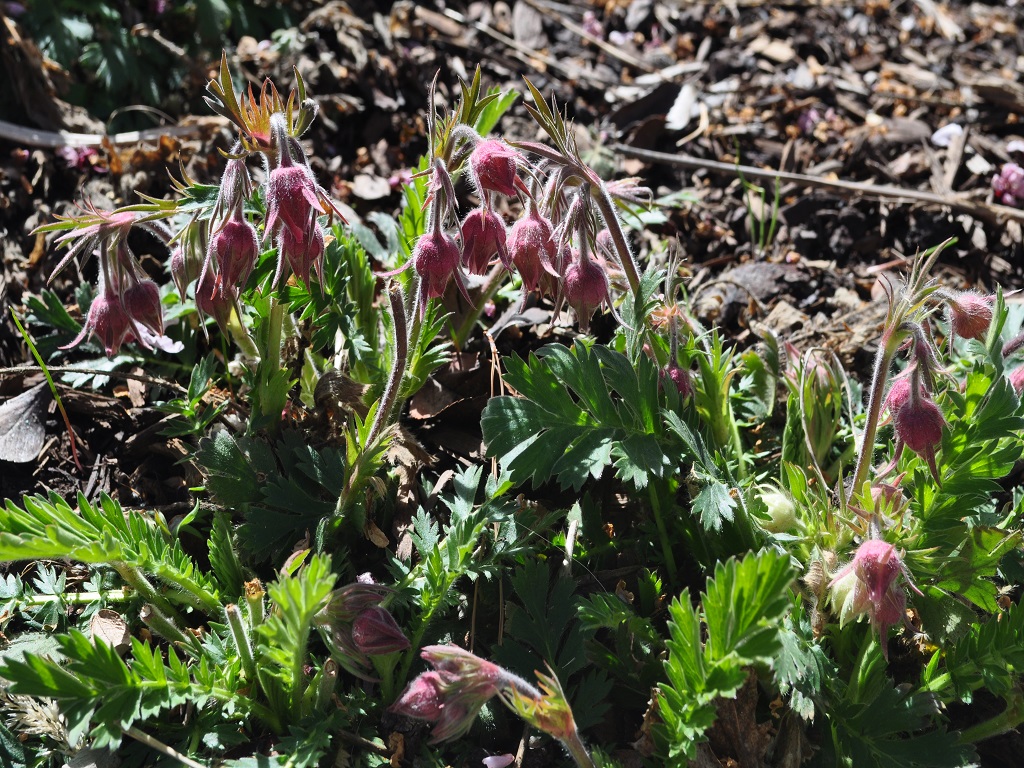
Prairie Smoke Avens Geum triflorum
This waterwise perennial is not only loved for its reddish-purple bowing flowers, but for the seed heads which follow after the flower fades. The seed heads are upright, feathery tails that move with the wind and attract eyes. The fern-like green foliage is also attractive, and although the leaves aren't truly evergreen they may turn beautiful shades of crimson in the winter. This plant spreads by rhizomes and can be left to naturalize into a unique groundcover.
-
Prairie Winecups Callirhoe involucrata
Low-growing, mat-forming perennial. Wine-red cup-shaped flowers begin blooming in mid-late spring and last until autumn. Dark green palmately compound leaves provide a perfect backdrop for the flowers. Transplanting is difficult due to its large taproot. Very drought tolerant but performs best with a little water. Do not overwater. May self seed in optimum conditions.
-
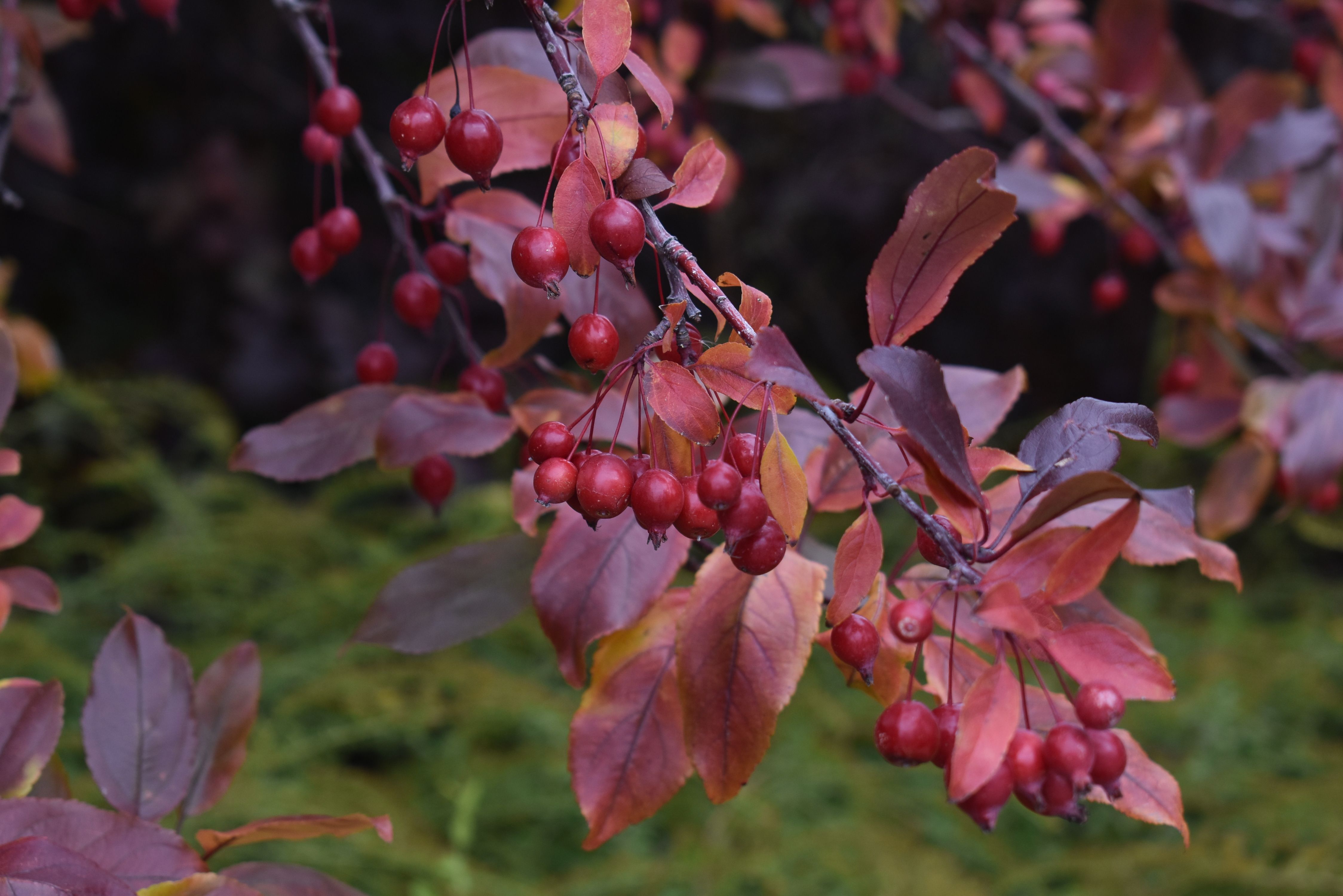
Prairifire Crabapple Malus 'Prairifire'
Small growing, flowering tree becoming rounded with age. Dark-pink blossoms open in mid-spring followed by persistent red fruit. New leaves are burgundy turning green with tints of burgundy in the summer then to orange-red in fall. Good disease resistance. Great accent plant. The fruit of crabapples are edible and are often used in jellies but not pleasant eaten fresh.
-
President Grevy Lilac Syringa vulgaris 'Président Grévy'
Large deciduous flowering shrub. Produces terminal panicles of beautiful lavender-blue double flowers. Green leaves are lance shaped and quite attractive. Performs best when grown in full sun. Once established can be very drought tolerant. Tolerant of a wide range of soils and conditions.
-

Prickly Poppy Argemone munita
Upright growing thorny perennial. Blue-green lobed leaves grow basally and on upright red-tinted stems. An otherwise undesirable plant is redeemed by the large white flowers with deep yellow centers. Very drought tolerant. Avoid planting in formal gardens. Great choice for rock gardens. May be somewhat invasive.
-
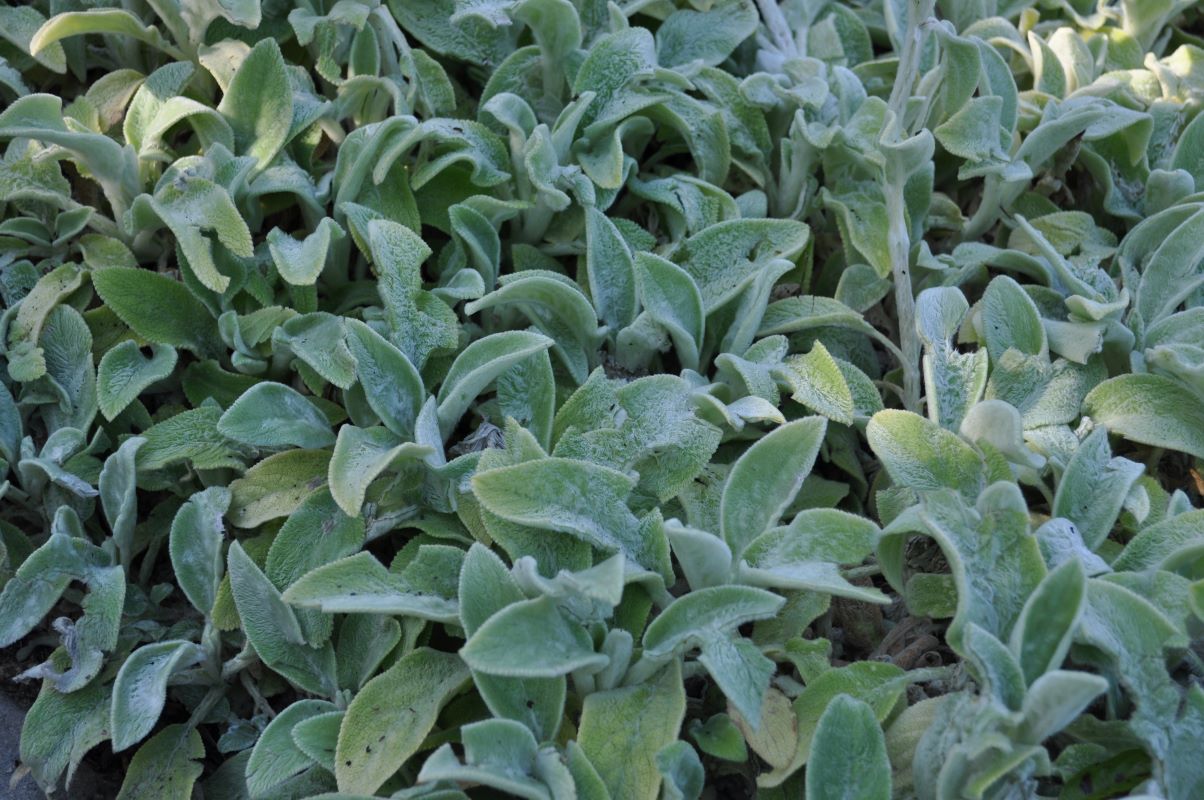
Primrose Heron Lamb's Ear Stachys byzantina 'Primrose Heron'
Dense, mat-forming woolly gray-green perennial. The leaves are hairy and soft and resemble the ears of a lamb, hence the name. Blooms are tall spikes of purple and not very showy. Can form a dense groundcover. Tolerates some drought and needs well-drained soils. Makes a great addition to rock gardens and works well as an accent plant. Remove declining leaves as they die back in the summer heat.
-

Princess Victoria Louise Oriental Poppy Papaver orientale 'Princess Victoria Louise'
This clump forming herbaceous perennial blooms with large, graceful, soft pink flowers with dark purple/black centers. It blooms in late-spring to mid-summer. Light green, often hairy leaves are dissected into lance-shaped segments. After flowering the leaves will go dormant but appear again in the fall. Place next to plants that will fill in the gaps left during dormancy.
-
Princeton Sentry Ginkgo Ginkgo biloba 'PNI 2720'
Tall, columnar deciduous tree. Characteristic fan-shaped leaves turn bright yellow in the fall but last only briefly. Spring brings insignificant green flowers with a pleasant fragrance. This male cultivar does not set fruit. Very tolerant of urban areas and adapts well to pollution and compacted soils. A good choice for any landscape. Could be used more often.
-
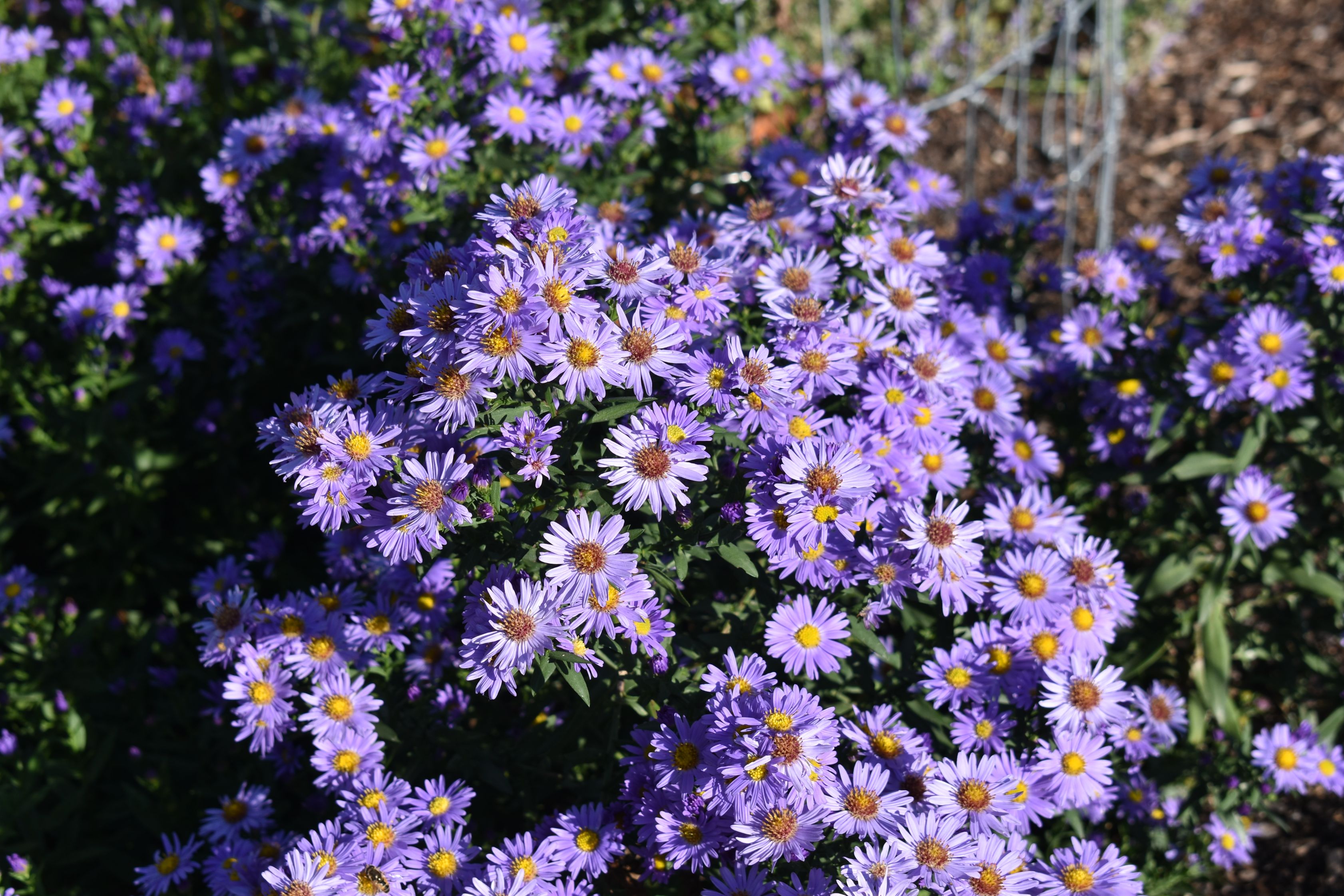
Professor Kippenburg Aster Aster novi-belgii 'Professor Kippenburg'
This dwarf perennial aster produces an abundance of clear blue, daisy-shaped flowers with bright yellow centers in late-summer to fall. It is a tough plant and can handle drought and heat. Will spread gradually but not aggressively.
-
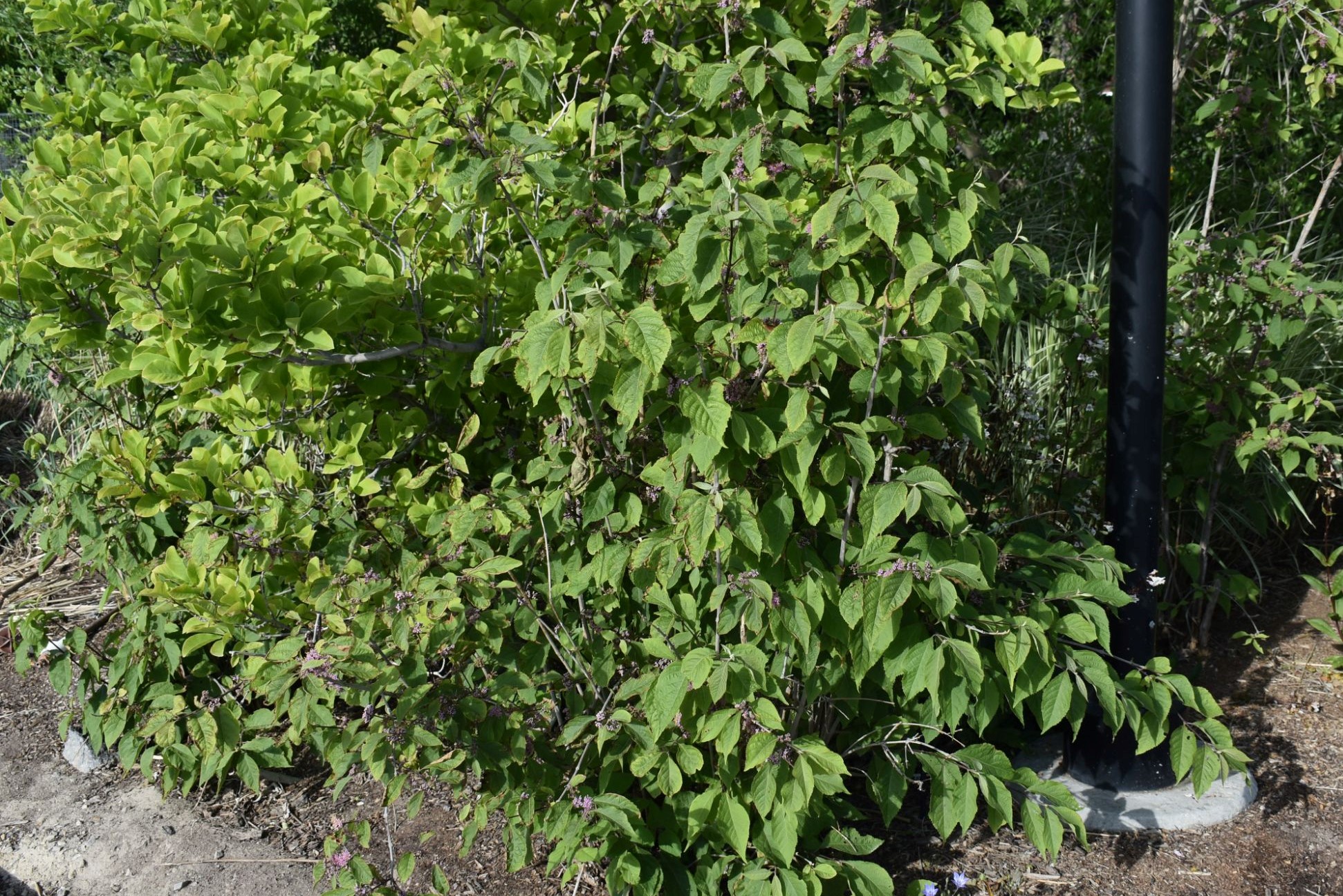
Profusion Beautyberry Callicarpa bodinieri var. giraldii 'Profusion'
Bushy upright, deciduous shrub, blooming small pale pink flowers in mid-summer and producing dark violet berries that ripen around October. The berries are inedible, but not toxic. Tolerates wet or dry, sun or part shade, rich or depleted soils. Grows best, however, in full sun and well drained, more acidic soil.
-

Prospector Elm Ulmus wilsoniana 'Prospector'
The Prospector Elm offers the beautiful shape and hardiness of the classic American Elm, but leaves behind the common issues that arise when the non-cultivar species is planted. It has a wide branching habit and a vase shape. The foliage is a dark green with a glossy sheen which eventually fades to an attractive yellow in the fall.
-
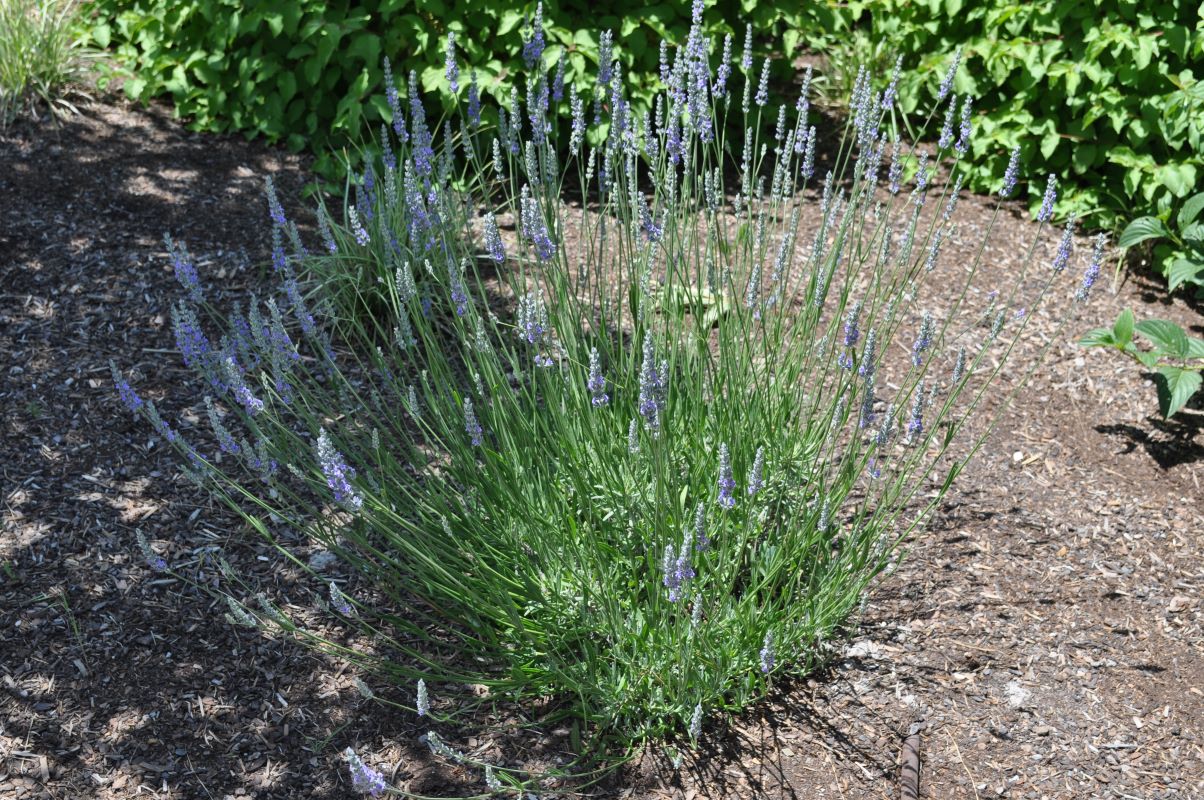
Provence Lavender Lavandula x intermedia 'Provence'
This lavender is a compact, mounded, shrubby perennial. The aromatic evergreen leaves emerge green and then age to grey. The summer brings fragrant, light purple flowers on 18-24” spikes. This variety is a prolific bloomer and loves sunny areas. Overwatering this plant can make it weak and floppy.
-
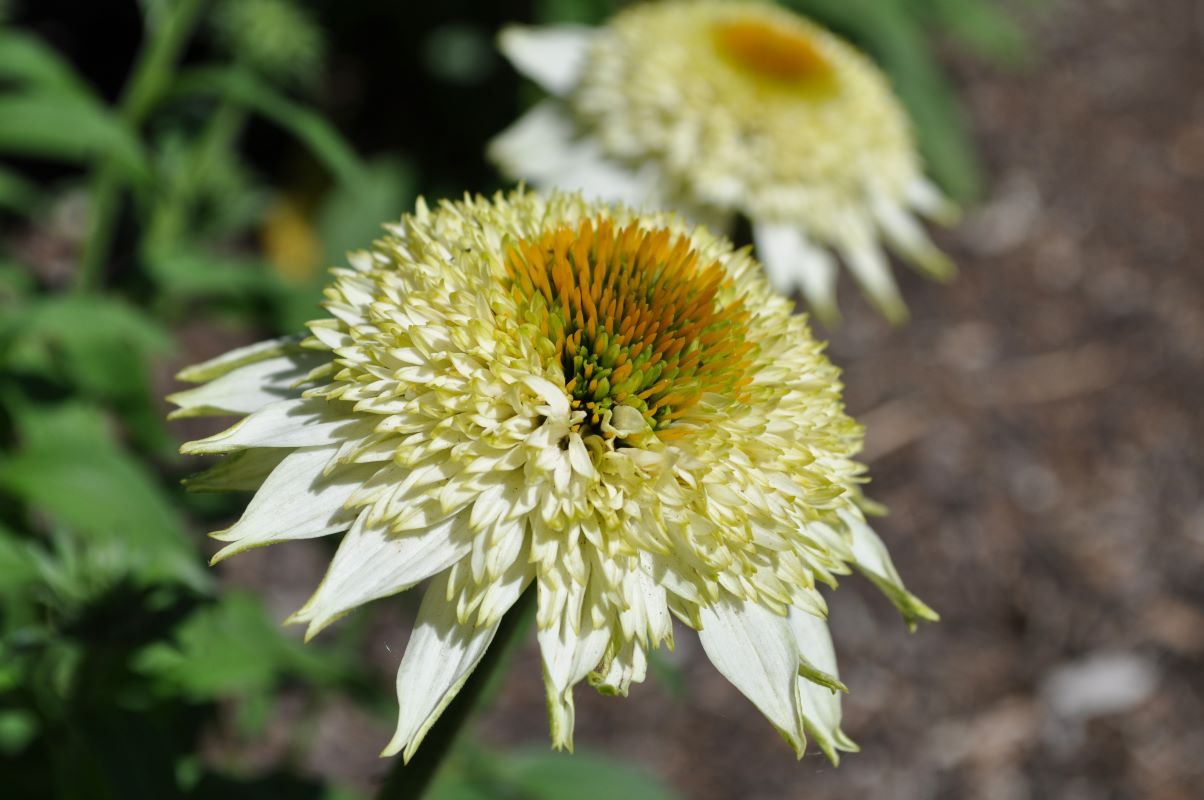
Puff Vanilla Double Coneflower Echinacea 'Puff Vanilla'
This beautiful, double flowering Echinacea has a slight mounding habit with strong upright stems. The flowers bloom early and for a long time. They have a dense, light cream pom-pom center with a base of larger white to yellow petals that curve downward. It tolerates direct sunlight and summer heat.
-

Pugster Pink Butterfly Bush Buddleja 'SMNBDPT'
Pugster Pink butterfly bush offers the small frame of a dwarf butterfly bush without compromising on flowers. Large, dense panicles of bubblegum-pink flowers, loved by butterflies and hummingbirds, bloom continuously from summer through fall even without deadheading. The robust stems of this cultivar are extra cold-hardy and can survive harsher winters.
-
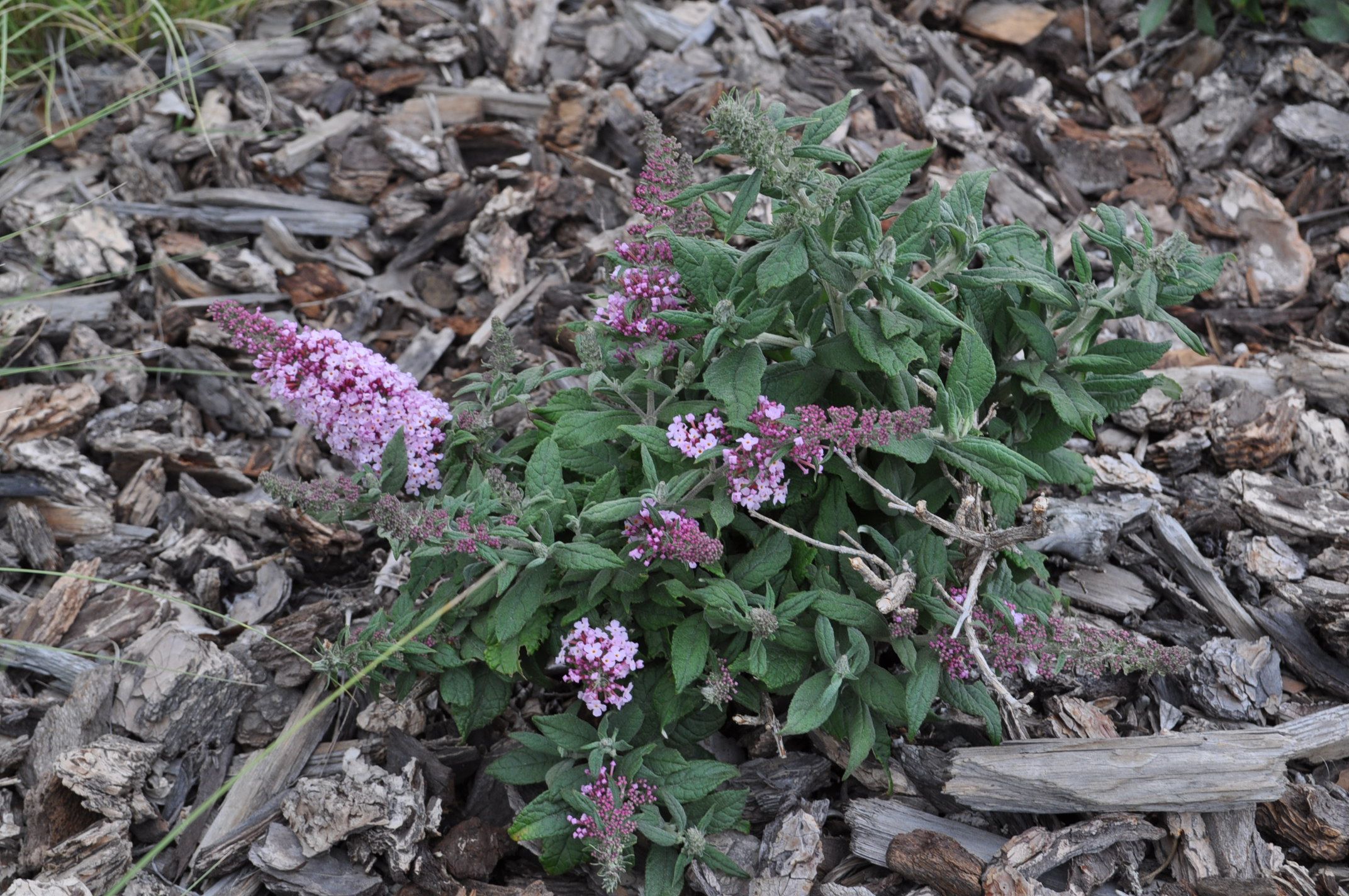
Pugster Pinker Butterfly Bush Buddleja 'SMNBDB'
Pugster Pinker butterfly bush offers the small frame of a dwarf butterfly bush without compromising on flowers. Large, dense panicles of bright pink flowers, loved by butterflies and hummingbirds, bloom continuously from summer through fall even without deadheading. The robust stems of this cultivar are extra cold-hardy and can survive harsher winters. Very similar to the earlier cultivar ‘Pugster Pink’, but with richer bloom color.
-
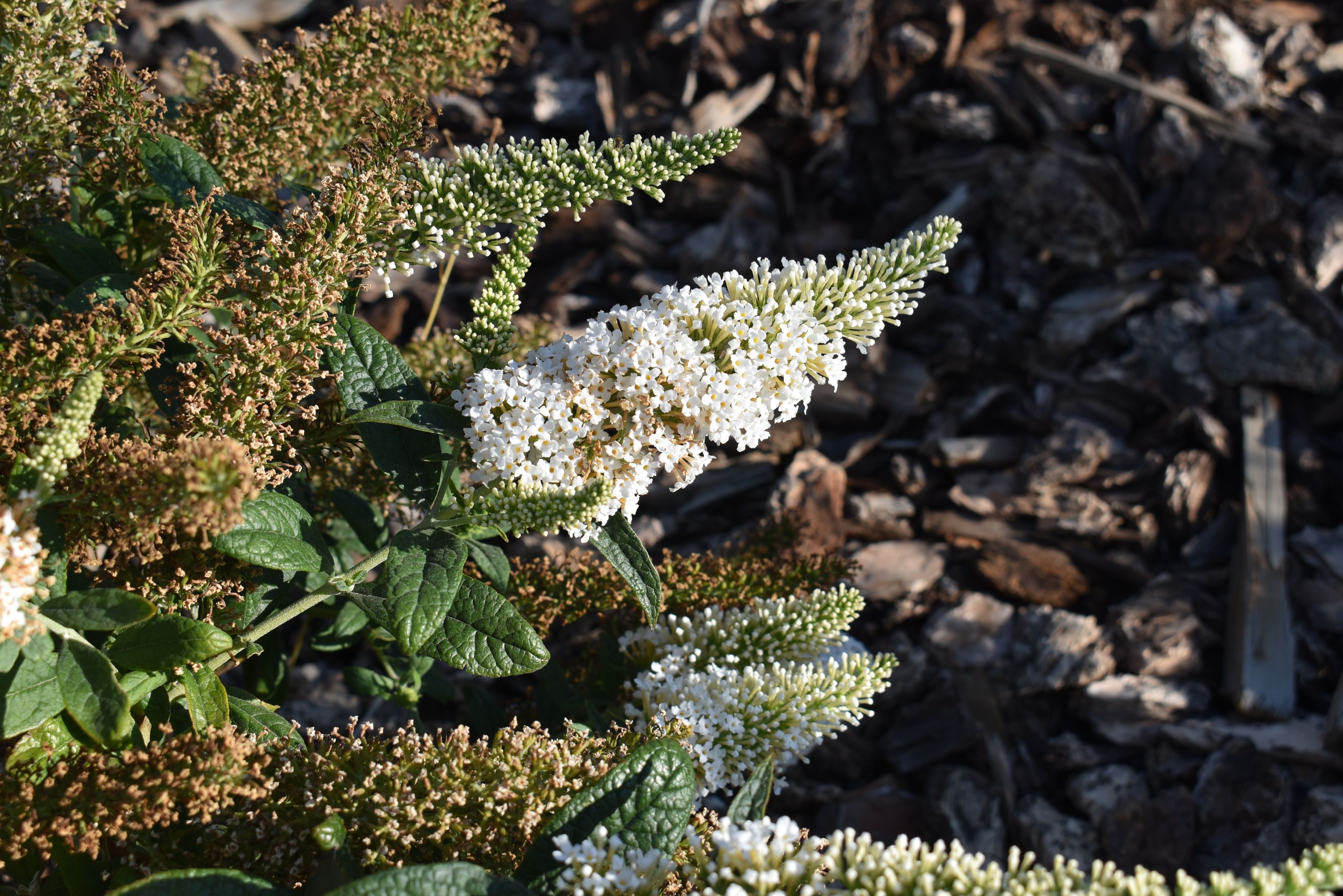
Pugster White Butterfly Bush Buddleja 'SMNBDW'
Pugster White butterfly bush offers the small frame of a dwarf butterfly bush without compromising on flowers. Large, dense panicles of sweet smelling, crisp white flowers, loved by butterflies and hummingbirds, bloom continuously from summer through fall even without deadheading. The robust stems of this cultivar are extra cold-hardy and can survive harsher winters.
-

Pumpkin St. John's Wort Hypericum inodorum 'Kolmapuki'
This multi-season showstopper shines in spring with yellow star-shaped flowers; in fall, its bright orange berries steal the show, accompanied by semi-evergreen foliage with touches of fall color that last into winter. Rust-resistant with great multi-season interest for small spaces. The berries last well in cut flower arrangements.
-
Purple Catalpa Catalpa x erubescens 'Purpurea'
Large deciduous tree with purple heart-shaped leaves that turn dark-green in the summer. Clusters of orchid-like white flowers with yellow and purple markings bloom in spring followed by long slender seed pods. Very tolerant of different soils and soil conditions.
-
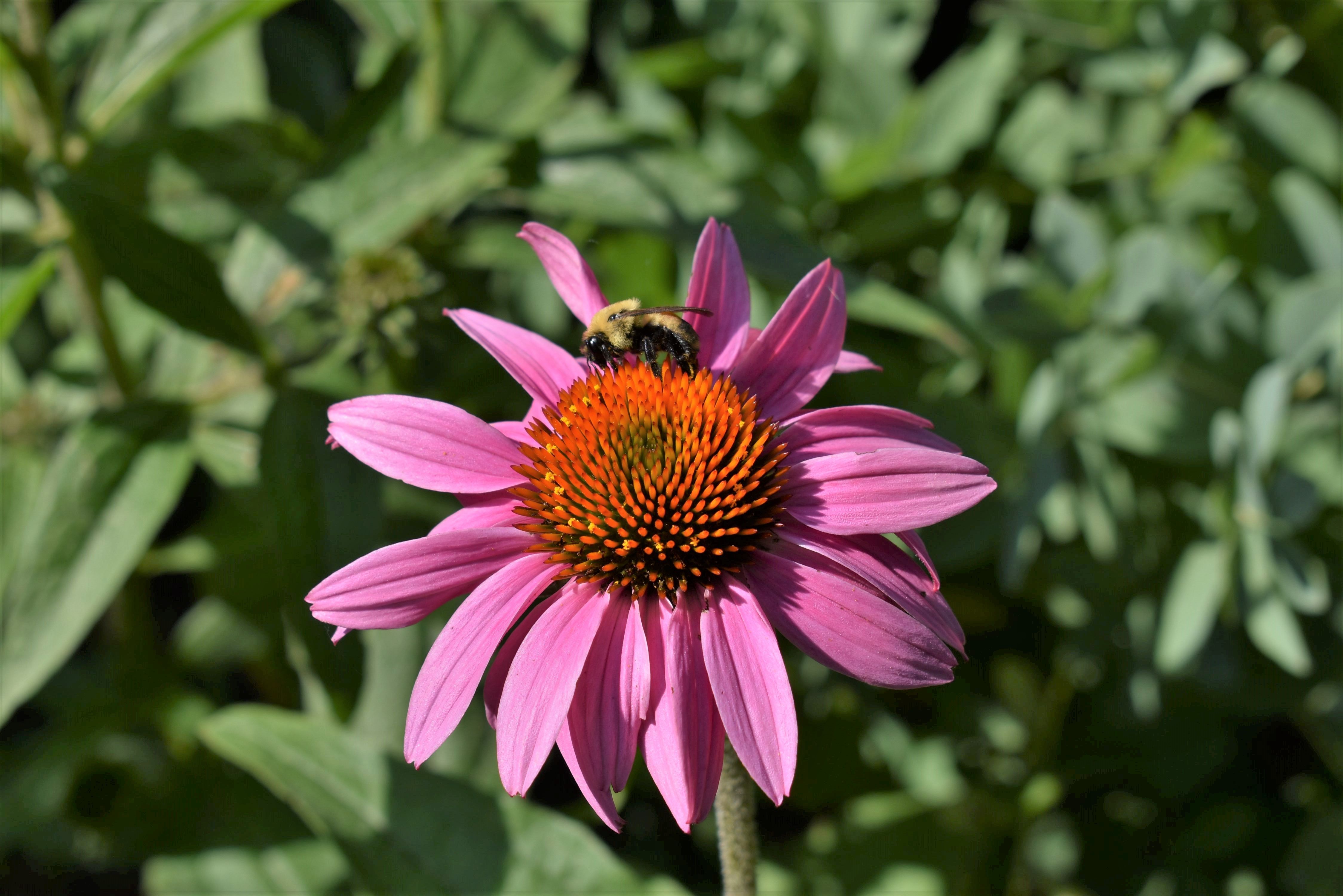
Purple Coneflower Echinacea purpurea
Tough, showy, clump-forming perennial with mid to dark green leaves and large daisy-like flowers. The flowerheads are generally 3- 5" across, rose/purple with coneshaped orange-brown centers. Deadhead to promote additional blooming. Roots are used medicinally. Great for cut flowers.
-
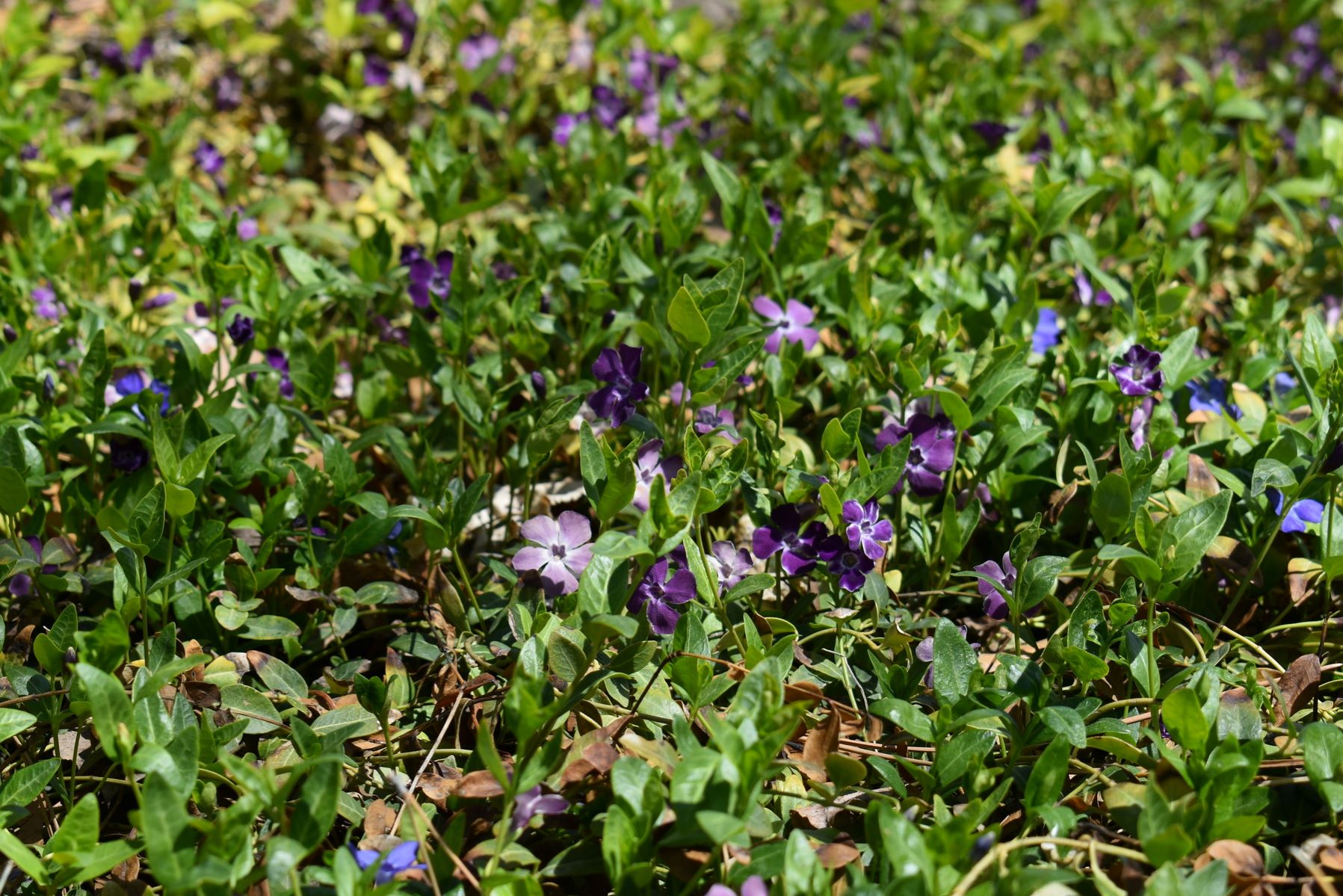
Purple Dwarf Periwinkle Vinca minor 'Atropurpurea'
Low-growing, dense, spreading perennial. Abundant rosy-purple flowers begin blooming in spring and last until autumn. Mid to dark green foliage forms spreading mats that will compete with weeds. Moderate pruning of new shoots will prevent the plant from becoming too invasive.
-
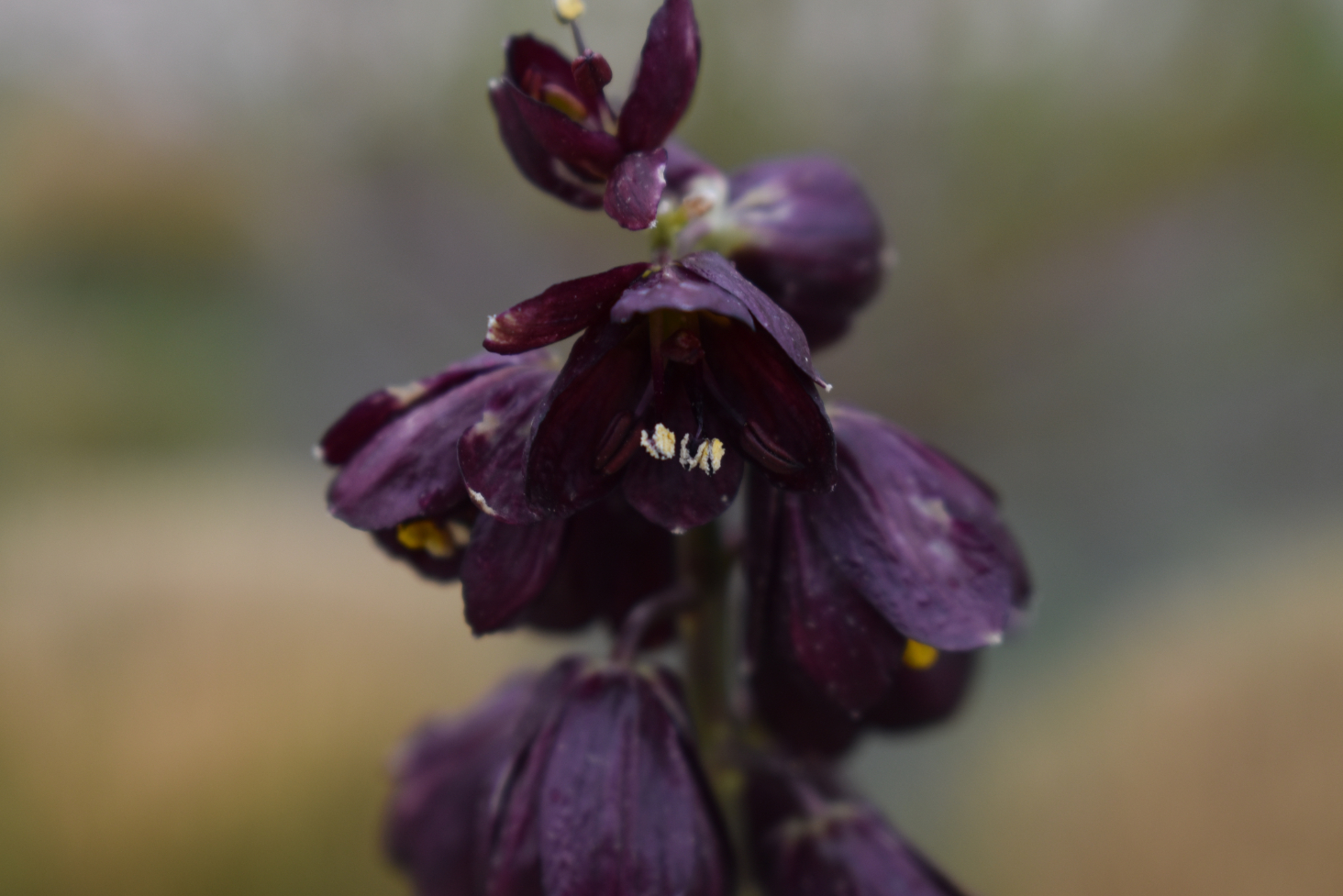
Purple Dynamite Fritillary Fritillaria persica 'Purple Dynamite'
A tall, show stopping spring bulb with towers of glossy purple-black bell-shaped pendent blooms. A very unique and attractive fritillary. Prefers sun and well-draining soils.
-
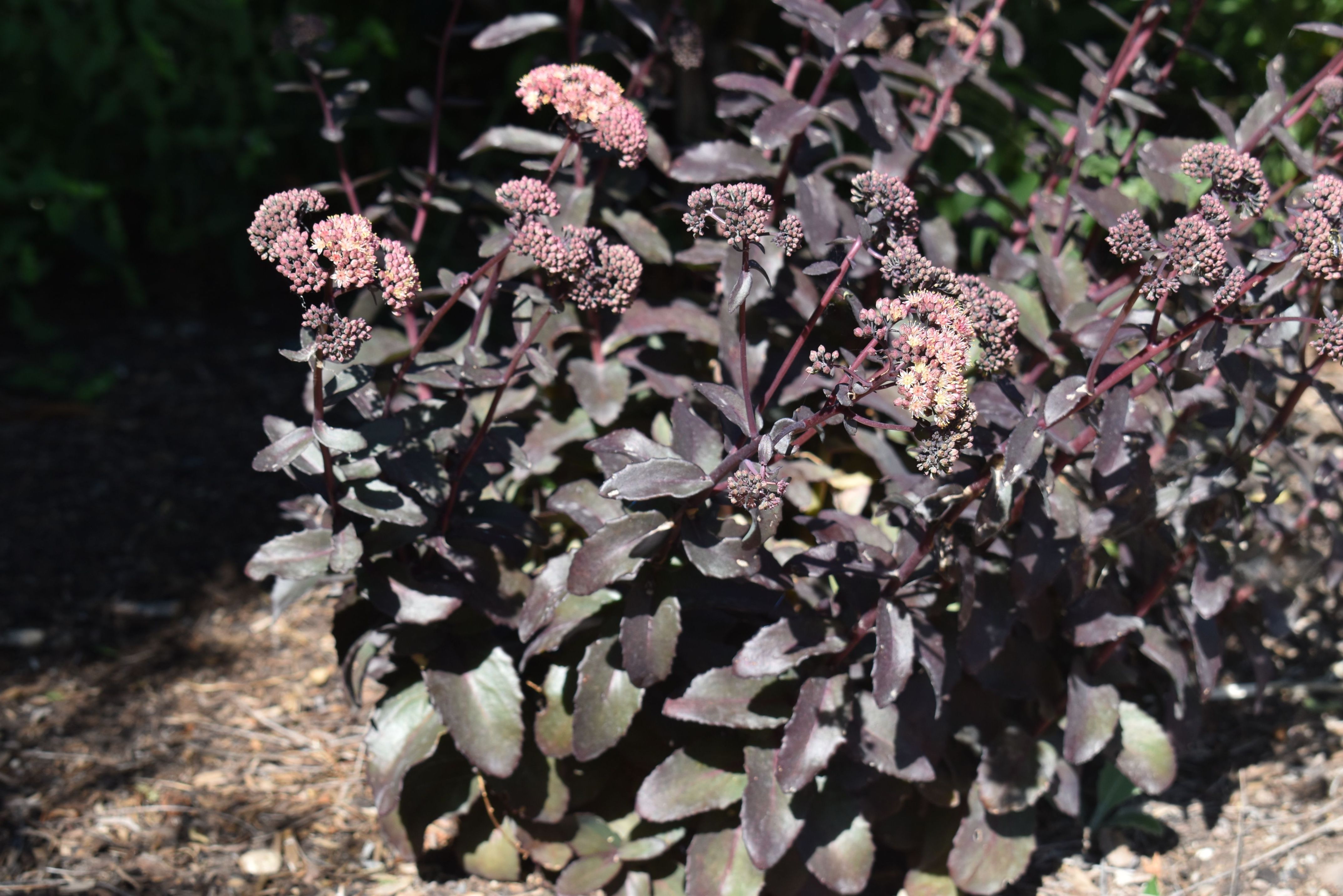
Purple Emperor Stonecrop Sedum 'Purple Emperor'
This succulent grows upright with thick purple leaves that provide excellent, long-lasting color contrast with other perennials. Flat masses of tiny pink to purple, star-shaped flowers bloom in late-summer to fall, attracting bees and butterflies and providing color when many other perennials are past their peak. Leave the dried seed heads up for winter interest. Tolerant of drought and many soil types as long as they are well drained.
-
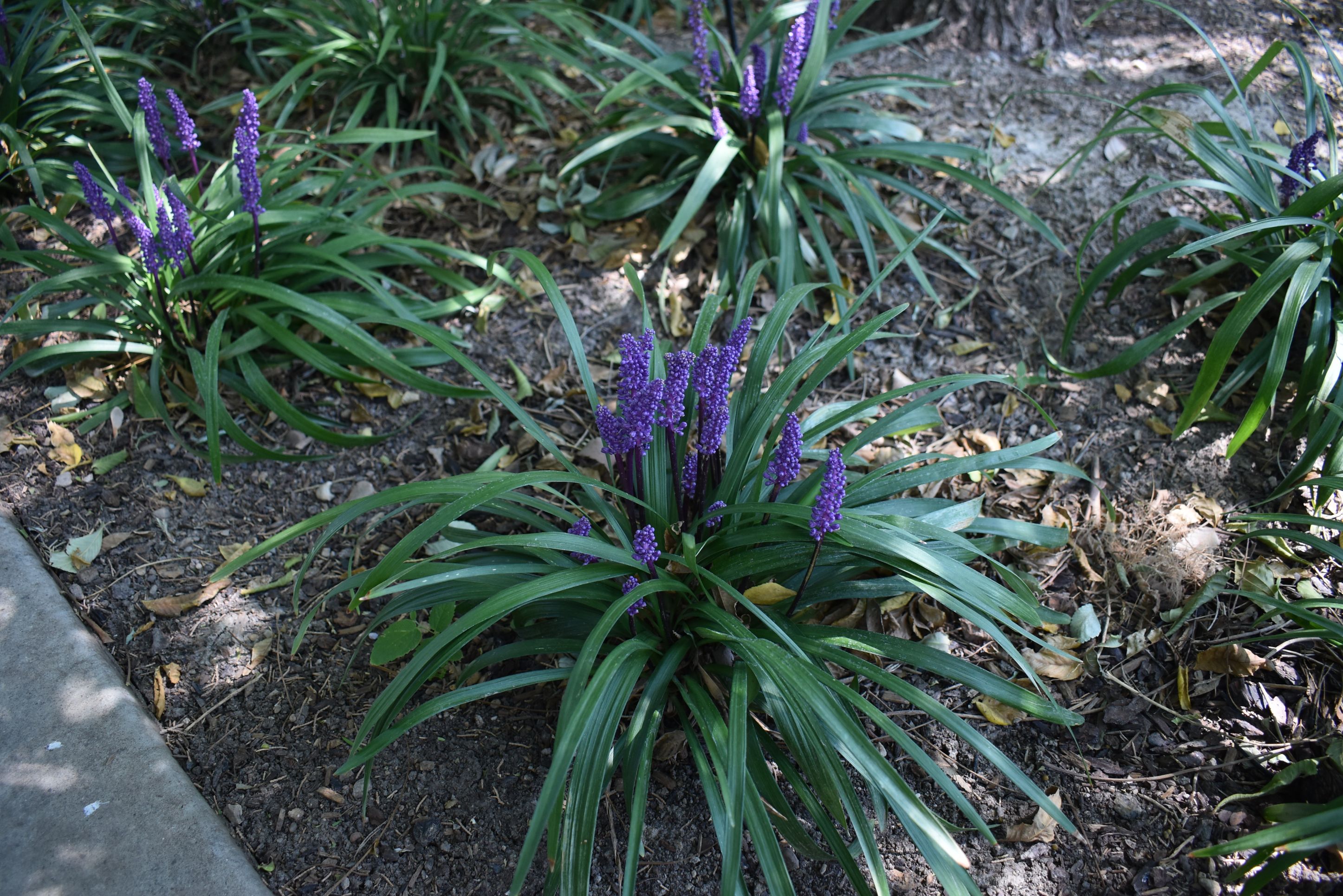
Purple Explosion Lilyturf Liriope muscari 'Exc 051'
Long, slender, arching green leaves of this durable perennial create a beautiful, textured groundcover when planted en masse. In the fall, beautiful, deep purple spikes of blossoms add another burst of color while other perennials are ending their show. Although deer may munch on the leaves, the plants grow out of the damage easily.
-

Purple Hardy Ice Plant Delosperma cooperi
Creeping, mat-forming succulent perennial native to South Africa. Rosy-purple flowers appear in June and last throughout the summer. The knobby bright green succulent leaves form a dense mat. Plant in well-drained soils and water sparingly. Handles heat and drought very well.
-
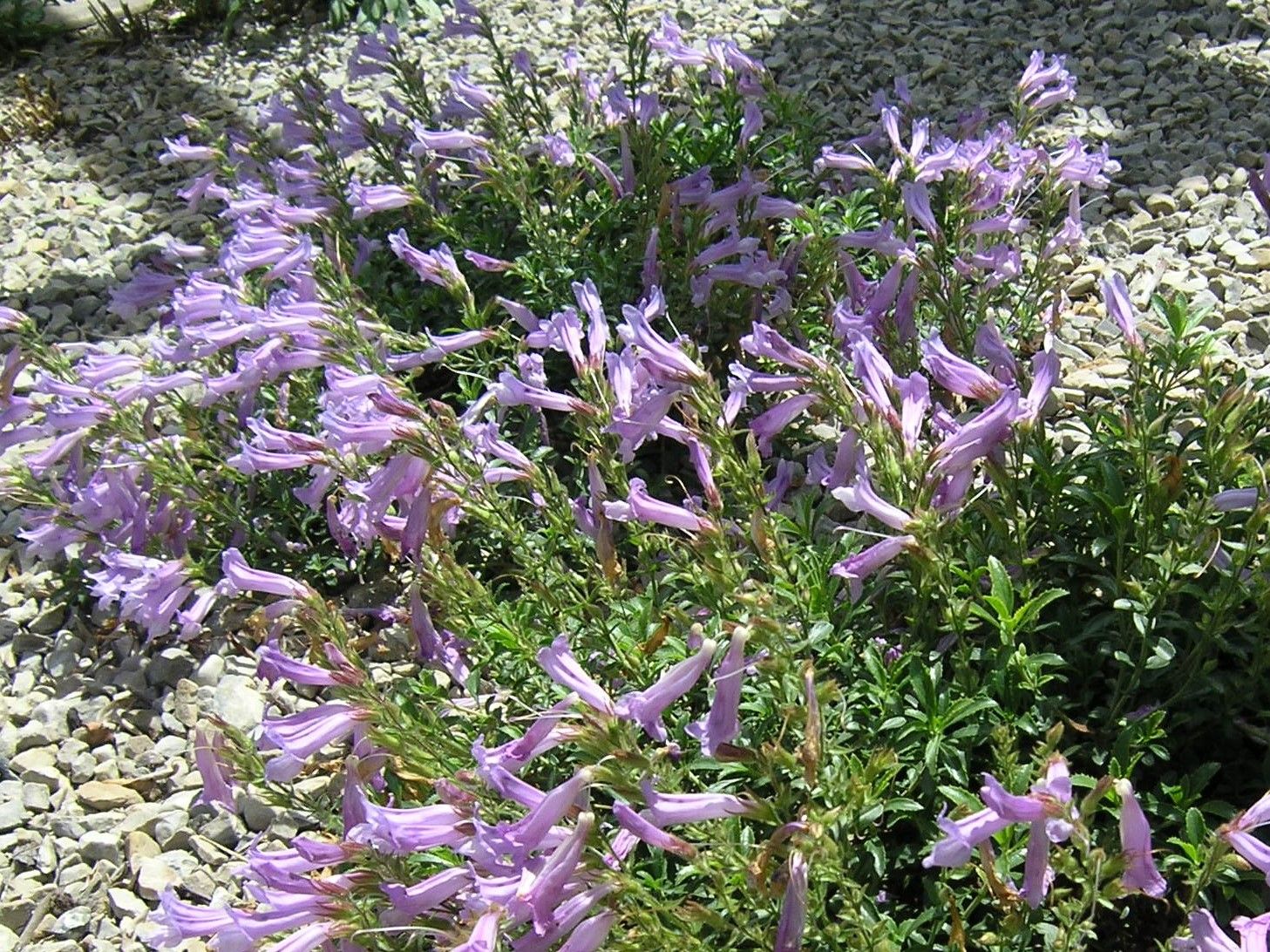
Purple Haze Penstemon Penstemon fruticosus 'Purple Haze'
Spreading, evergreen perennial or sub shrub. Glossy toothed leaves are green and smooth. Delicate tubular flowers are purple to lavender and bloom in mid to late-spring. Prefers well-drained soils.
-
Purple Leaf Wintercreeper Euonymus fortunei 'Coloratus'
Low-growing spreading evergreen perennial. Dark green leaves turn purple-red in winter. Flowers are inconspicuous and sparse if present. Stems root as they touch the ground and may spread significantly. If it reaches a vertical surface it will climb. Tolerant of a wide range of soil. Will not tolerate overwatering.
-
Purple Moor Grass Molina caerulea subsp. caerulea 'Variegata'
Fine textured, clump-forming ornamental grass. Long green leaves grow basally and have yellow to white stripes running the length. Purple hued flowers form in summer fading to tan in the fall. Grows best with more shade in drier climates. Not particularly drought tolerant, use with caution.
-
Purple Pillar Rose of Sharon Hibiscus syriacus 'Gandini Santiago'
A columnar hibiscus—the first of its kind! A mixture of purple and red semi-double flowers bloom throughout the summer. The shape and bloom characteristics make this a perfect shrub for narrow hedging, screens, entry ways and formal landscapes.
-

Purple Prairie Clover Dalea purpurea
This vibrant clover is a reliable and colorful choice for sunny perennial borders or naturalized prairie-style plantings. Fluffy masses of tiny purplish-pink flowers bloom along short thimble-shaped spikes, providing an excellent source of food for bees and other pollinators. The thin leaves form mounds of delicate foliage below the blooms. Like all legumes, clover contributes nitrogen to the soil and helps support other plants in the community. A deep taproot guarantees it will last even in poor soils, heat, and drought. Native to the Midwest.
-
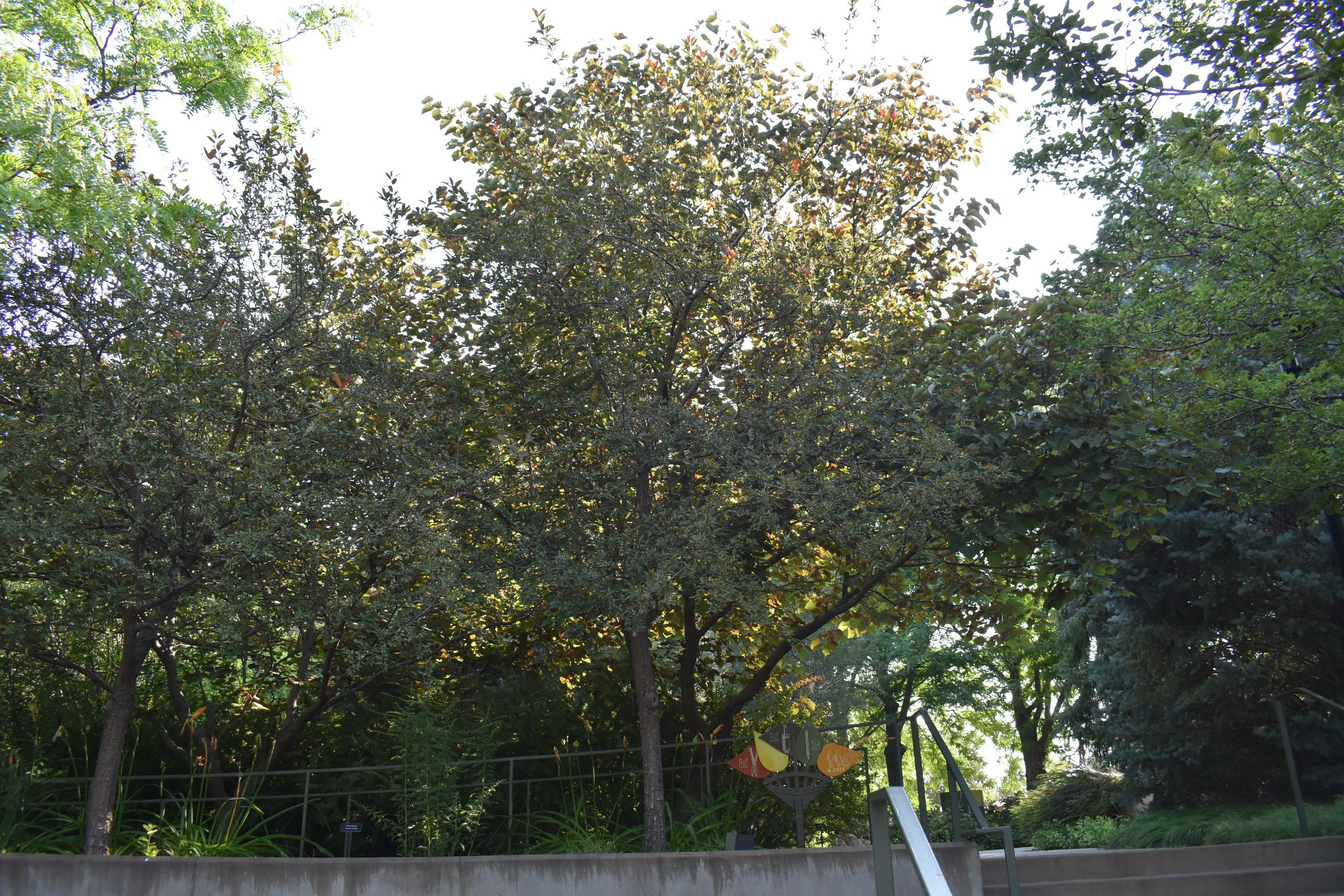
Purple Prince Crabapple Malus 'Purple Prince'
This small, rounded crabapple blooms in the spring and has attractive cherry-like bark and small ovate leaves. Young spring foliage is purplish bronze, maturing to green in the summer, and gold in the fall. Deep pink flowers appear in the spring and develop bluish purple fruit that persist through the winter, providing winter interest and food for birds. This tree is salt tolerant, attractive to birds, and pollinator friendly.
-
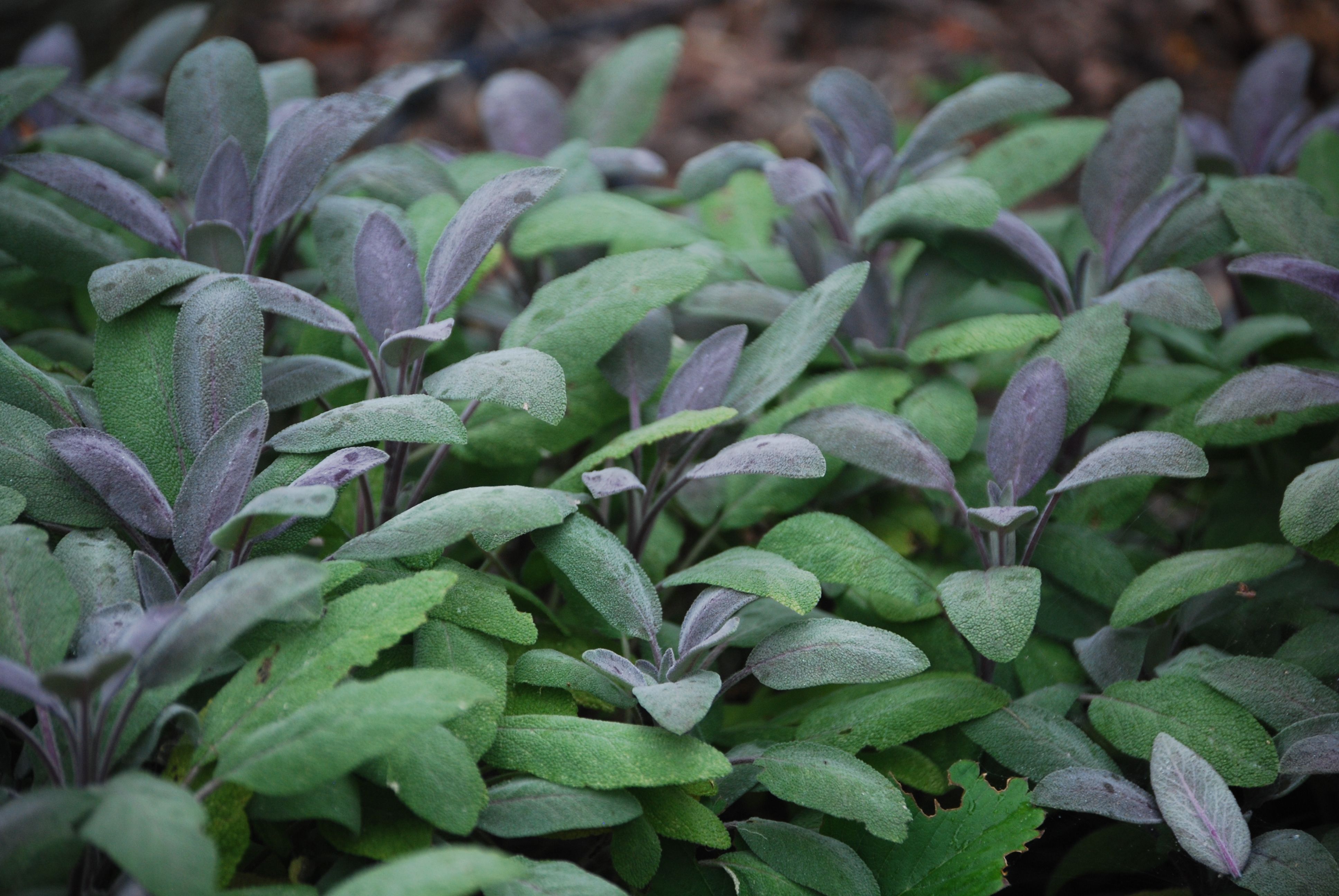
Purple Sage Salvia officinalis 'Purpurascens'
Compact, shrubby semi-evergreen perennial. Cultivar of culinary sage. Grown primarily of ornamental value but can be used for culinary purposes. Oblong, wrinkly leaves are purple, especially when young. Clusters of bright blue flowers bloom in late spring or early summer. Plant in well-drained soils. Tolerant of drought and heat. Do not overwater.
-

Purple Sensation Flowering Onion Allium 'Purple Sensation'
Clump-forming perennial with long, narrow leaves that disappear about bloom time. Large clusters of purple flowers bloom in spring on robust stems growing from the base.
-
Purple Sycamore Maple Acer pseudoplatanus 'Spaethii'
A member of the maple family, this medium-tall deciduous tree differs from the species with striking purple leaves that turn dark green in the summer. Not tolerant of extreme drought. Place in sunny areas where the canopy can spread.
-
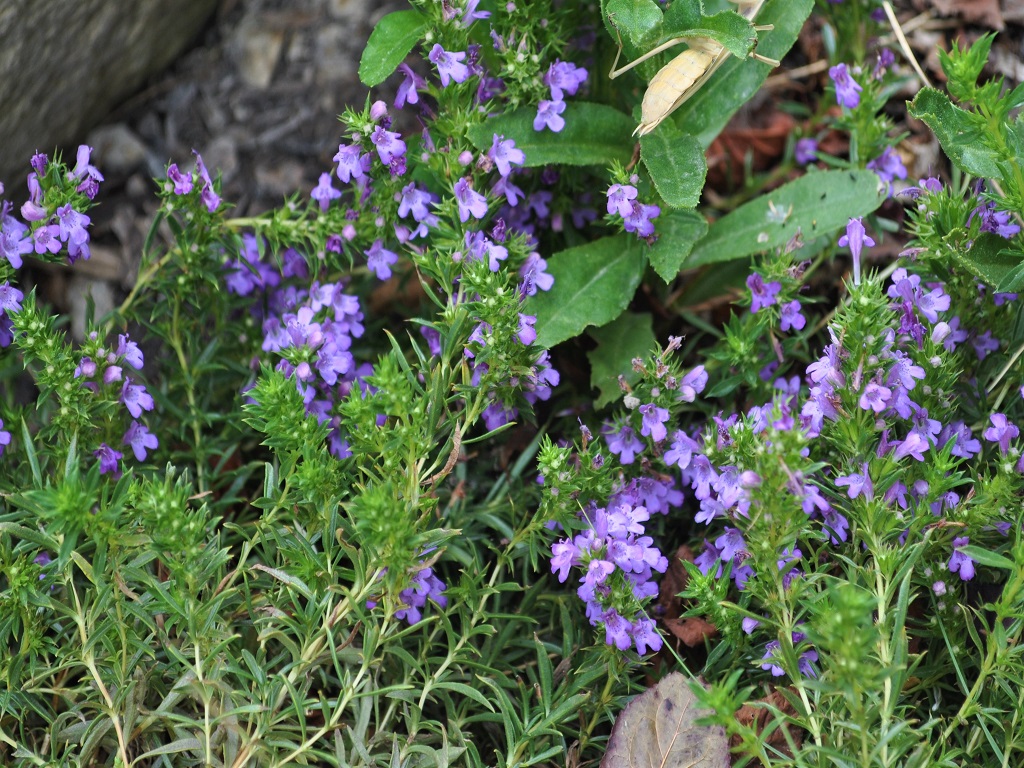
Purple Winter Savory Satureja montana ssp. illyrica
This short mounding perennial produces abundant lavender blue flowers in the late-summer to fall when other plants are starting to decline. Grows well in a variety of different environments, including high elevations, rocky soils, and slopes. The glossy, dark green foliage adds interesting texture to perennial borders and may be evergreen in less exposed conditions. Can be used as a culinary herb similar to the popular annual herb Summer Savory.
-
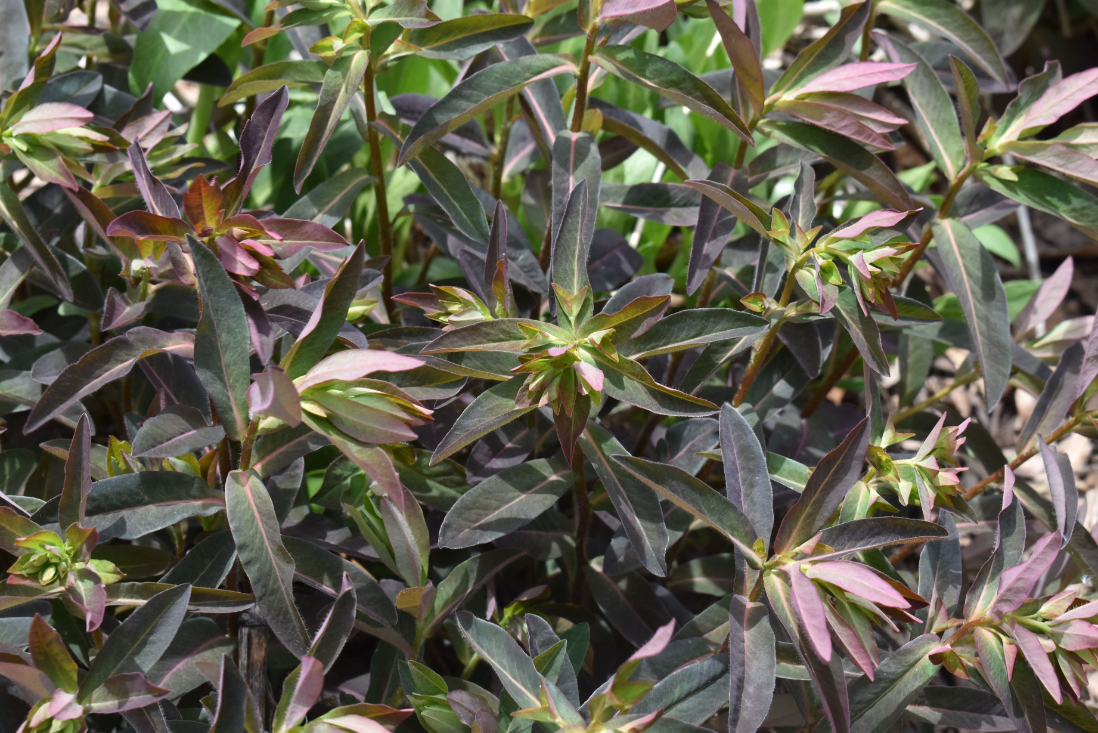
Purple Wood Spurge Euphorbia amygdaloides 'Purpurea'
One of the more popular wood spurges. Dark purple to red lance shaped leaves are attractive throughout the year. Acid-yellow cyathia surround the otherwise inconspicuous flowers. Cut back stems after flowering to promote more growth from the base. Has a tendency to get tall and leggy if not cared for. Prefers moderate amounts of water in well drained soils.
-

Purple-Leaf Japanese Honeysuckle Lonicera japonica 'Purpurea'
Vigorously growing climbing-vine. Rounded leaves are green with shades of purple. Delicate white and yellow flowers with pink and red tints bloom in spring. Considered a noxious weed in some areas of the United States and care should be taken when choosing a location for this plant.
-
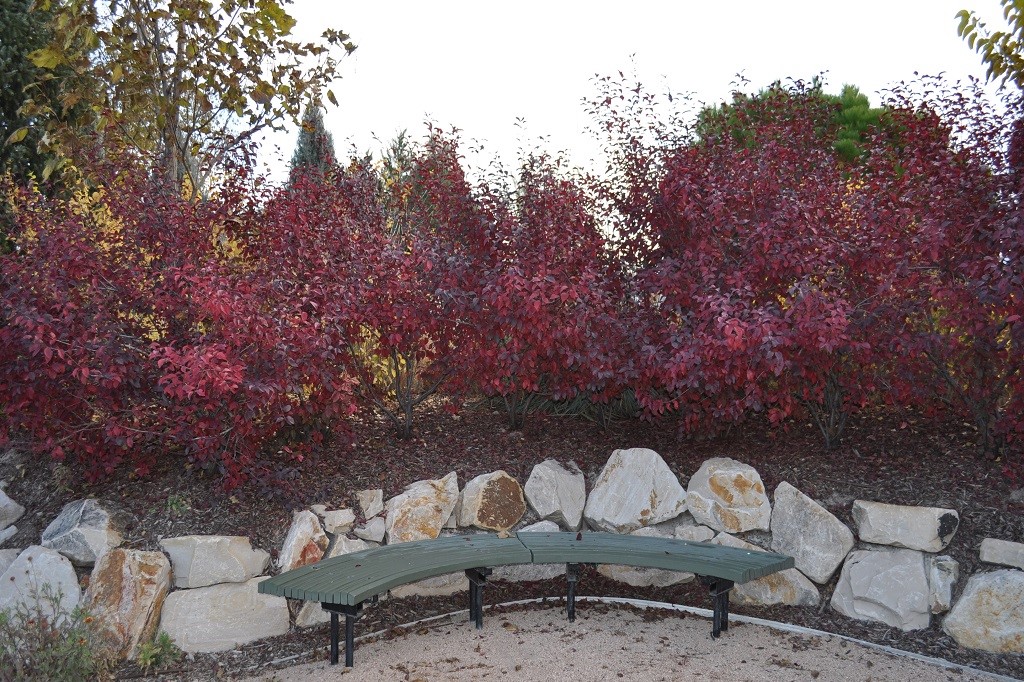
Purple-Leaf Sand Cherry Prunus x cistena
Multi-stemmed deciduous shrub that may be trained with a single-stem. Leaves are reddish-purple throughout the summer and have serrated edges. Solitary white flowers tinted with pink yield sparse amounts of reddish-purple fruits that are preferred by birds. Grows well in well-drained soils.
-
Pygmy Ruby Japanese Barberry Berberis thunbergii 'Pygruzam'
Striking red leaves cover this low-growing, mounding barberry. It works great as a border or mass planting. It's fairly low maintenance but needs moderate water to thrive.
-
Pyramidal European Hornbeam Carpinus betulus 'Fastigiata'
Tall, narrow growing deciduous tree becoming more oval with age. Very tolerant of many different soil types and tolerant of drought. White flowers are very inconspicous. Most attractive characterisitcs are the silvery-grey bark and the deep-green ribbed leaves. Great choice for street trees and other urban uses. Wood is very hard.
-

Pacific Sunset Maple
The glossy green leaves of this maple shine through the heat of the summer before showing off with a dazzling burst of color in the fall. A hybrid of the Norway and Shantung maples, this tough and compact shade tree is resistant to most pests and diseases, including Japanese beetles, and can handle a wide range of conditions.
Acer truncatum x platanoides 'Warrenred'
Mature Size: 30' tall x 25' wide
-

Painted Daisy
Upright growing herbaceous perennial. Lacy green leaves grow in thick clumps with red to dark-pink flowers growing on tall stems. Blooms profusely in late-spring and will rebloom in the fall if dead flowers are removed. Flowers perform well as cut flowers and will work in bouquets. Prefers organic soils and plenty of water.
Tanacetum coccineum
Mature Size: 24-36" tall x 12-18" wide
-

Pale Leaf Yucca
This yucca’s rosette form is stemless. It has bluish-green leaves that are smooth and flexible. The leaves do come to a sharp point, but the flexibility of the rest of the leaf makes it a little safer than other varieties. The flowers are large, cream colored, and bell-shaped with a slight pale green center. It blooms best in full sun, but the foliage itself will grow in part shade.
Yucca pallida
Mature Size: 1-2' tall x 2-3' wide
-

Palmer's Penstemon
Upright herbaceous perennial native to the southwestern United States, with large light-pink flowers that bloom in clusters on tall spikes in early-summer. Waxy blue-green leaves grow on tall upright light-green stems sometimes tinged red. Grow in sandy or gravelly well-drained soils. Will not tolerate excess moisture and may suffer if smothered with mulch. Has a life-span of 3-4 years; after that time allow new seedlings to grow and take its place.
Penstemon palmeri
Mature Size: 4-5' tall x 2' wide
-

Panchito Manzanita
A tough evergreen shrub, this naturally occuring hybrid was discovered in western Colorado. Its shiny, attractive green leaves are somewhat rounded and make a lovely carpet of foliage. White-pink flowers bloom in the spring, giving way to small red fruit. It prefers light soils, so be careful not to overwater in heavier soils.
Arctostaphylos x coloradoensis
Mature Size: 1-2' tall x 3-5' wide
-
Paperbark Maple
Small slow-growing deciduous tree with rounded form. Attractive papery cinnamon red bark exfoliates even on the smaller branches. Green trifoliate leaves with gray green undersides may scorch if the tree experiences extended periods of drought. Insignificant green flowers in spring lead to winged seed pods. Plant as a specimen tree. Due to difficulty with propagation it may be expensive to purchase.
Acer griseum
Mature Size: 20-30' tall x 15-25' wide
-

Paprika Yarrow
Long-flowering, spreading, mat-forming perennial. Dusty red flowers can start blooming in late-spring and continue blooming throughout the summer. Fern-like foliage is slighty aromatic. Spreads easily by roots and by seeds. Grows well in many soil types but avoid especially heavy soils.
Achillea millefolium 'Paprika'
Mature Size: 18-24" tall and wide
-
Parry's Agave
Succulent perennial native to south western United States and South America. Produces gray-green leaves in a basal rosette. Leaves vary in shape but are usually close to 15" long and 6" wide. Century Plants are monocarpic meaning that they will flower once in their life. This species may take 25-50 years to flower but when it does will produce a 15' tall inflorescence with with yellow to orange flowers. After flowering the plant will die. Can be propogated by offshoots, called "pups." Very drought tolerant.
Agave parryi
Mature Size: 1-2' tall x 2-3' wide
-
Partridge Feather
Mound-forming semi-evergreen perennial with soft silvery feather-like foliage on downy white stems. Numerous yellow daisy-like flowers bloom in early-summer. Very tolerant of heat and drought. Requires well-drained soils. Great choice for planting in rock gardens and other sunny positions.
Tanacetum densum subsp. amani
Mature Size: 4-6" tall x 18-24" wide
-

Pasque Flower
The violet-purple, bell-shaped flowers and finely-textured foliage of this perennial are covered in silky hairs. The flowers bloom on 6" stalks in early spring and pair well with other spring bloomers like bulbs. The leaves emerge in a rosette from a somewhat woody rootstock.
Pulsatilla vulgaris
Mature Size: 4-10" tall x 8-10" wide
-
Pastor's Pride Lavender
This twice-blooming English lavender has shown excellent cold tolerance. The purple-blue blossoms are large for lavender and bloom on spikes through the summer. The flowers can be deadheaded and dried and used in potpourri or herbal recipes. Deadheading will also promote a late-summer rebloom. It thrives in poor soils and can be quite drought tolerant.
Lavandula angustifolia 'Pastor's Pride'
Mature Size: 24" tall x 24-30" wide
-

Patricia Cranesbill
Mounding bushy perennial. Spring brings 5-petaled magenta flowers with black star-shaped centers. Large toothed leaves are mid to dark green. Cut back after bloom to promote a possible summer rebloom. Plants prefer moist and fertile soils but will tolerate drought and poor soils.
Geranium 'Patricia'
Mature Size: 12-18" tall x 18-24" wide
-
Pawnee Buttes Western Sand Cherry
Deciduous shrub with a groundcover growth habit. Branches spread out gracefully with slender green leaves that have a slight silver sheen to them. Pure-white flowers bloom in spring followed by dark red cherries that are preferred by birds, but edible to humans. Tolerant of poor soils and drought.
Prunus besseyi 'Pawnee Buttes'
Mature Size: 1-1.5' tall x 4-6' wide
-

Peach Flambe Coral Bells
This clump forming perennial creates interest spring to fall. Flaming red foliage has peach tones and turns to a deep cool purple when the temperature drops in the fall. The large heart-shaped leaves grow best with shade, but can take sun if they are given more water. Flower stalks rise in the summer with tiny white bell-like flowers.
Heuchera 'Peach Flambe'
Mature Size: 8-16" tall x 12-24" wide
-

Pee Wee Oakleaf Hydrangea
As suggested by the name, this is a dwarf cultivar noted for its smaller stature, leaves and flowers. It blossoms in early-summer with panicles of white flowers that fade to pink and then brown as summer progresses. The leaves are deeply lobed, resembling oak leaves. Autumn brings red and orange hues to its foliage. It grows best in organic soils with moderate moisture.
Hydrangea quercifolia 'Pee Wee'
Mature Size: 3-4' tall x 2-3' wide
-

Pennsylvania Sedge
A low-growing, grass-like perennial that features wispy, finely-textured mounds of arching mid-green foliage. This sedge can be found growing naturally in the thickets and dry woodlands of Eastern and Central North America. For landscapes, this is perfect for shaded areas needing a groundcover or lawn substitute. Large groupings spread quickly by underground rhizomes.
Carex pensylvanica
Mature Size: 6-12" tall and wide
-
Peony Flowered Rose of Sharon
Vigorous, multi-stemmed, upright, deciduous flowering shrub. Numerous showy, violet-pink, double flowers are borne throughout the summer. Attractive 3-lobed, coarsely toothed leaves grow on erect stems. Tolerant of heat, drought, and poor soils. Prefers fertile soils with moderate amounts of water.
Hibiscus syriacus 'Paeoniflorus'
Mature Size: 8-10' tall x 6-8' wide
-

Peppermint Spice Coral Bells
Frosty green foliage with silver and plum veins can add the perfect amount of color to those shaded areas within the landscape. The leaves create the perfect backdrop for the delicate, rosy-pink blossoms that sit high above the foliage in late spring to early summer. As the weather cools, the leaves take on warmer shades of red and orange.
Heuchera 'Peppermint Spice'
Mature Size: 8-18" tall x 10-12" wide
-

Persian Violet
Fall-blooming perennial with large, mottled, ivy-like leaves that emerge after the flowers bloom and last throughout the winter. Pink flowers with red eyes and reflexed petals are borne one per stalk and bloom in late-summer to fall. Does not require a lot of water to thrive. Prefers partial shade.
Cyclamen hederifolium
Mature Size: 4-6" tall x 6-12" wide
-

Peter Brand Peony
Clump-forming, flowering shrubby perennial. Abundant large fragrant deep red double flowers are 5-7 inches across and bloom in late-spring. Deeply lobed lush green foliage provides additional attraction when plants not in bloom. Plant in fertile well-drained soil. Tolerates some drought once established.
Paeonia lactiflora 'Peter Brand'
Mature Size: 2-3' tall and wide
-

Petit Bleu Bluebeard
It is a easily grown, low mounded deciduous shrub with dark blue flowers, glossy mid to dark green aromatic foliage. Flower blooms in late summer. This plant can handle little drought but crown may rot in poorly drained soil. Flowers are very attractive to butterflies, bees and other beneficial insects. Looks great planted in mass, as a border perennial or as a low hedge.
Caryopteris x clandonensis 'MiniBleu'
Mature Size: 2-2.5' tall and wide
-

Piemont Clary Sage
This plant is a biennial, meaning it typically only grows for two years, but may re-seed. Tall candelabras of lavender-purple bracts and baby blue flowers bloom from spring until late summer. Deadhead for re-bloom. Fuzzy heart-shaped green foliage grows below the blooms.
Salvia sclarea 'Piemont'
Mature Size: 2-4' tall x 2-3' wide
-

Piglet Dwarf Fountain Grass
This compact fountain grass forms dense clumps of finely textured foliage topped with fluffy tan blooms resembling bottle brushes. It is between ‘Little Bunny’ and ‘Hameln’ in terms of size, reaching 1.5’ tall including the flowers. Drought tolerant once established and may occasionally re-seed.
Pennisetum alopecuroides 'Piglet'
Mature Size: 18-24" tall x 24-36" wide
-

Pike's Peak Purple Penstemon
A beautiful hybrid penstemon with constantly blooming small, violet-purple flowers throughout the summer. Narrow, lance-shaped, bright-green foliage is semi-evergreen. Prefers full sun and moist, well-drained soil. Attracts hummingbirds and butterflies and is deer resistant.
Penstemon x mexicali 'Pike's Peak Purple'
Mature Size: 15-18" tall x 12-15" wide
-

Pinball Wizard Onion
This ornamental onion is shorter than it's close relative 'Globemaster' but still boasts the large spherical flower clusters. It's purple blooms attract bees and butterflies through late spring and early summer.
Allium 'Pinball Wizard'
Mature Size: 14-24" tall x 6-8" wide
-

Pineleaf Penstemon
Spreading evergreen perennial native to southern New Mexico and Arizona. Starting in late-spring, profuse tubular orange flowers bloom for nearly two months starting. Flowers are very attractive to hummingbirds. Bright-green foliage is small and narrow resembling needles. Needs well-drained soils. Grows in both traditional and xeric locations.
Penstemon pinifolius
Mature Size: 10-12" tall x 12-18" wide
-

Pink Bachelor Button
Clump forming perennial with light green foliage, gray underneath. Has bright pink thistle-like blooms throughout summer. Related to the knapweeds but not as aggressive. However, will reseed readily.
Centaurea dealbata
Mature Size: 24-30" tall x 18-24" wide
-

Pink Chintz Thyme
This attractive ground cover forms mats of tiny olive-green leaves that are covered by clusters of salmon pink flowers during the summer. This species is not commonly used for culinary purposes due to unreliable strength of aroma. It grow best in full sun and can survive with little water once established.
Thymus serpyllum 'Pink Chintz'
Mature Size: 3-4" tall x 4-12" wide
-

Pink Cloud Beautybush
The beauty bush is best grown for its striking trumpet shaped flowers that bloom in spring in pink clouds. The shrub grows in a vase shape with arching branches. The leaves are dark green and ovate in shape. It will spread by suckers, but not uncontrollably.
Kolkwitzia amabilis 'Pink Cloud'
Mature Size: 6-10' tall and wide
-

Pink Cotton Candy Betony
Spreading herbaceous perennial. Large, green, hairy leaves with prominent veins and serrated edges. The flowers of this cultivar are small, rosy, two-lipped blooms that are grouped in spiked clusters. When flowering this plant has a closer resemblance to salvia then to the gray hairy Stachys genus it belongs. Drought tolerant once established.
Stachys officinalis 'Pink Cotton Candy'
Mature Size: 12-24" tall and wide
-
Pink Dawn Chitalpa
Small flowering deciduous cross between Chilopsis linearis and Catalpa bignonoides created in Uzbekistan in 1964. Green lance shaped leaves are slightly larger than the Chilopsis but much more narrow than the Catalpa. Beautiful orchid-like flowers are pink with flared petals and purple nectar guides along the throat. Tolerant of many soil types and of drought. Usually listed as hardy to zone 5, but may have some die back and difficulty in becoming established in anything lower than zone 6.
x Chitalpa tashkentensis 'Pink Dawn'
Mature Size: 20-30' tall and wide
-

Pink Delight Butterfly Bush
Beautiful medium to large flowering shrub. Can be pruned back to desired height each year, even to the ground if desired. Once established, this plant is tolerant of many conditions. Attracts butterflies and bees. This variety sports dense, 18" long clusters of bright pink, fragrant flowers with orange eyes.
Buddleja davidii 'Pink Delight'
Mature Size: 6-8' tall x 4-8' wide
-

Pink Double Knock Out Rose
Double, pink flowers bloom on this hardy shrub rose from late spring until frost in the fall. The roses are self-cleaning and don't need to be deadheaded. This rose needs full sun, but can handle hot locations easily. Some pruning may be needed to maintain a uniform shape.
Rosa 'Radtkopink'
Mature Size: 3-4' tall and wide
-

Pink Grapefruit Yarrow
This hardy perennial forms large mounds of fern-like foliage that bloom with lavender pink florets throughout the summer. This variety stays relatively compact in its form. It tolerates many soil types but prefers to dry out between waterings.
Achillea millefolium 'Pink Grapefruit'
Mature Size: 12-24" tall and wide
-
Pink Lightning Ajuga
The mint green leaves, edged in creamy white, have a rough, crinkly texture. In mid spring baby pink to mauve blossoms come in abundance over the foliage. A beautiful, colorful, and hardy groundcover perfect for areas needing low-growing, dense coverage.
Ajuga reptans 'Pink Lightning'
Mature Size: 4-6" tall x 12-16" wide
-

Pink Muhlygrass
This clump-forming ornamental grass is native to the mid-western United States. Long, green, thread-like leaves emerge in late-May to early-June and grow up to three feet high. The best feature of this grass is its seed heads that emerge in airy pink clusters in fall. It prefers well-drained soils and should be cut down each year in the spring to remove the dead leaves.
Muhlenbergia capillaris
Mature Size: 2-3' tall and wide
-

Pink Panda Strawberry
Hybrid spreading perennial grown primarily for ornamental purposes. Five-petaled light pink flowers with yellow centers bloom throughout the summer. Flowers sometimes lead to small edible berries. Dark-green leaves are trifoliate and toothed along the edges. Grows best in fertile soils with moderate amounts of water. Tolerant of a wide range of conditions.
Fragaria x ananassa 'Frel'
Mature Size: 3-9" tall x 6-18" wide
-

Pink Parade Yucca
This is a succulent perennial that can withstand drought, and extreme heat. This plant thrives in tough hot environments. It has upright spikey leaves that appear blue to gray-green and produce tall spikes of very long lasting pinkish to coral flowers that attract hummingbirds.
Hesperaloe 'Pink Parade'
Mature Size: 2-3' tall and wide
-

Pink Parfait Siberian Iris
This Iris resembles a rose with the double blossoms of lavender-pink with subtle white-yellow centers. The narrow, upright leaves can add texture and contrast to a planting bed. Pink Parfait is easy to grow and does well in full sun.
Iris sibirica 'Pink Parfait'
Mature Size: 24-28" tall x 18-24" wide
-

Pink Pop Hummingbird Mint
Compact erect herbaceous perennial. Tubular pink flowers appear on spikes beginning in summer and lasting into the fall. Ovate, silvery-green leaves are very aromatic. Attractive to bees and butterflies. Less reliably hardy than other members of the genus. Requires moderate amounts of water in well-drained soils.
Agastache 'Pink Pop'
Mature Size: 12-18" tall x 8-12" wide
-
Pink Pussytoes
Semi-evergreen, mat forming perennial with grey-green, spoon-shaped leaves, that are densely white and hairy beneath. Bears small rose-pink flowerheads on stems 3/4" long in late spring to early summer that resemble little pink kitten toes. Flowerheads are followed by fluffy seedheads. Great for rock gardens. Prefers full sun.
Antennaria dioica 'Rosea'
Mature Size: 2-6" tall x 18" wide
-

Pink Ripple Thyme
Low-growing evergreen perennial with lemon-scented foliage. Small oval leaves are a comely mid to light-green. Clusters of tiny salmon pink flowers bloom in late-spring. Works well as a groundcover or along pathways and rock walls.
Thymus 'Pink Ripple'
Mature Size: 4-6" tall x 8-10" wide
-
Pink Yellowwood
Medium-sized deciduous tree with a broad, rounded crown. ‘Perkins Pink’ is an unusual, pink-flowered cultivar. In spring, wisteria-like clusters of delicate pink blossoms cover the tree. The compound leaves emerge yellowish green before turning mid green in summer and yellow in fall. Wood contains a yellow dye, hence the name.
Cladrastis kentukea 'Perkins Pink'
Mature Size: 30-50' tall and wide
-
Pinokkio Foxtail Lily
This tall perennial grows long leafless stalks in May to June topped with a bright foxtail of orange-yellow flowers. It's leaves grow basally and begin to fade as the flowers hit their peak. It grows best without too much water.
Eremurus x isabellinus 'Pinokkio'
Mature Size: 3-5' tall x 1-2' wide
-

Pinot Gris Coral Bells
This perennial forms clumps of lobed leaves that are muted green and have burgundy udersides. Small white flowers bloom in late-spring to early-summer on tall, airy stems. It prefers organic soils with moderate amounts of moisture. Too much drought and heat can cause the foliage to decline through the summer.
Heuchera 'Pinot Gris'
Mature Size: 9-18" tall x 9-12" wide
-
Pinyon Pine
Picturesque evergreen tree with a rounded form. Gray-green to yellow-green needles come in bundles of incurved leaves 1-2" long. Rounded brownish cones are 1-3" and are a source of edible seeds. The seeds were a major food source for Native Americans. Very tolerant of drought and poor soils.
Pinus edulis
Mature Size: 20-35' tall x 10-15' wide
-
Pissard's Cherry Plum
Small, flowering deciduous tree. Abundant leaves have serrated edges and emerge dark purple turning to purple green in the summer. Spring brings profuse light pink flowers fading to white. May produce small edible fruit in early summer. Its dense branching structure requires some maintenance to avoid future problems. Requires moderate amounts of water and grows in many soil types.
Prunus cerasifera 'Pissardii'
Mature Size: 25-40' tall x 25' wide
-

Pitcher Sage
One of the few plants with true blue flowers, this xeric perennial blooms in late summer and fall when other plants are starting to decline, with tall spikes of large, deep blue blossoms. Narrow, lance-shaped leaves grow on upright stems up to 5' tall. Attracts bees and butterflies. Plant in well-drained soils. Tolerant of heat and drought.
Salvia azurea var. grandiflora
Mature Size: 3-5' tall x 2-4' wide
-

Pixwell Gooseberry
Deciduous shrub grown primarily for its berries. Spring brings inconspicuous green-red flowers followed by large green to pink berries. This gooseberry is thornless and berries are easy to pick, hence the name. Great for pies and cooking but may be too tart for eating fresh. Grow in fertile soils with moderate amounts of water for greatest berry yield. Prune out 1/3-1/5 of the oldest canes each year to induce greater yields.
Ribes hirtellum 'Pixwell'
Mature Size: 4-6' tall x 5' wide
-

Plains Pricklypear
Cold hardy, perennial cactus. Forms rounded clumps with large fleshy stems and numerous spines. Produces large yellow flowers in May to June, followed by dark red fruit. Do not overwater.
Opuntia polyacantha
Mature Size: 6-12" tall and wide
-

Plumbago
This spreading, low-growing perennial is incredibly useful as a vigorous ground cover. Shiny, medium-green leaves turn bronze-red in autumn. 5-petaled, sky blue flowers appear in loose clusters from late July to late September, attracting a variety of pollinators. Grows well in sun or shade. Might be best used in a contained area, as it can grow aggressively and overtake less vigorous plants in some situations.
Ceratostigma plumbaginoides
Mature Size: 9-12" tall x 12-30" wide
-

Plumosa Sage
Clump-forming perennial usually sold under the cultivar name of 'Plumosa.' Bears beautiful dense clusters of double, rosy-pink or purple flowers in summer. Flower structure is unusual for salvias. Lance-shaped green leaves. Attracts bees and butterflies. Plant in well-drained soils in full sun. Tolerates drought.
Salvia nemorosa 'Pusztaflamme'
Mature Size: 12-18" tall and wide
-

Pocahontas Lilac
Large deciduous flowering shrubs. Profuse purple-maroon fragrant flowers are borne on terminal panicles. Lance shaped dark green leaves provide a beautiful back drop to the flowers. This variety blooms 2 weeks earlier than other lilac species. Once established, it can withstand much drought but prefers moderate amounts of water. Tolerates many soil types and conditions.
Syringa x hyacinthiflora 'Pocahontas'
Mature Size: 10-12' tall and wide
-

Polarstar Hollyhock
Low mounds of large leathery leaves shoot up tall, sturdy stalks of white blossoms in the summer months. These flowers have a similar texture and transparency as crepe paper and make good cut flowers. The soft white petals lead down to a chartreuse to light green eye. Due to their tall size during blooming season they are ideal for small back borders and screens, as well as pollinator gardens and planting beds that are in need of height.
Alcea rosea 'Polarstar'
Mature Size: 5-6' tall x 2' wide
-

Poncha Pass Red Buckwheat
A low-growing sub-shrub, this small wildflower is native to Colorado from selections cultivated exclusively by High Country Gardens. Bright yellow flower clusters appear in mid-spring and turn dark red as they mature in the late-summer. It is tolerant of poor soils and requires very little water.
Eriogonum umbellatum 'Poncha Pass Red'
Mature Size: 4-8" tall x 12-15" wide
-
Ponderosa Pine
This tall evergreen is native to North America and parts of Utah. Some specimens of this large tree can reach as high as 100 feet. Care should be taken in choosing a location for this tree to provide it with plenty of space. Its long green needles grow in clusters of three, occasionally two. The needles twist as they grow out from the cluster. It produces plenty of cones at an average of four inches each. Cinnamon red bark exfoliates in plates.
Pinus ponderosa
Mature Size: 60-100' tall x 25-30' wide
-

Porcelain-berry
This woody, climbing vine offers unique interest in the landscape. Clusters of fruit in an array of colors ranging from pink, to purple, to amethyst come on in the fall and stand out against the attractive mid to dark green foliage. It is grown mainly for the colorful berries. It is known to be invasive in the Eastern U.S., but shows no evidence of spreading in dry climates.
Ampelopsis brevipedunculata
Mature Size: 15-20' tall x wide
-
Porcupine Grass
Large ornamental grass with narrow, stiff, upward pointing foliage. Narrow bright green blades have bright creamy yellow colored variegation in horizontal bands. Often mistaken for Zebra grass, which has similar vegetation, but the zebra grass is taller with drooping blades. Provides great fall and winter interest.
Miscanthus sinensis 'Strictus'
Mature Size: 4-6' tall x 3' wide
-

Portuguese Squill
This bulbous perennial grows as a rosette of long, strappy leaves that often stay green through the fall, winter and spring before going dormant during the dry summer months. Flower stalks emerge in late spring or early summer topped with an eye-catching cone of star-shaped purple-blue blossoms and continue to bloom for 3 weeks or more. The bloom time bridges the gap between spring bulbs like tulips and summer flowering perennials, bringing much appreciated color.
Scilla peruviana
Mature Size: 4-10" tall x 6-8" wide
-
Powis Castle Wormwood
Bushy herbaceous perennial with woody stems. Grown primarily for its finely dissected, silver-green, aromatic foliage. Flowering is rare. Can spread by roots if not contained. Makes an excellent backdrop for any perennial bed. Grow in well-drained soils as it prone to root rot.
Artemisia 'Powis Castle'
Mature Size: 2-3' tall x 1-2' wide
-

PowWow White Coneflower
Pure white flowers with downward arching petals and golden brown centers bloom on sturdy stems. Medium green lance-shaped leaves grow in clusters under the flowers.
Echinacea purpurea 'PAS702918'
Mature Size: 12-24" tall x 12-18" wide
-

PowWow Wild Berry Coneflower
Herbaceous perennial. Rose-purple flowers with downward arching petals and golden brown centers bloom on sturdy stems. Medium green lance-shaped leaves grow in clusters under the flowers.
Echinacea purpurea 'PAS702917'
Mature Size: 12-24" tall x 12-18" wide
-

Prairie Blues Little Bluestem
This selection of little bluestem has gray-blue foliage with a strong upright habit. Late summer brings brown seed heads that turn silver as they mature. Winter and fall turns the foliage brilliant shades of rosy orange. It provides habitat for birds and butterflies.
Schizachyrium scoparium 'Prairie Blues'
Mature Size: 32-36" tall x 12-15" wide
-

Prairie Dropseed
This clump forming, warm season, ornamental grass gets its name, Prairie Dropseed, from being found naturally in prairies, glades and other large open areas as well as from dropping small, rounded mature seed heads in the fall. The medium-green foliage is fine, wispy, and hair-like. Summertime brings open and airy flowering panicles that rise above the clumps of foliage on slim stems. The fragrant blossoms come in shades of pink and brown. During fall the long, slender leaves change to a golden yellow with touches of orange and finally fade to a light bronze by wintertime.
Sporobolus heterolepis
Mature Size: 2-3' tall and wide
-

Prairie Ironweed
A tall perennial that displays grand clusters of purple blossoms that sit atop attractive, roughly edged green foliage. These prominent flowers will catch your eye, and that of the American Painted Lady butterfly, in the late summer and early fall. Ironweed does well in moister soils.
Vernonia fasciculata
Mature Size: 3-6' tall x 1-3' wide
-

Prairie Jewel Penstemon
'Prairie Jewel' was the Plant Select winner for 2000, featuring large spring flowers that vary in color from pink to lavender or purple. It is an upright perennial with thick waxy gray-green leaves that clasp the stem. May have a short bloom-time followed by dieback of the foliage. May also be short lived. Plant in well-drained soil. Tolerates drought.
Penstemon grandiflorus 'Prairie Jewel'
Mature Size: 20-36" tall x 8" wide
-

Prairie Pride Hackberry
A tough, medium to large deciduous shade tree forming a broad oval shape. This variety has better trunk and branching structure than the species. The distinctive bark is ridged and sometimes corky, and the small sweet fruits are favored by wildlife. The asymmetrical, spearhead-shaped leaves are rough textured and turn yellow in fall. Tolerates an incredibly wide range of soil and environmental conditions, including strong winds, pollution, flooding, and drought, making it a great tree for park strips and other difficult sites. Although generally disease resistant, it is susceptible to galls which disfigure the leaves but cause no harm. Native to the eastern and central US.
Celtis occidentalis 'Prairie Pride'
Mature Size: 50-60' tall x 40-50' wide
-
Prairie Sky Switch Grass
Dense growing ornamental grass. Long slender leaf blades form a sky-blue column. Wispy tan seed heads bloom in the late-summer to fall and last through winter. Best left throughout the winter and cut back to 4-6 inches in the spring. Tolerant of a wide range of soils. The species is native from Utah to the east coast.
Panicum virgatum 'Prairie Sky'
Mature Size: 4-5' tall x 2' wide
-

Prairie Smoke Avens
This waterwise perennial is not only loved for its reddish-purple bowing flowers, but for the seed heads which follow after the flower fades. The seed heads are upright, feathery tails that move with the wind and attract eyes. The fern-like green foliage is also attractive, and although the leaves aren't truly evergreen they may turn beautiful shades of crimson in the winter. This plant spreads by rhizomes and can be left to naturalize into a unique groundcover.
Geum triflorum
Mature Size: 6-18" tall x 6-12" wide
-
Prairie Winecups
Low-growing, mat-forming perennial. Wine-red cup-shaped flowers begin blooming in mid-late spring and last until autumn. Dark green palmately compound leaves provide a perfect backdrop for the flowers. Transplanting is difficult due to its large taproot. Very drought tolerant but performs best with a little water. Do not overwater. May self seed in optimum conditions.
Callirhoe involucrata
Mature Size: 6-12" tall x 6-36" wide
-

Prairifire Crabapple
Small growing, flowering tree becoming rounded with age. Dark-pink blossoms open in mid-spring followed by persistent red fruit. New leaves are burgundy turning green with tints of burgundy in the summer then to orange-red in fall. Good disease resistance. Great accent plant. The fruit of crabapples are edible and are often used in jellies but not pleasant eaten fresh.
Malus 'Prairifire'
Mature Size: 15-20' tall and wide
-
President Grevy Lilac
Large deciduous flowering shrub. Produces terminal panicles of beautiful lavender-blue double flowers. Green leaves are lance shaped and quite attractive. Performs best when grown in full sun. Once established can be very drought tolerant. Tolerant of a wide range of soils and conditions.
Syringa vulgaris 'Président Grévy'
Mature Size: 8-12' tall x 10-12' wide
-

Prickly Poppy
Upright growing thorny perennial. Blue-green lobed leaves grow basally and on upright red-tinted stems. An otherwise undesirable plant is redeemed by the large white flowers with deep yellow centers. Very drought tolerant. Avoid planting in formal gardens. Great choice for rock gardens. May be somewhat invasive.
Argemone munita
Mature Size: 15-40" tall x 6-20" wide
-

Primrose Heron Lamb's Ear
Dense, mat-forming woolly gray-green perennial. The leaves are hairy and soft and resemble the ears of a lamb, hence the name. Blooms are tall spikes of purple and not very showy. Can form a dense groundcover. Tolerates some drought and needs well-drained soils. Makes a great addition to rock gardens and works well as an accent plant. Remove declining leaves as they die back in the summer heat.
Stachys byzantina 'Primrose Heron'
Mature Size: 12-18" tall and wide
-

Princess Victoria Louise Oriental Poppy
This clump forming herbaceous perennial blooms with large, graceful, soft pink flowers with dark purple/black centers. It blooms in late-spring to mid-summer. Light green, often hairy leaves are dissected into lance-shaped segments. After flowering the leaves will go dormant but appear again in the fall. Place next to plants that will fill in the gaps left during dormancy.
Papaver orientale 'Princess Victoria Louise'
Mature Size: 29-35" tall x 18-23" wide
-
Princeton Sentry Ginkgo
Tall, columnar deciduous tree. Characteristic fan-shaped leaves turn bright yellow in the fall but last only briefly. Spring brings insignificant green flowers with a pleasant fragrance. This male cultivar does not set fruit. Very tolerant of urban areas and adapts well to pollution and compacted soils. A good choice for any landscape. Could be used more often.
Ginkgo biloba 'PNI 2720'
Mature Size: 40-50' tall x 20-30' wide
-

Professor Kippenburg Aster
This dwarf perennial aster produces an abundance of clear blue, daisy-shaped flowers with bright yellow centers in late-summer to fall. It is a tough plant and can handle drought and heat. Will spread gradually but not aggressively.
Aster novi-belgii 'Professor Kippenburg'
Mature Size: 12-15" tall and wide
-

Profusion Beautyberry
Bushy upright, deciduous shrub, blooming small pale pink flowers in mid-summer and producing dark violet berries that ripen around October. The berries are inedible, but not toxic. Tolerates wet or dry, sun or part shade, rich or depleted soils. Grows best, however, in full sun and well drained, more acidic soil.
Callicarpa bodinieri var. giraldii 'Profusion'
Mature Size: 6-8' tall x 6' wide
-

Prospector Elm
The Prospector Elm offers the beautiful shape and hardiness of the classic American Elm, but leaves behind the common issues that arise when the non-cultivar species is planted. It has a wide branching habit and a vase shape. The foliage is a dark green with a glossy sheen which eventually fades to an attractive yellow in the fall.
Ulmus wilsoniana 'Prospector'
Mature Size: 40' tall and 30' wide
-

Provence Lavender
This lavender is a compact, mounded, shrubby perennial. The aromatic evergreen leaves emerge green and then age to grey. The summer brings fragrant, light purple flowers on 18-24” spikes. This variety is a prolific bloomer and loves sunny areas. Overwatering this plant can make it weak and floppy.
Lavandula x intermedia 'Provence'
Mature Size: 2-3' tall and wide
-

Puff Vanilla Double Coneflower
This beautiful, double flowering Echinacea has a slight mounding habit with strong upright stems. The flowers bloom early and for a long time. They have a dense, light cream pom-pom center with a base of larger white to yellow petals that curve downward. It tolerates direct sunlight and summer heat.
Echinacea 'Puff Vanilla'
Mature Size: 18-22" tall and 24" wide
-

Pugster Pink Butterfly Bush
Pugster Pink butterfly bush offers the small frame of a dwarf butterfly bush without compromising on flowers. Large, dense panicles of bubblegum-pink flowers, loved by butterflies and hummingbirds, bloom continuously from summer through fall even without deadheading. The robust stems of this cultivar are extra cold-hardy and can survive harsher winters.
Buddleja 'SMNBDPT'
Mature Size: 2' tall x 2-3' wide
-

Pugster Pinker Butterfly Bush
Pugster Pinker butterfly bush offers the small frame of a dwarf butterfly bush without compromising on flowers. Large, dense panicles of bright pink flowers, loved by butterflies and hummingbirds, bloom continuously from summer through fall even without deadheading. The robust stems of this cultivar are extra cold-hardy and can survive harsher winters. Very similar to the earlier cultivar ‘Pugster Pink’, but with richer bloom color.
Buddleja 'SMNBDB'
Mature Size: 2' tall x 2-3' wide
-

Pugster White Butterfly Bush
Pugster White butterfly bush offers the small frame of a dwarf butterfly bush without compromising on flowers. Large, dense panicles of sweet smelling, crisp white flowers, loved by butterflies and hummingbirds, bloom continuously from summer through fall even without deadheading. The robust stems of this cultivar are extra cold-hardy and can survive harsher winters.
Buddleja 'SMNBDW'
Mature Size: 2' tall x 2-3' wide
-

Pumpkin St. John's Wort
This multi-season showstopper shines in spring with yellow star-shaped flowers; in fall, its bright orange berries steal the show, accompanied by semi-evergreen foliage with touches of fall color that last into winter. Rust-resistant with great multi-season interest for small spaces. The berries last well in cut flower arrangements.
Hypericum inodorum 'Kolmapuki'
Mature Size: 2.5-3' tall x 2-2.5' wide
-
Purple Catalpa
Large deciduous tree with purple heart-shaped leaves that turn dark-green in the summer. Clusters of orchid-like white flowers with yellow and purple markings bloom in spring followed by long slender seed pods. Very tolerant of different soils and soil conditions.
Catalpa x erubescens 'Purpurea'
Mature Size: 50' tall and wide
-

Purple Coneflower
Tough, showy, clump-forming perennial with mid to dark green leaves and large daisy-like flowers. The flowerheads are generally 3- 5" across, rose/purple with coneshaped orange-brown centers. Deadhead to promote additional blooming. Roots are used medicinally. Great for cut flowers.
Echinacea purpurea
Mature Size: 36" tall x 18" wide
-

Purple Dwarf Periwinkle
Low-growing, dense, spreading perennial. Abundant rosy-purple flowers begin blooming in spring and last until autumn. Mid to dark green foliage forms spreading mats that will compete with weeds. Moderate pruning of new shoots will prevent the plant from becoming too invasive.
Vinca minor 'Atropurpurea'
Mature Size: 6-8" tall x 20" wide
-

Purple Dynamite Fritillary
A tall, show stopping spring bulb with towers of glossy purple-black bell-shaped pendent blooms. A very unique and attractive fritillary. Prefers sun and well-draining soils.
Fritillaria persica 'Purple Dynamite'
Mature Size: 30" tall x 8"-12" wide
-

Purple Emperor Stonecrop
This succulent grows upright with thick purple leaves that provide excellent, long-lasting color contrast with other perennials. Flat masses of tiny pink to purple, star-shaped flowers bloom in late-summer to fall, attracting bees and butterflies and providing color when many other perennials are past their peak. Leave the dried seed heads up for winter interest. Tolerant of drought and many soil types as long as they are well drained.
Sedum 'Purple Emperor'
Mature Size: 12-18" tall and wide
-

Purple Explosion Lilyturf
Long, slender, arching green leaves of this durable perennial create a beautiful, textured groundcover when planted en masse. In the fall, beautiful, deep purple spikes of blossoms add another burst of color while other perennials are ending their show. Although deer may munch on the leaves, the plants grow out of the damage easily.
Liriope muscari 'Exc 051'
Mature Size: 8-12" tall x 8" wide
-

Purple Hardy Ice Plant
Creeping, mat-forming succulent perennial native to South Africa. Rosy-purple flowers appear in June and last throughout the summer. The knobby bright green succulent leaves form a dense mat. Plant in well-drained soils and water sparingly. Handles heat and drought very well.
Delosperma cooperi
Mature Size: 2" tall x 18-24" wide
-

Purple Haze Penstemon
Spreading, evergreen perennial or sub shrub. Glossy toothed leaves are green and smooth. Delicate tubular flowers are purple to lavender and bloom in mid to late-spring. Prefers well-drained soils.
Penstemon fruticosus 'Purple Haze'
Mature Size: 12-18" tall x 18-24" wide
-
Purple Leaf Wintercreeper
Low-growing spreading evergreen perennial. Dark green leaves turn purple-red in winter. Flowers are inconspicuous and sparse if present. Stems root as they touch the ground and may spread significantly. If it reaches a vertical surface it will climb. Tolerant of a wide range of soil. Will not tolerate overwatering.
Euonymus fortunei 'Coloratus'
Mature Size: 6-8" tall x 36" wide
-
Purple Moor Grass
Fine textured, clump-forming ornamental grass. Long green leaves grow basally and have yellow to white stripes running the length. Purple hued flowers form in summer fading to tan in the fall. Grows best with more shade in drier climates. Not particularly drought tolerant, use with caution.
Molina caerulea subsp. caerulea 'Variegata'
Mature Size: 2-3' tall x 2' wide
-
Purple Pillar Rose of Sharon
A columnar hibiscus—the first of its kind! A mixture of purple and red semi-double flowers bloom throughout the summer. The shape and bloom characteristics make this a perfect shrub for narrow hedging, screens, entry ways and formal landscapes.
Hibiscus syriacus 'Gandini Santiago'
Mature Size: 10-16' tall and 2-3' wide
-

Purple Prairie Clover
This vibrant clover is a reliable and colorful choice for sunny perennial borders or naturalized prairie-style plantings. Fluffy masses of tiny purplish-pink flowers bloom along short thimble-shaped spikes, providing an excellent source of food for bees and other pollinators. The thin leaves form mounds of delicate foliage below the blooms. Like all legumes, clover contributes nitrogen to the soil and helps support other plants in the community. A deep taproot guarantees it will last even in poor soils, heat, and drought. Native to the Midwest.
Dalea purpurea
Mature Size: 12-36" tall x 12-18" wide
-

Purple Prince Crabapple
This small, rounded crabapple blooms in the spring and has attractive cherry-like bark and small ovate leaves. Young spring foliage is purplish bronze, maturing to green in the summer, and gold in the fall. Deep pink flowers appear in the spring and develop bluish purple fruit that persist through the winter, providing winter interest and food for birds. This tree is salt tolerant, attractive to birds, and pollinator friendly.
Malus 'Purple Prince'
Mature Size: 15-20' tall x 15-20' wide
-

Purple Sage
Compact, shrubby semi-evergreen perennial. Cultivar of culinary sage. Grown primarily of ornamental value but can be used for culinary purposes. Oblong, wrinkly leaves are purple, especially when young. Clusters of bright blue flowers bloom in late spring or early summer. Plant in well-drained soils. Tolerant of drought and heat. Do not overwater.
Salvia officinalis 'Purpurascens'
Mature Size: 12-24" tall x 12-18" wide
-

Purple Sensation Flowering Onion
Clump-forming perennial with long, narrow leaves that disappear about bloom time. Large clusters of purple flowers bloom in spring on robust stems growing from the base.
Allium 'Purple Sensation'
Mature Size: 24-36" tall x 12-18" wide
-
Purple Sycamore Maple
A member of the maple family, this medium-tall deciduous tree differs from the species with striking purple leaves that turn dark green in the summer. Not tolerant of extreme drought. Place in sunny areas where the canopy can spread.
Acer pseudoplatanus 'Spaethii'
Mature Size: 40' tall x 60' wide
-

Purple Winter Savory
This short mounding perennial produces abundant lavender blue flowers in the late-summer to fall when other plants are starting to decline. Grows well in a variety of different environments, including high elevations, rocky soils, and slopes. The glossy, dark green foliage adds interesting texture to perennial borders and may be evergreen in less exposed conditions. Can be used as a culinary herb similar to the popular annual herb Summer Savory.
Satureja montana ssp. illyrica
Mature Size: 4-6" tall x 12-15" wide
-

Purple Wood Spurge
One of the more popular wood spurges. Dark purple to red lance shaped leaves are attractive throughout the year. Acid-yellow cyathia surround the otherwise inconspicuous flowers. Cut back stems after flowering to promote more growth from the base. Has a tendency to get tall and leggy if not cared for. Prefers moderate amounts of water in well drained soils.
Euphorbia amygdaloides 'Purpurea'
Mature Size: 30" tall x 12" wide
-

Purple-Leaf Japanese Honeysuckle
Vigorously growing climbing-vine. Rounded leaves are green with shades of purple. Delicate white and yellow flowers with pink and red tints bloom in spring. Considered a noxious weed in some areas of the United States and care should be taken when choosing a location for this plant.
Lonicera japonica 'Purpurea'
Mature Size: 10-15' tall x 4-6' wide
-

Purple-Leaf Sand Cherry
Multi-stemmed deciduous shrub that may be trained with a single-stem. Leaves are reddish-purple throughout the summer and have serrated edges. Solitary white flowers tinted with pink yield sparse amounts of reddish-purple fruits that are preferred by birds. Grows well in well-drained soils.
Prunus x cistena
Mature Size: 6-10' tall and wide
-
Pygmy Ruby Japanese Barberry
Striking red leaves cover this low-growing, mounding barberry. It works great as a border or mass planting. It's fairly low maintenance but needs moderate water to thrive.
Berberis thunbergii 'Pygruzam'
Mature Size: 18" tall x 36" wide
-
Pyramidal European Hornbeam
Tall, narrow growing deciduous tree becoming more oval with age. Very tolerant of many different soil types and tolerant of drought. White flowers are very inconspicous. Most attractive characterisitcs are the silvery-grey bark and the deep-green ribbed leaves. Great choice for street trees and other urban uses. Wood is very hard.
Carpinus betulus 'Fastigiata'
Mature Size: 40' tall x 30' wide